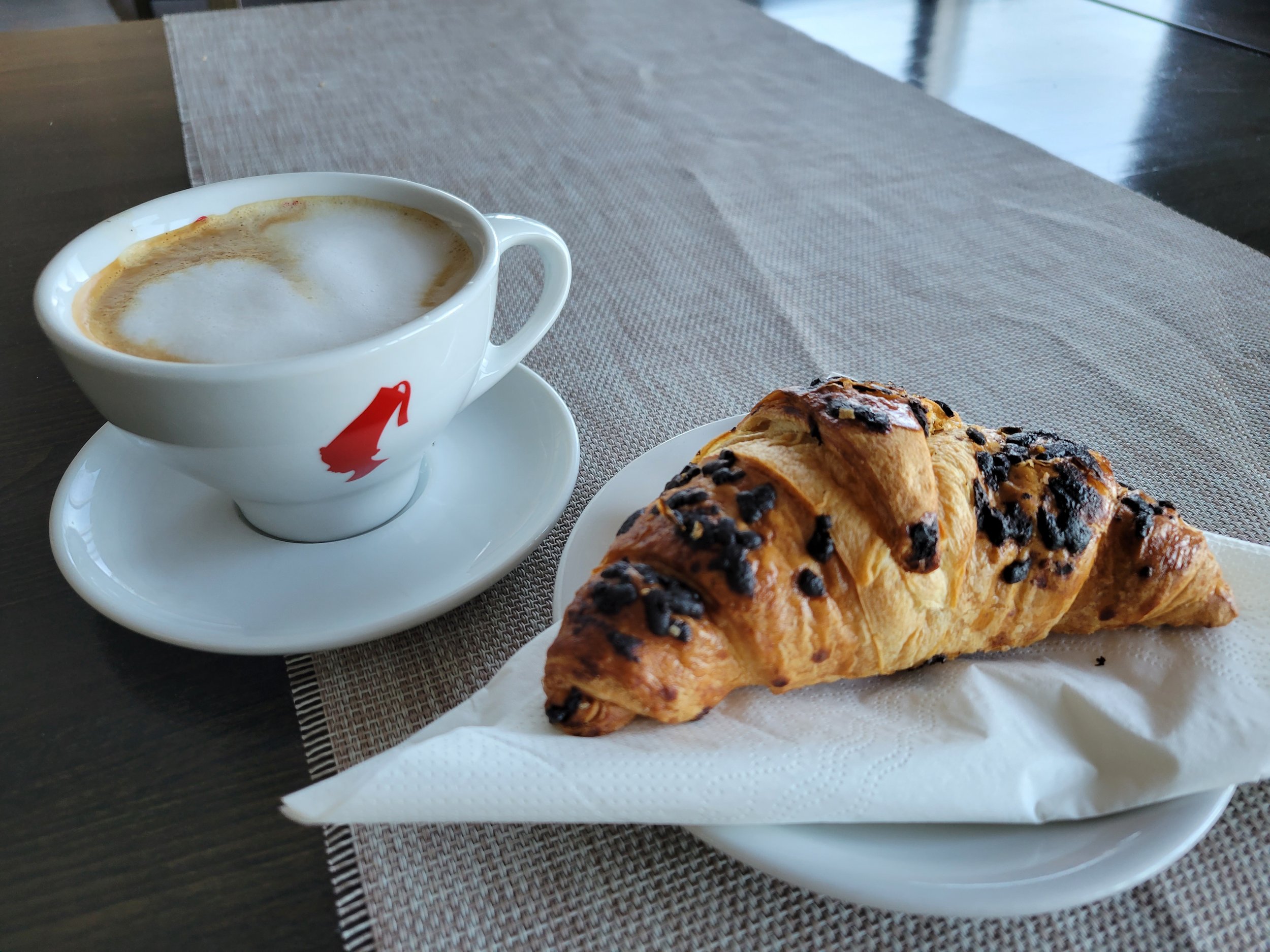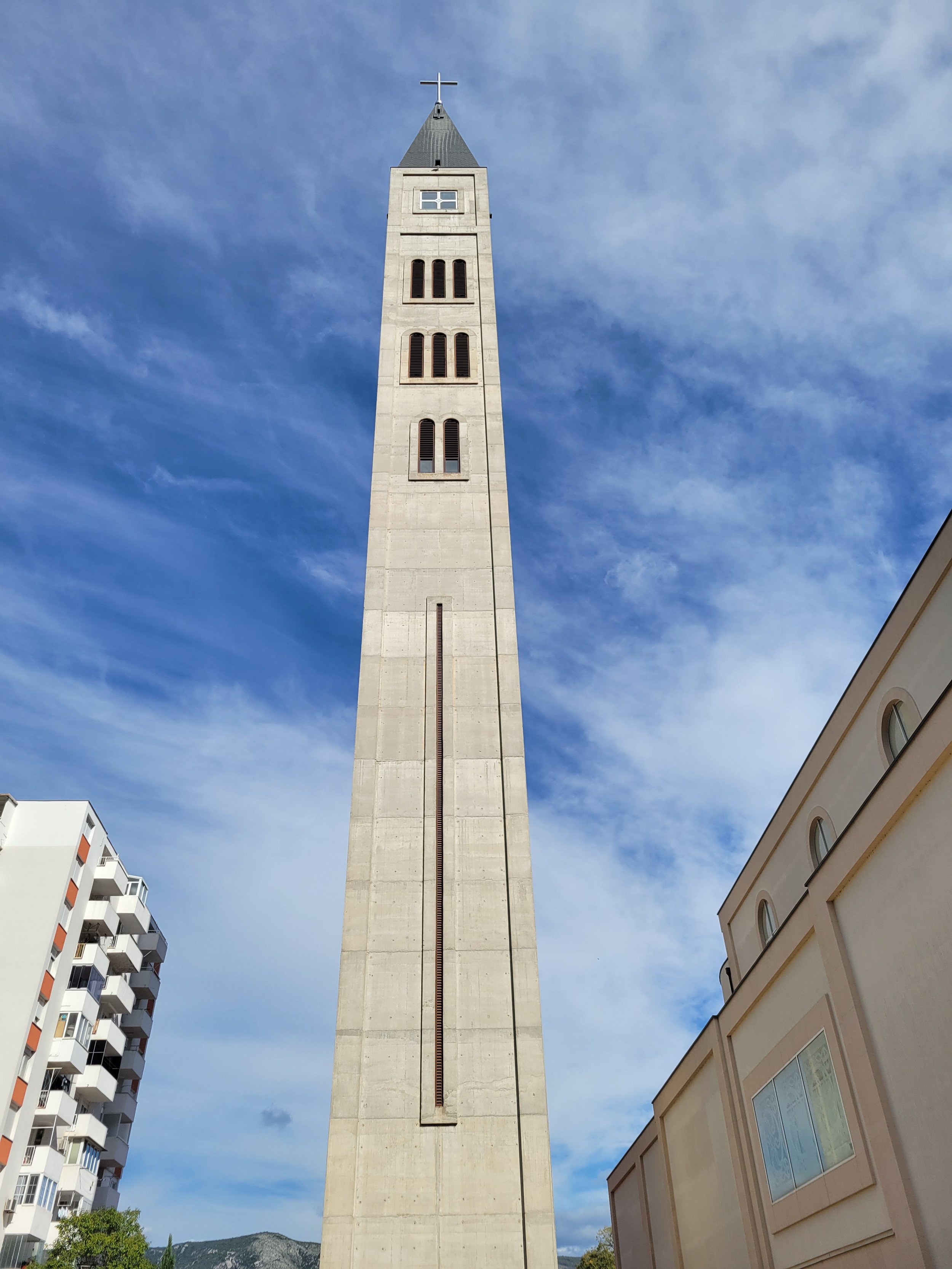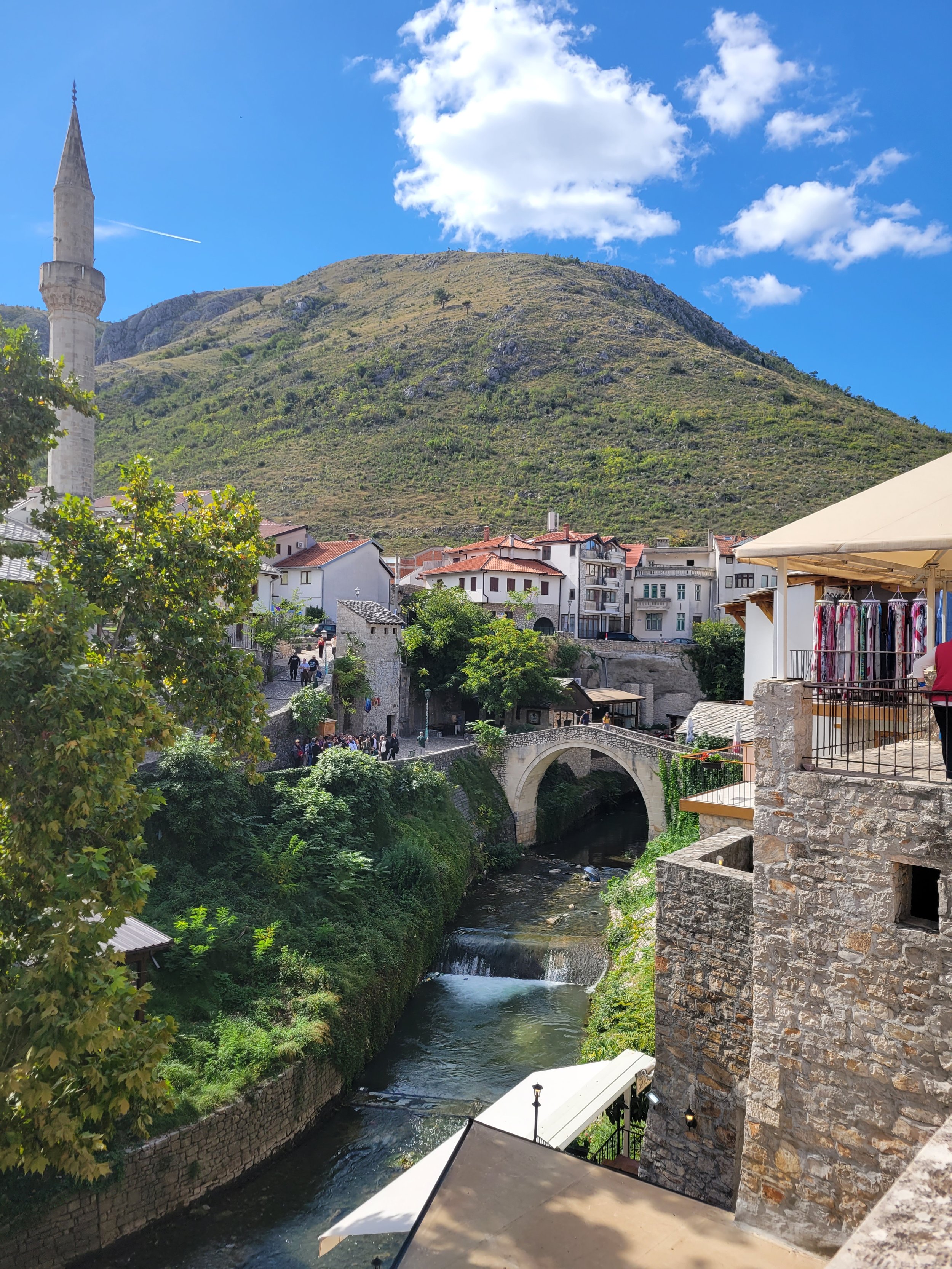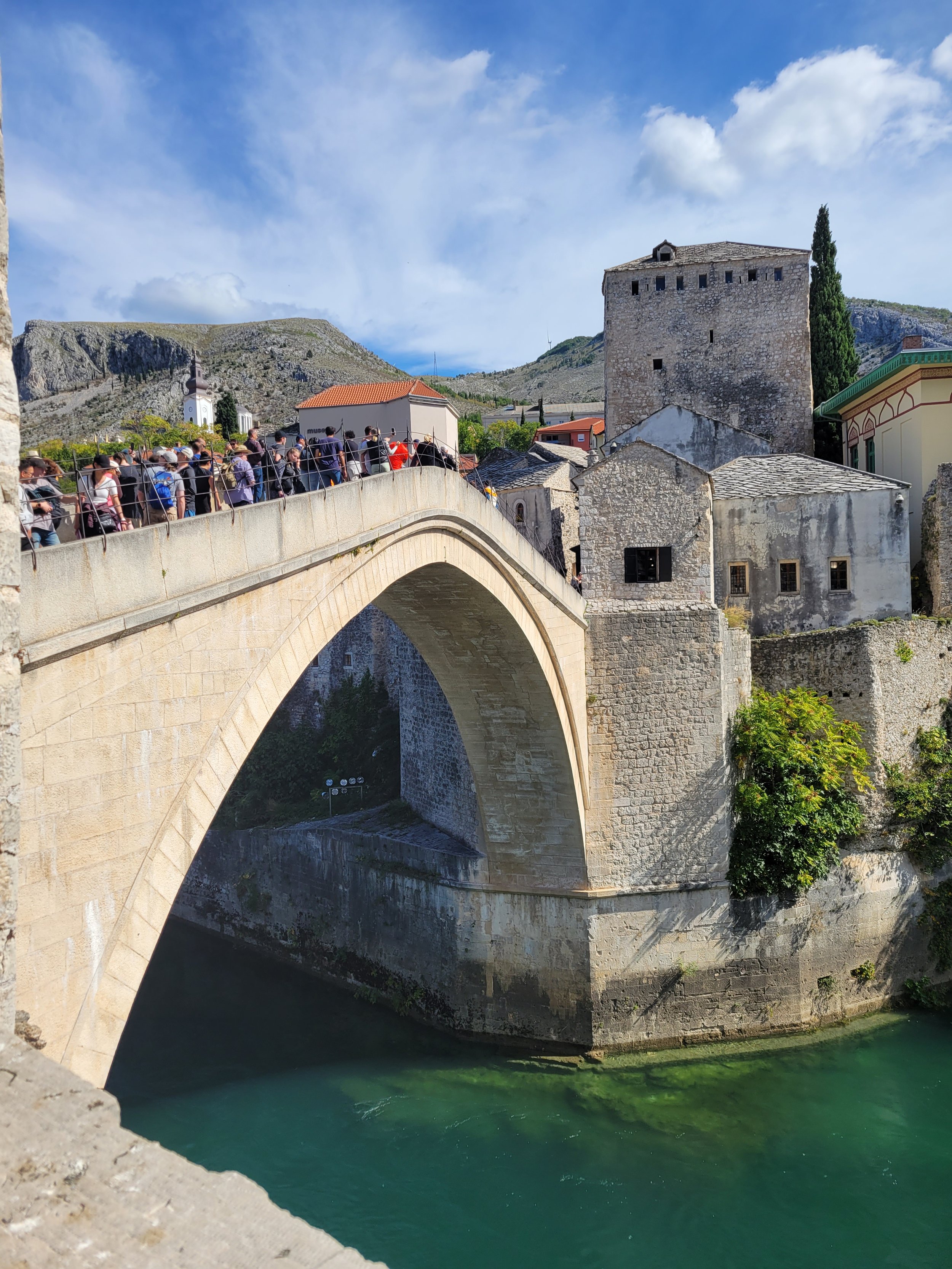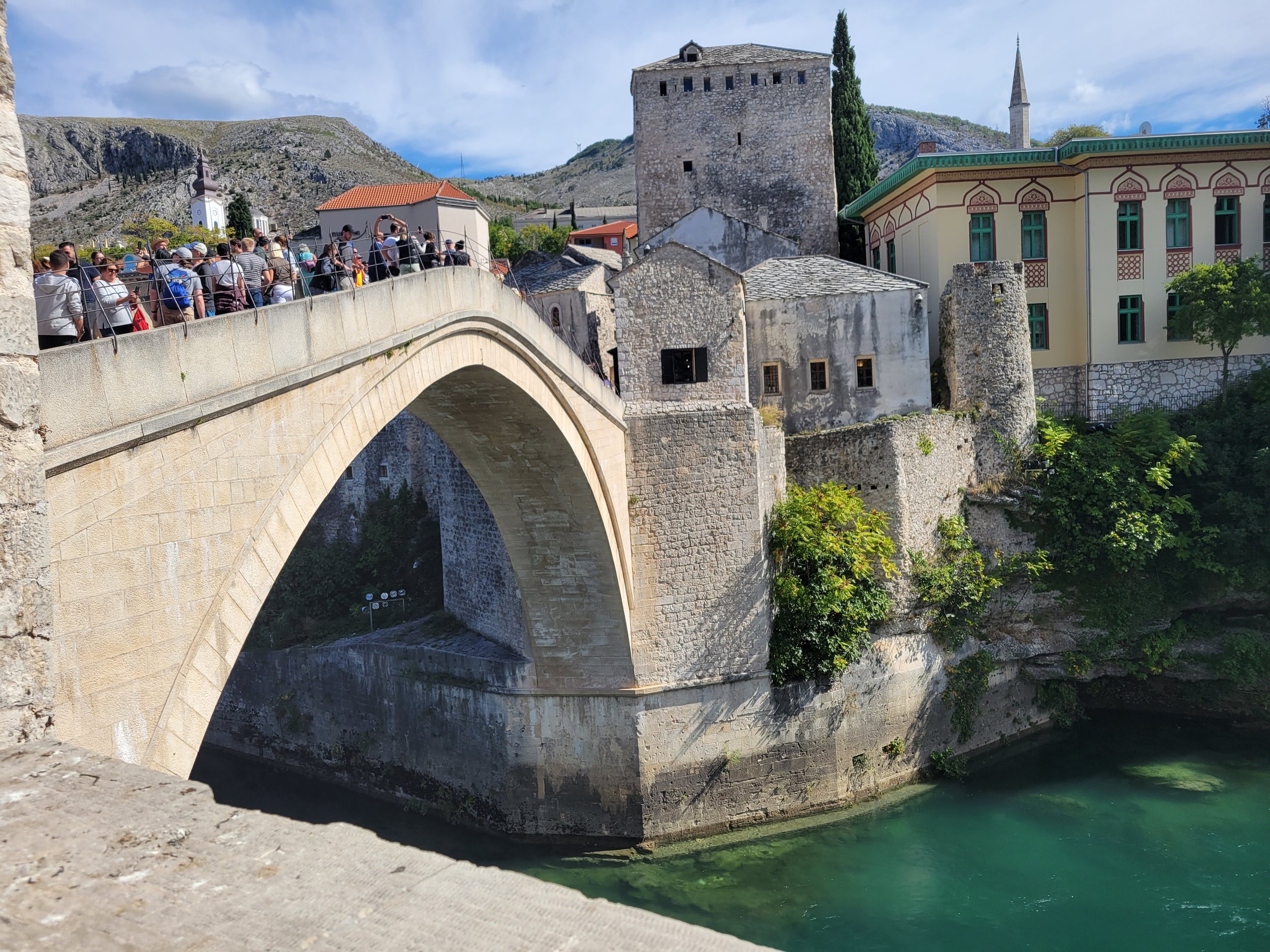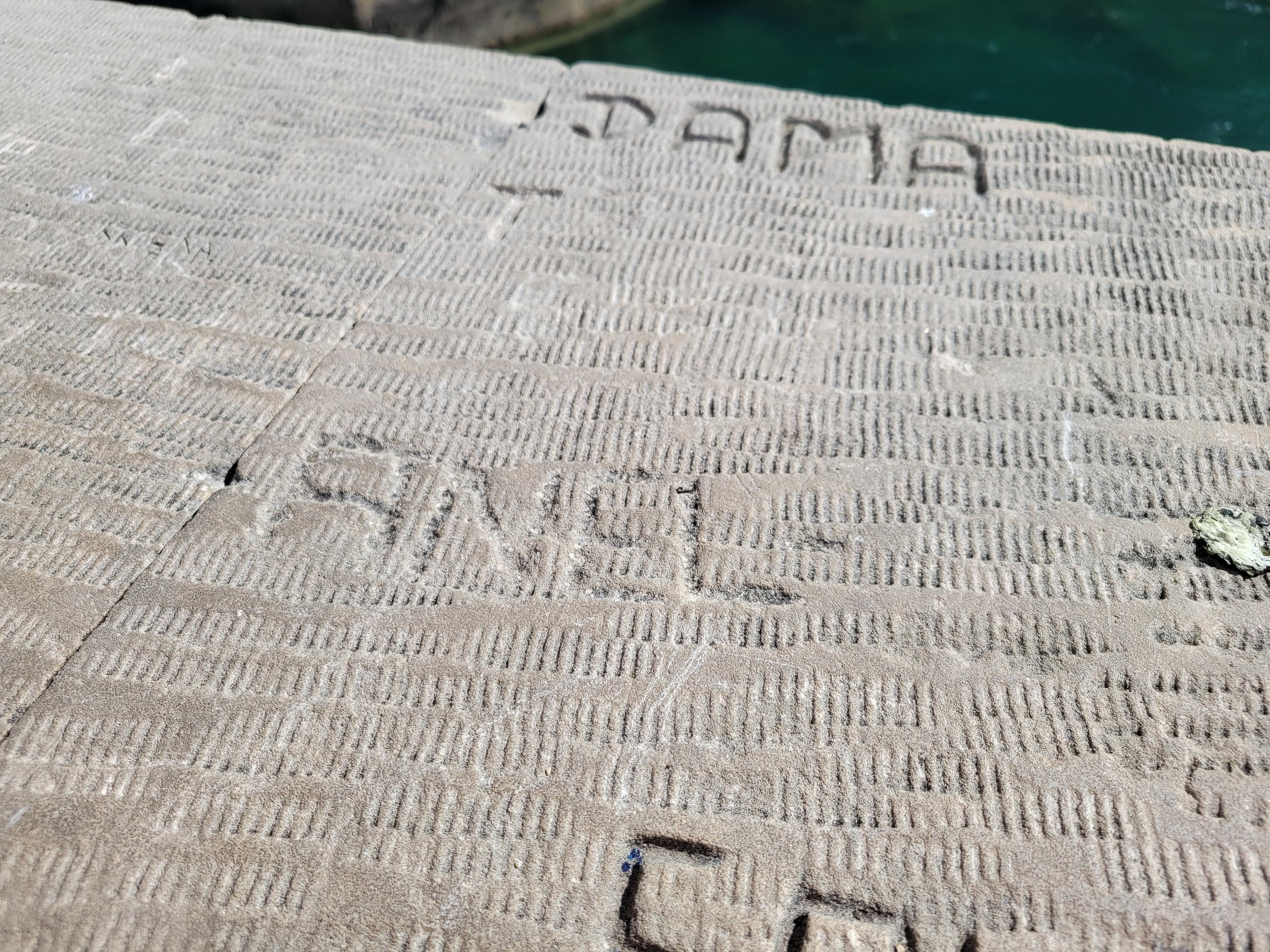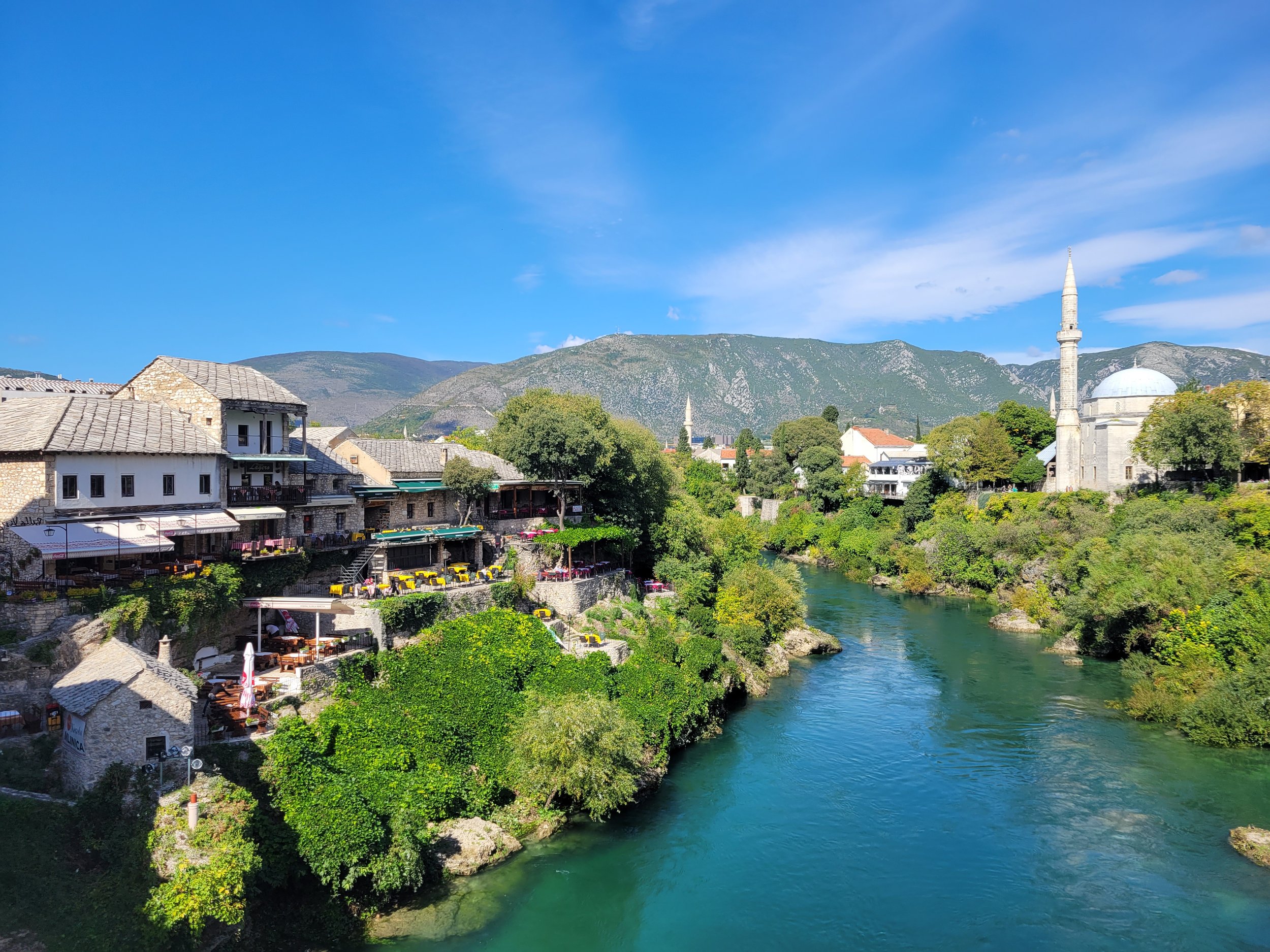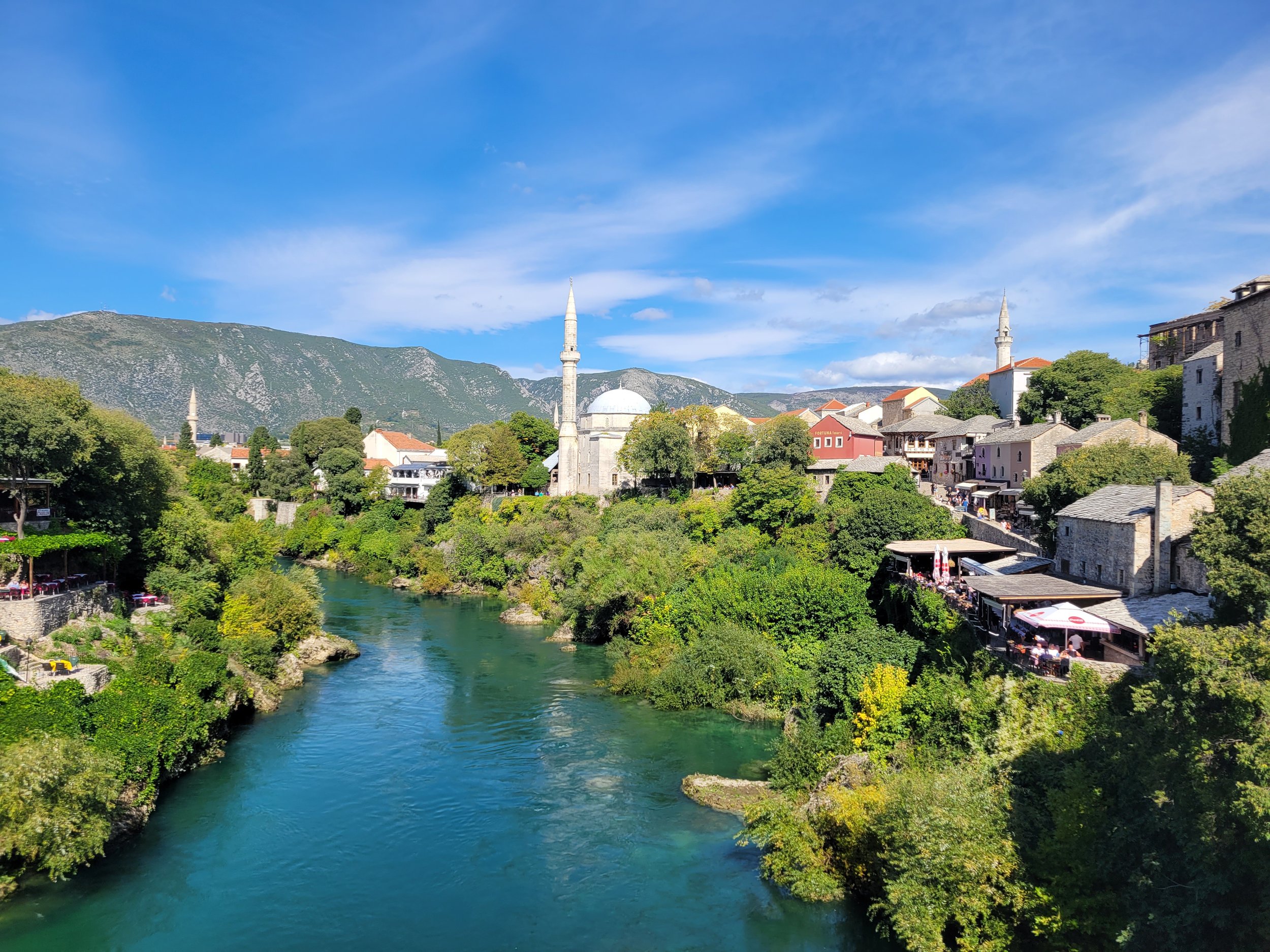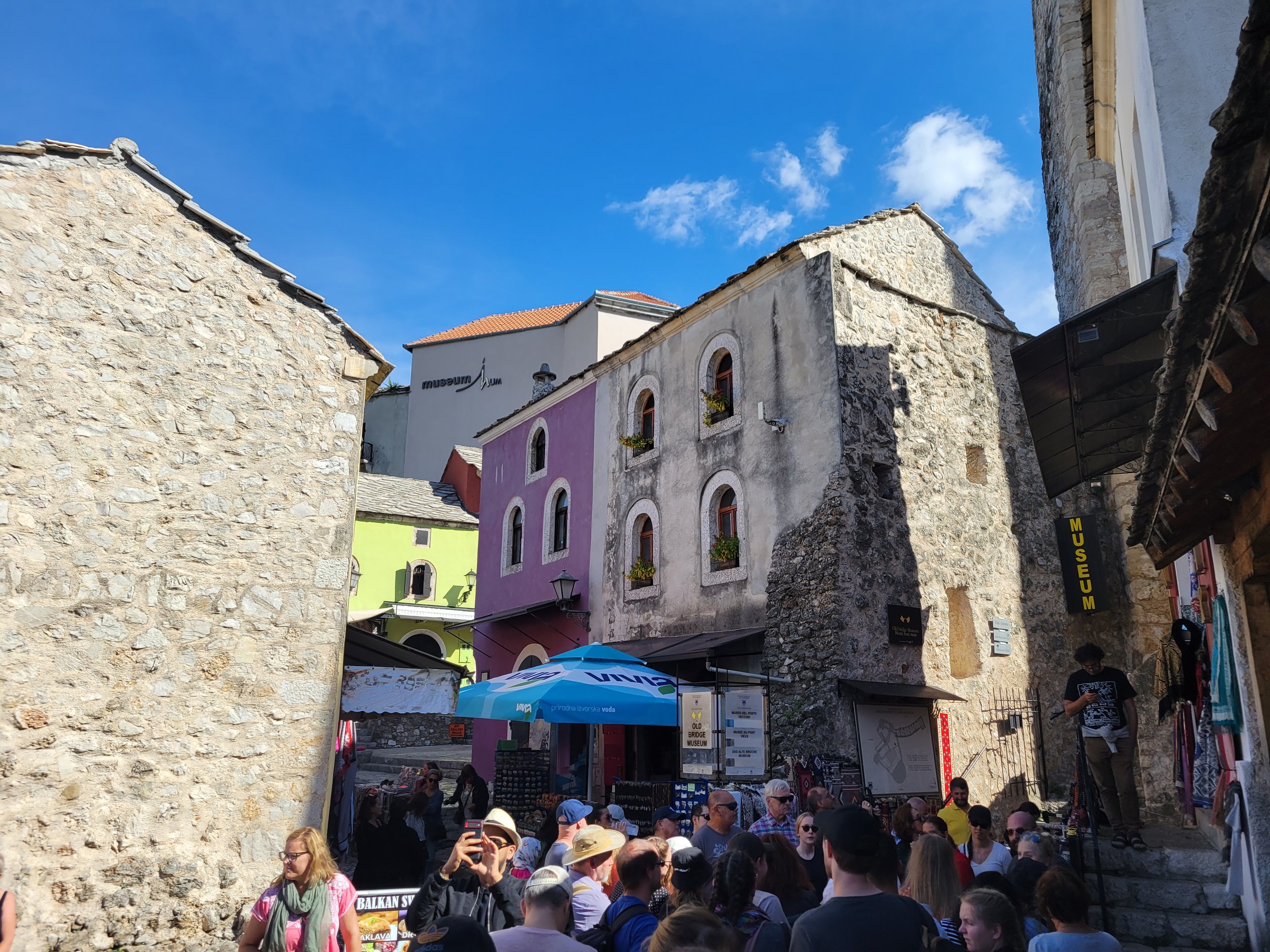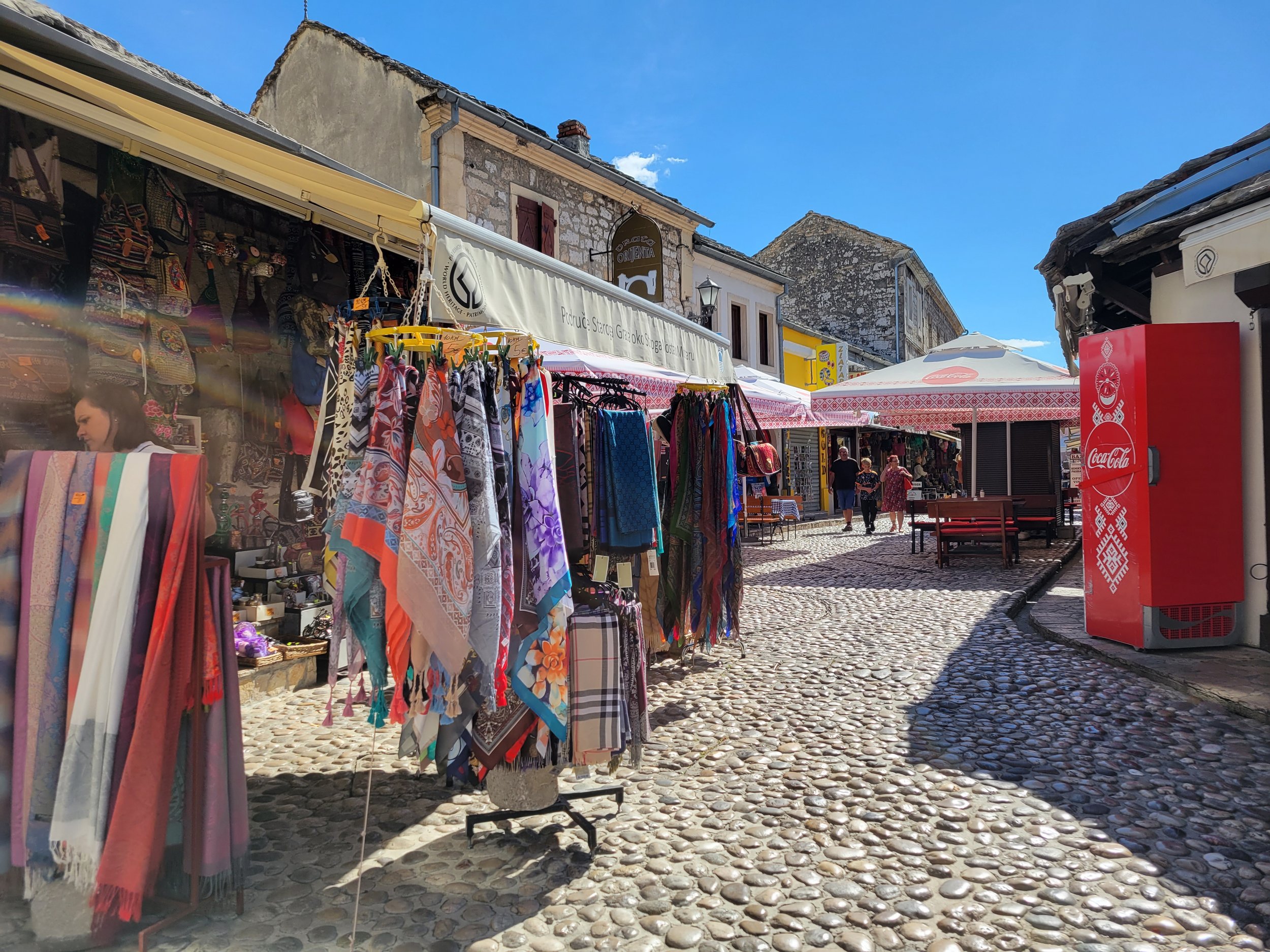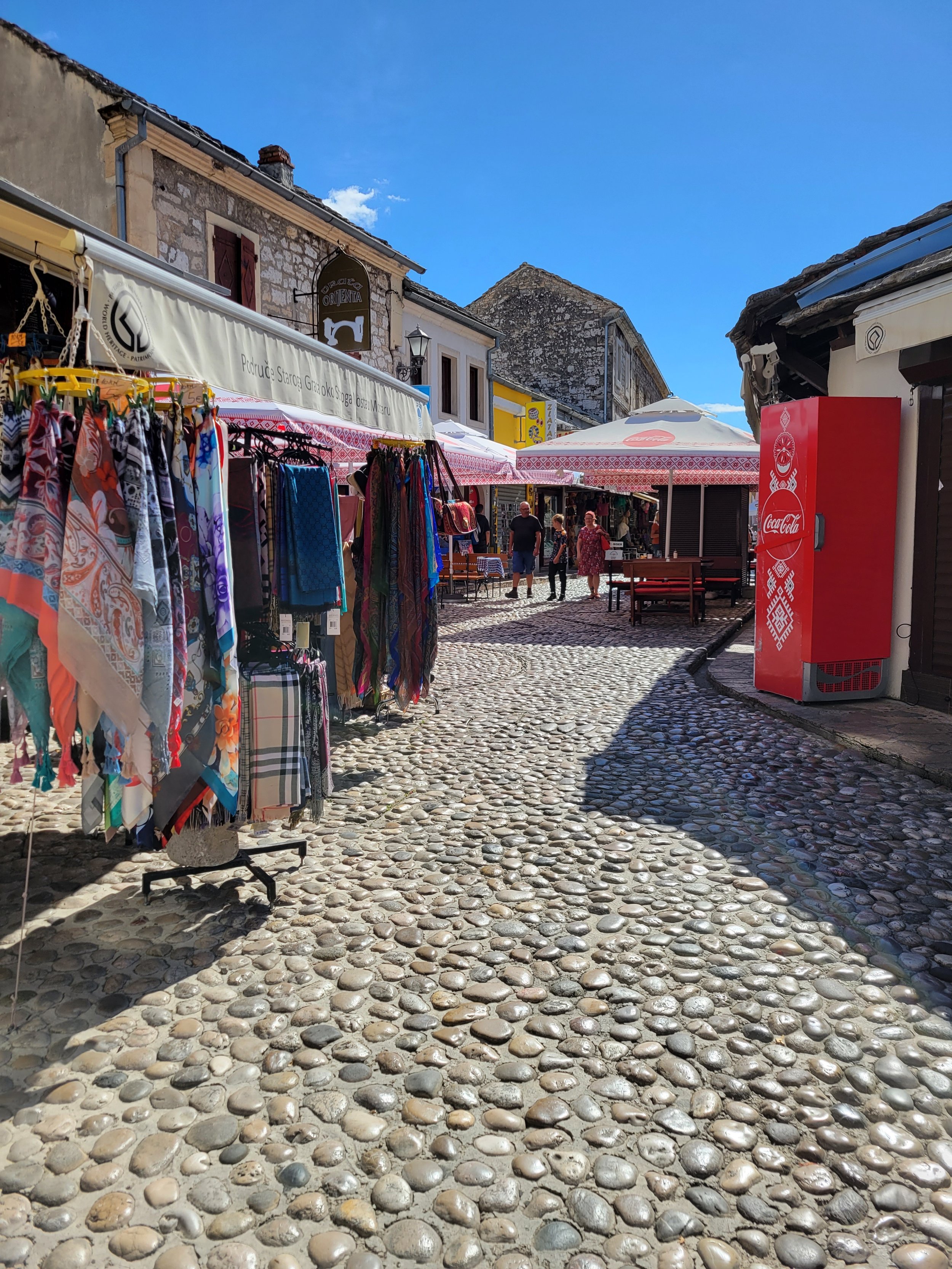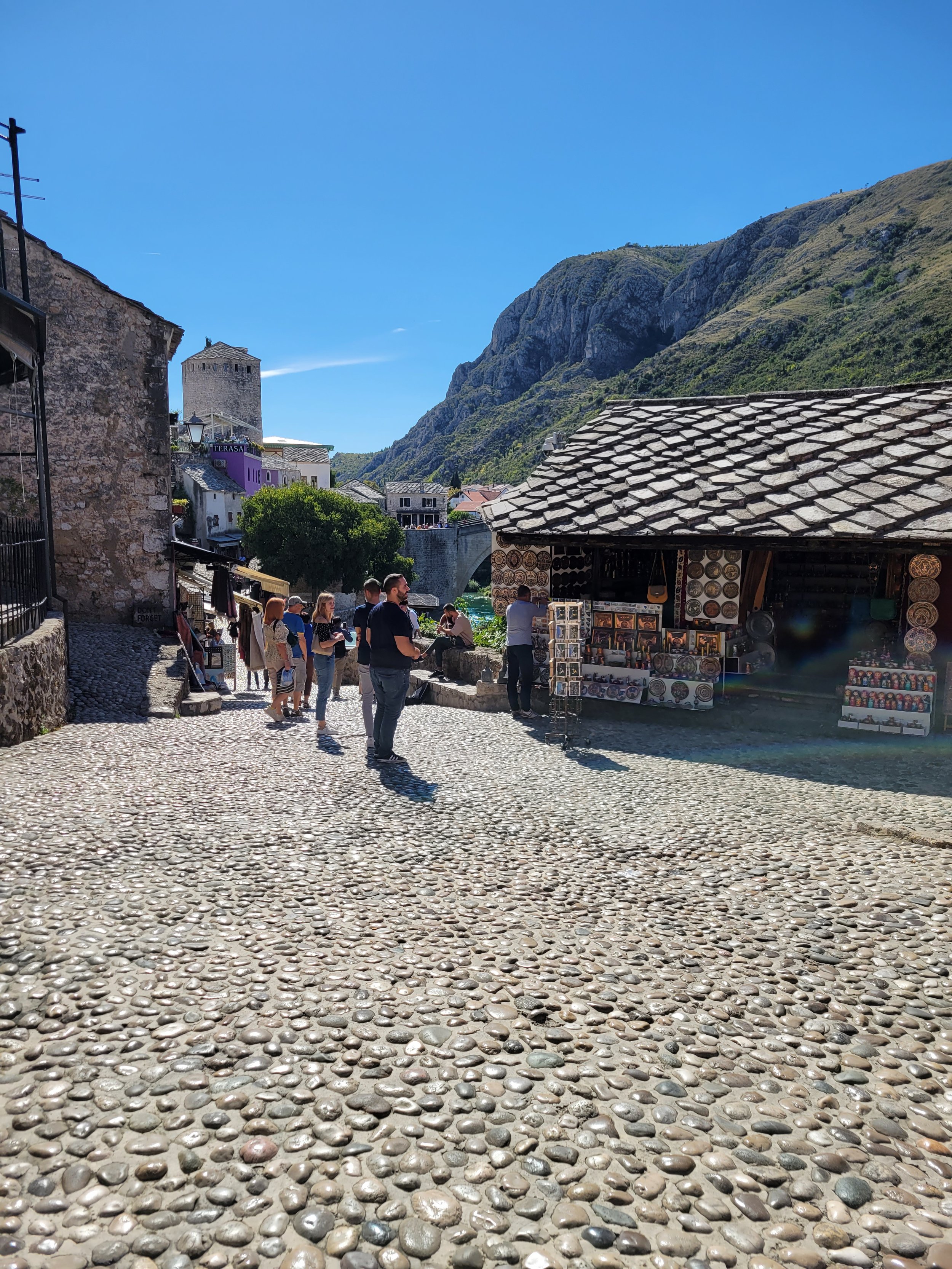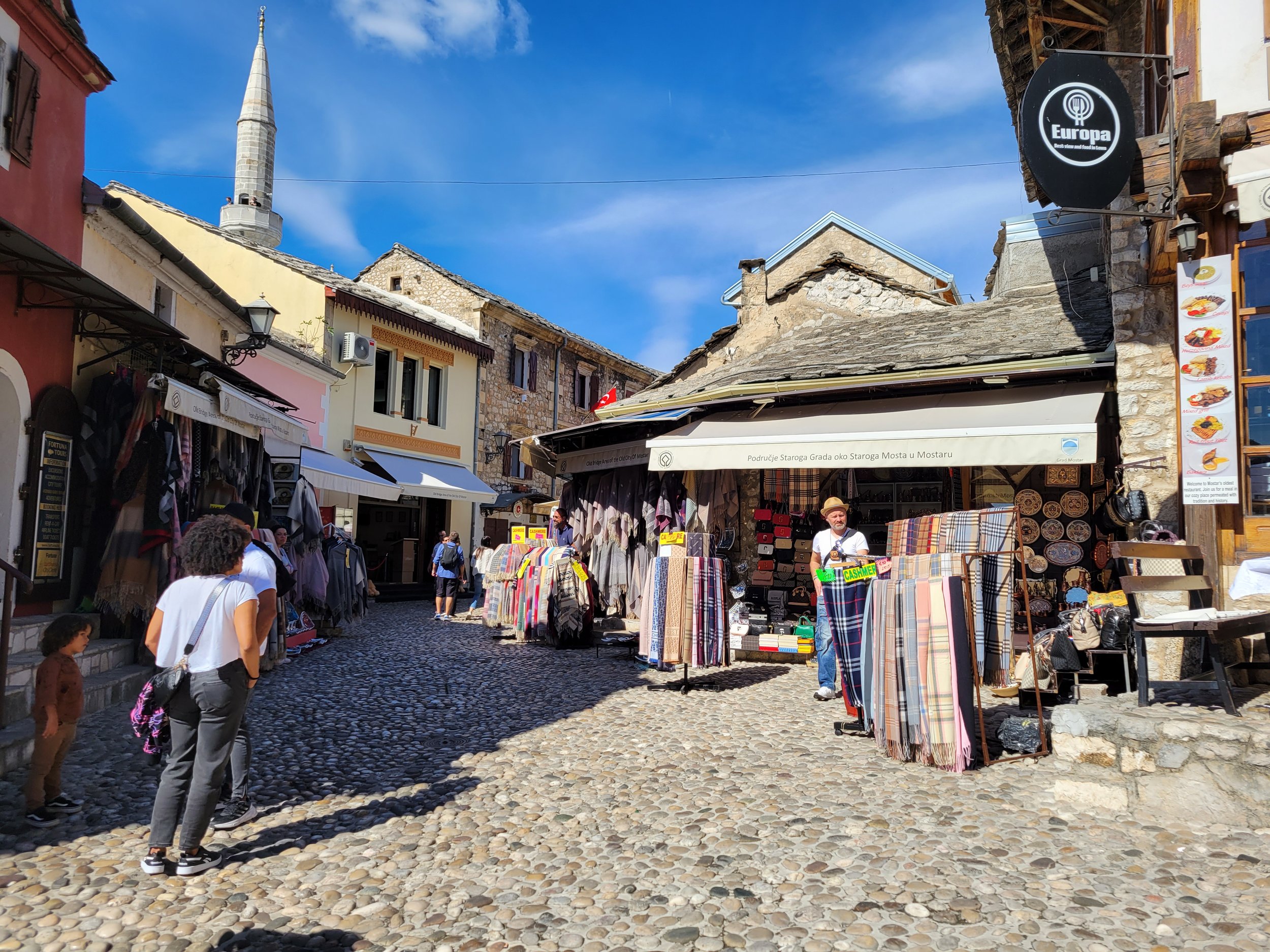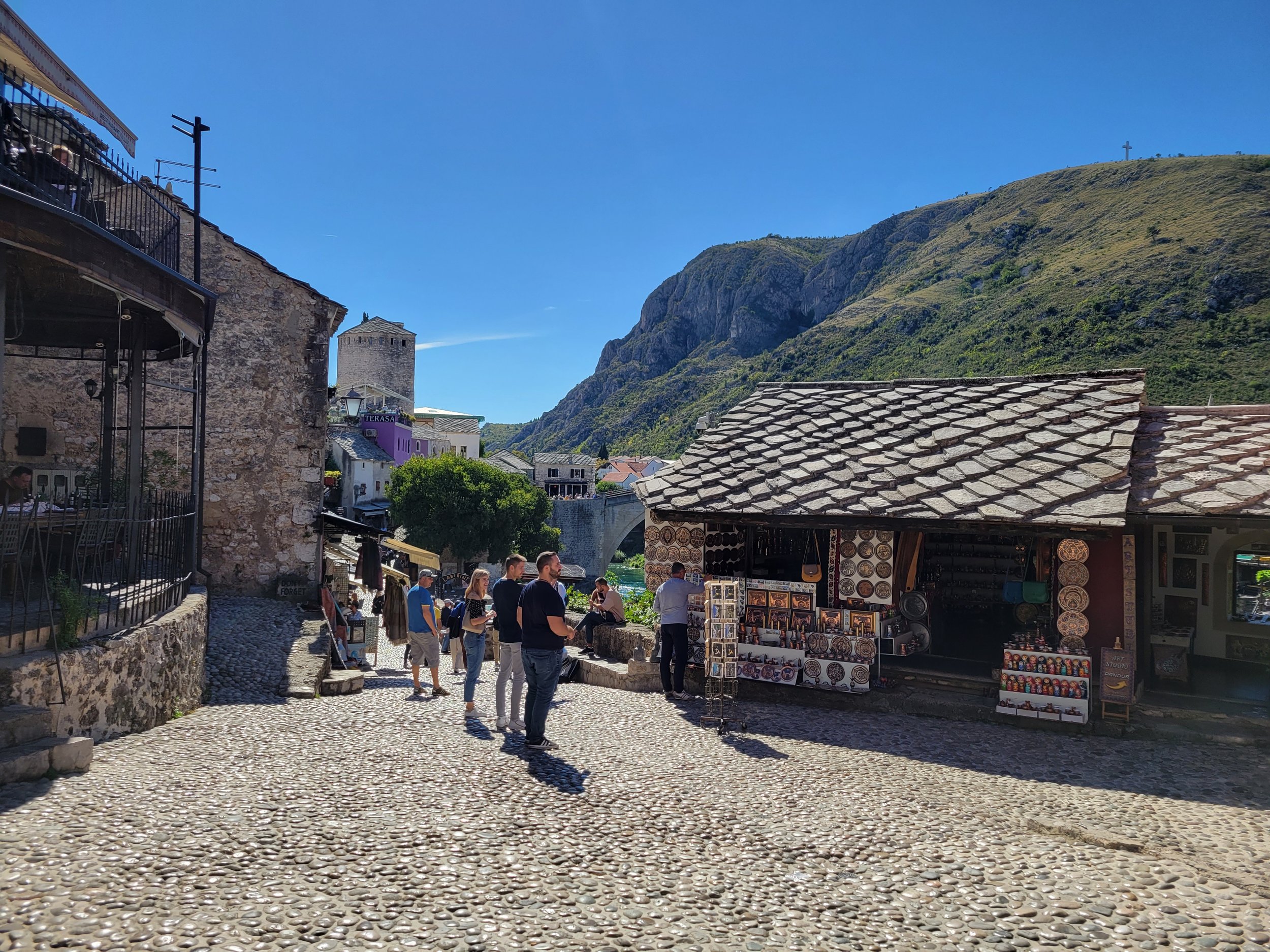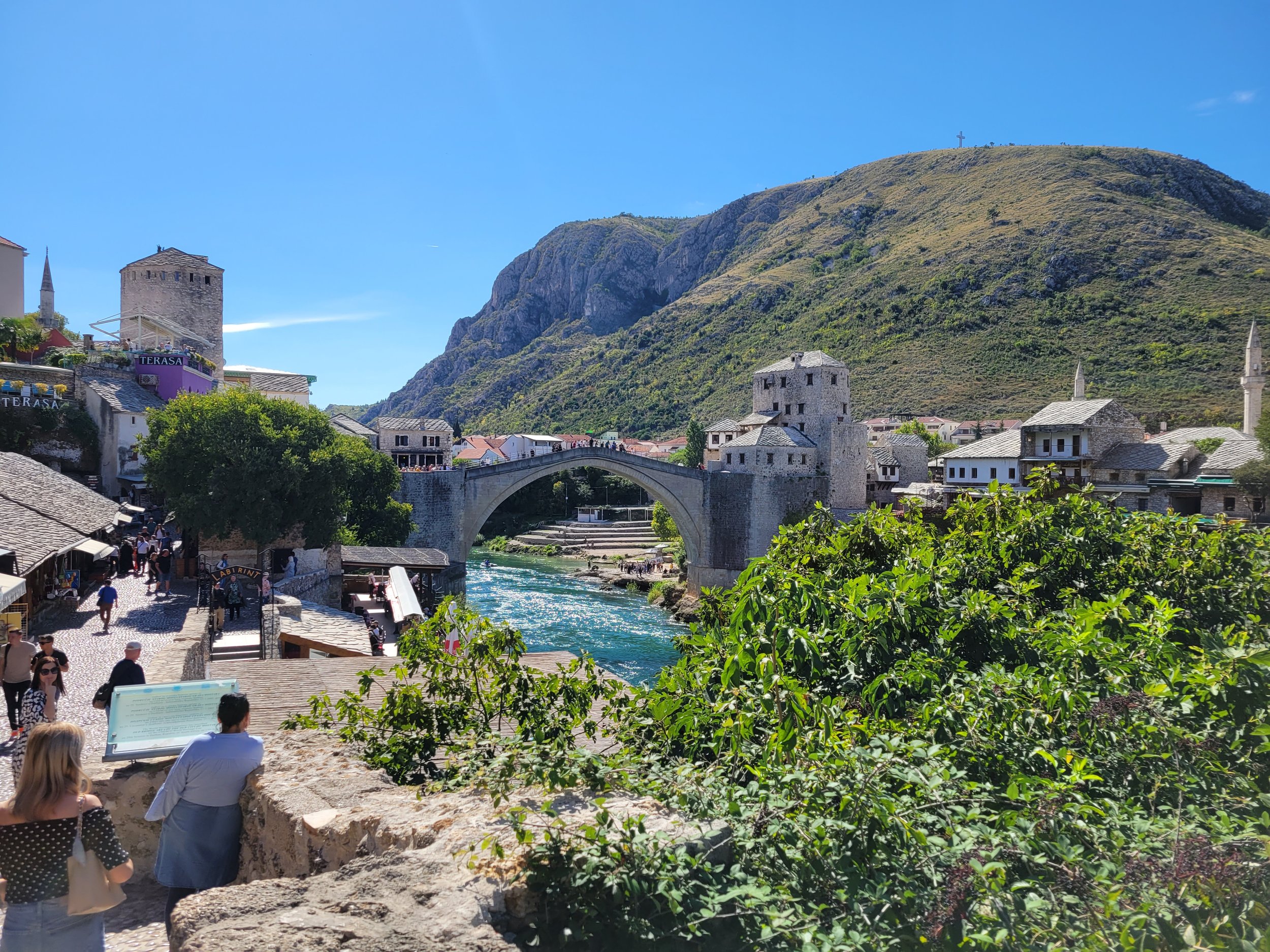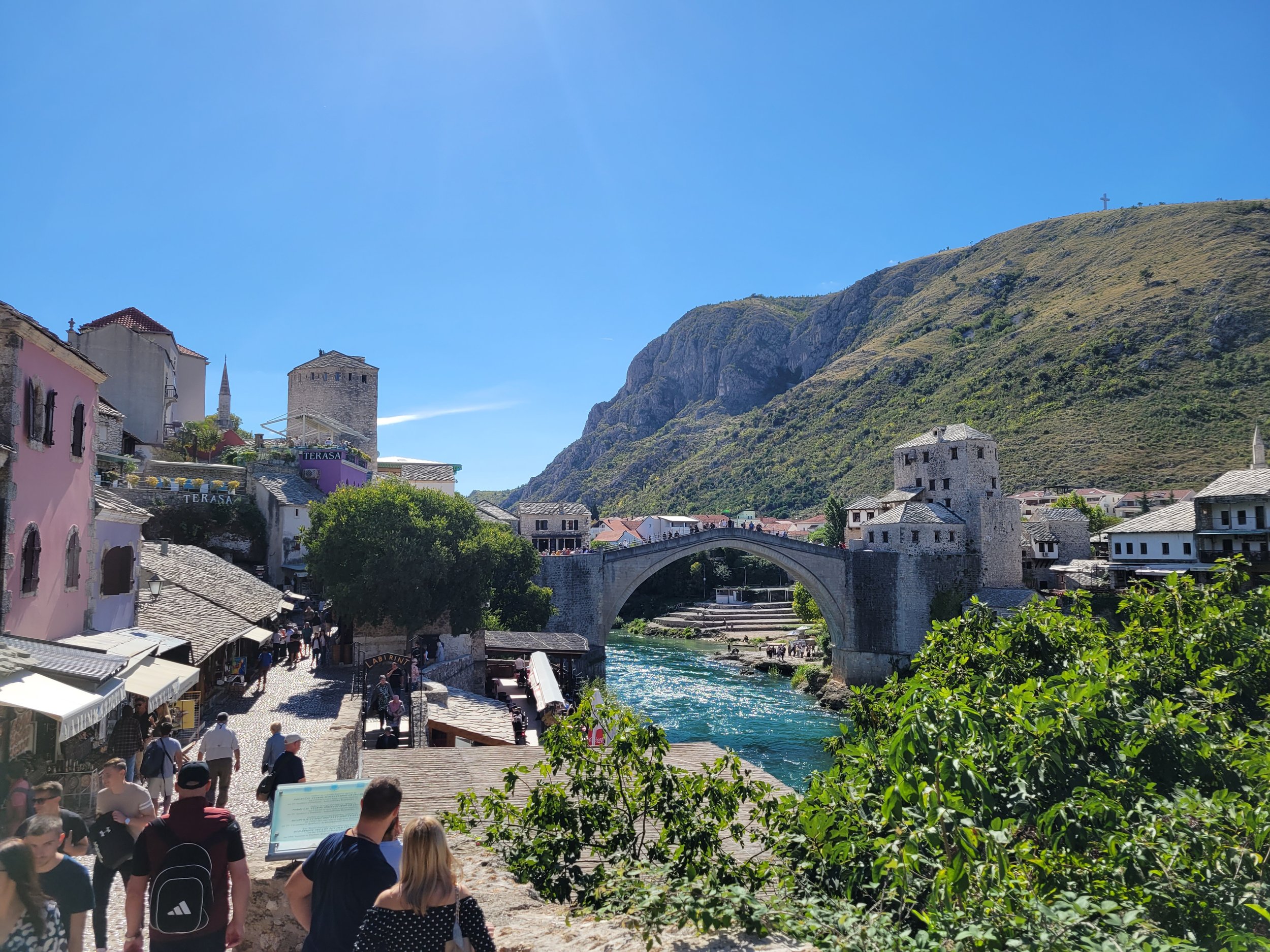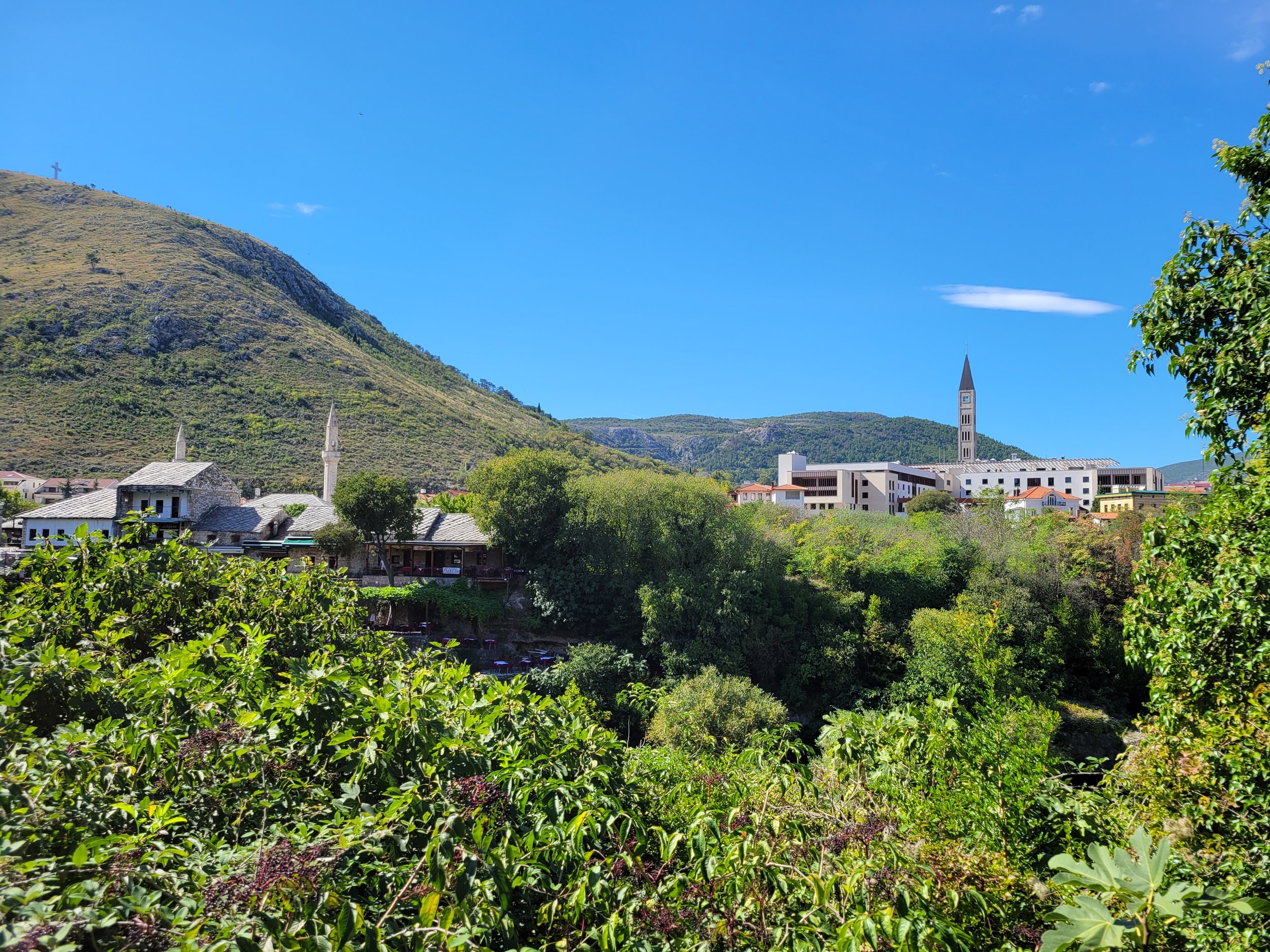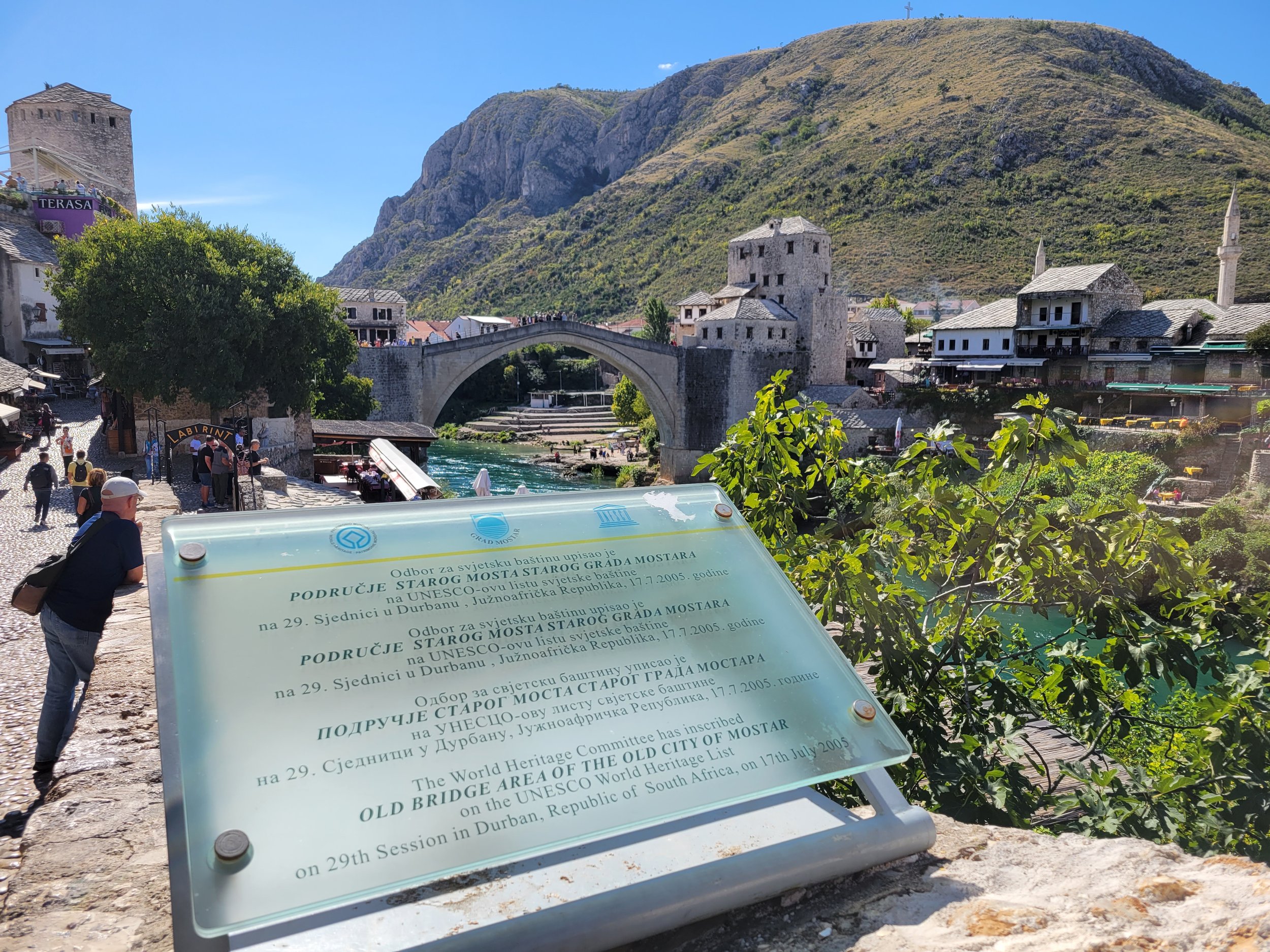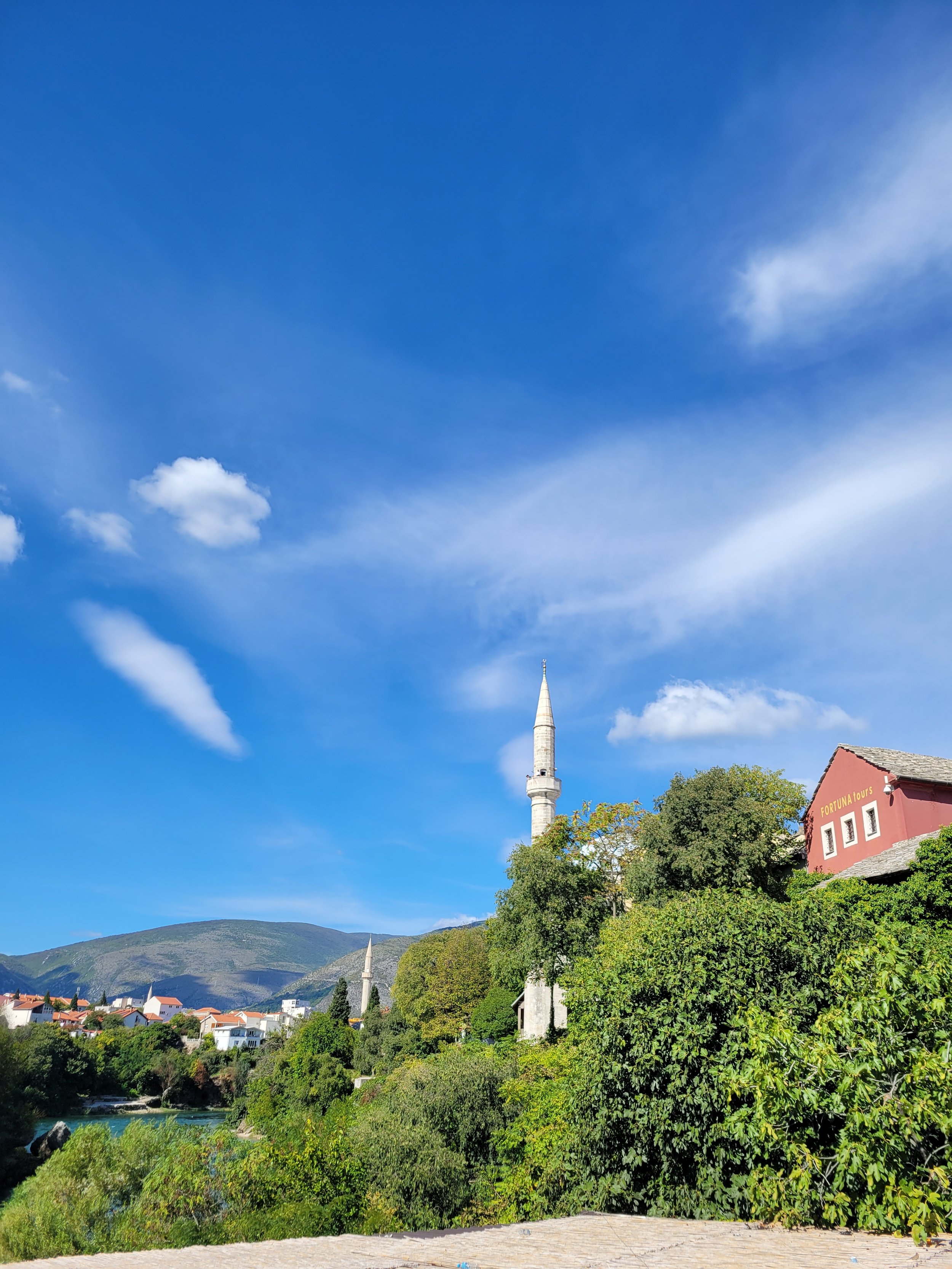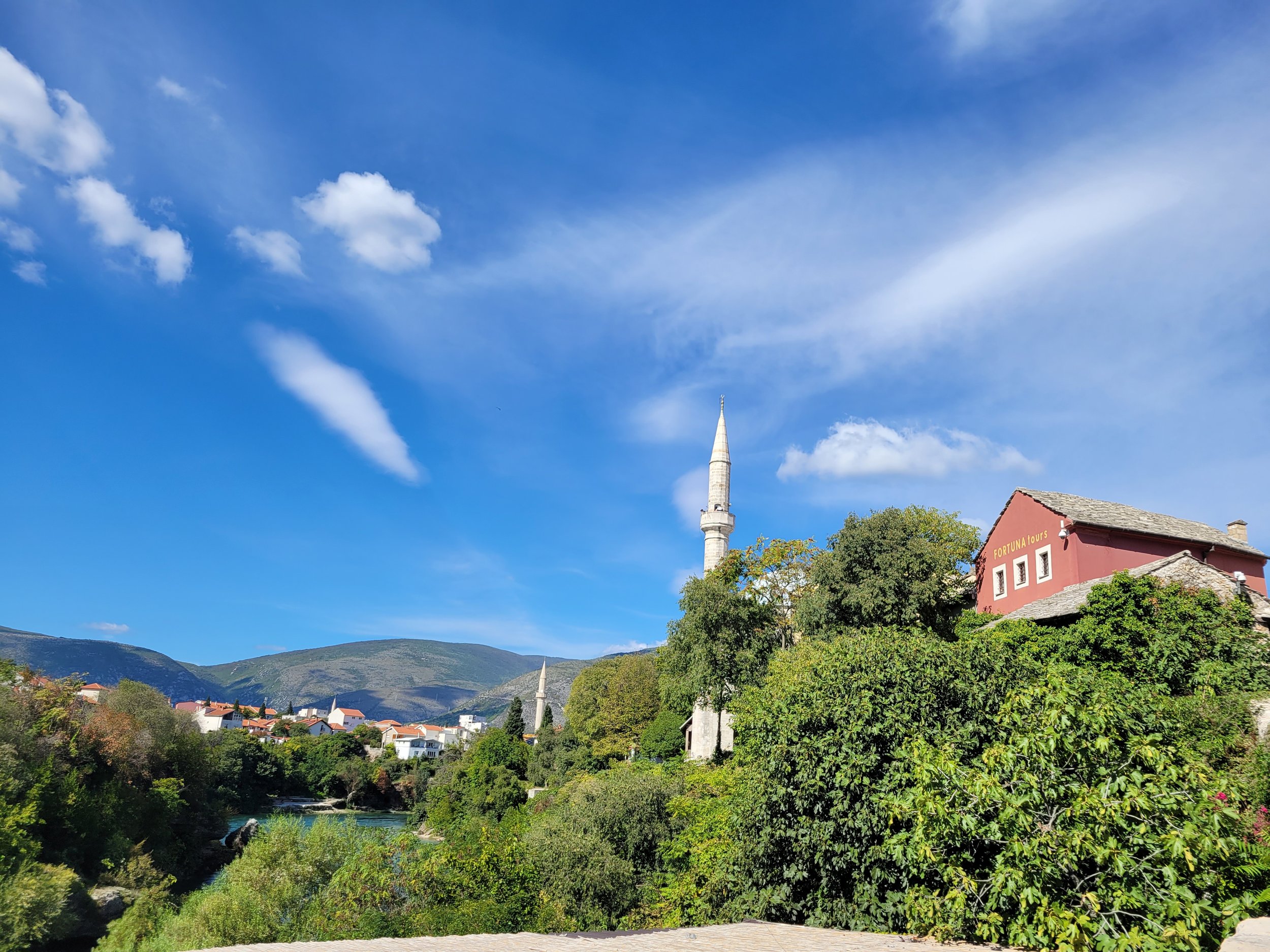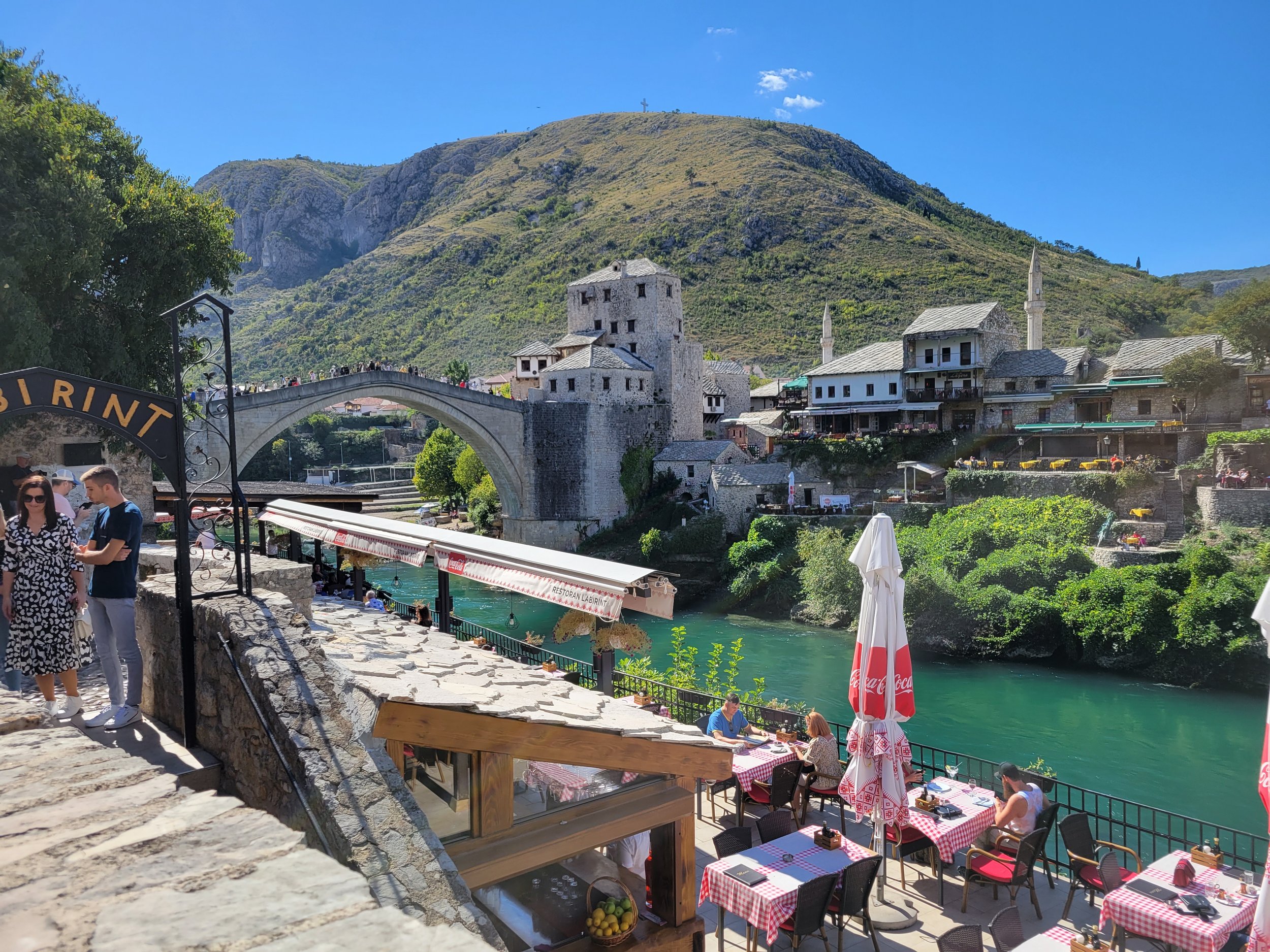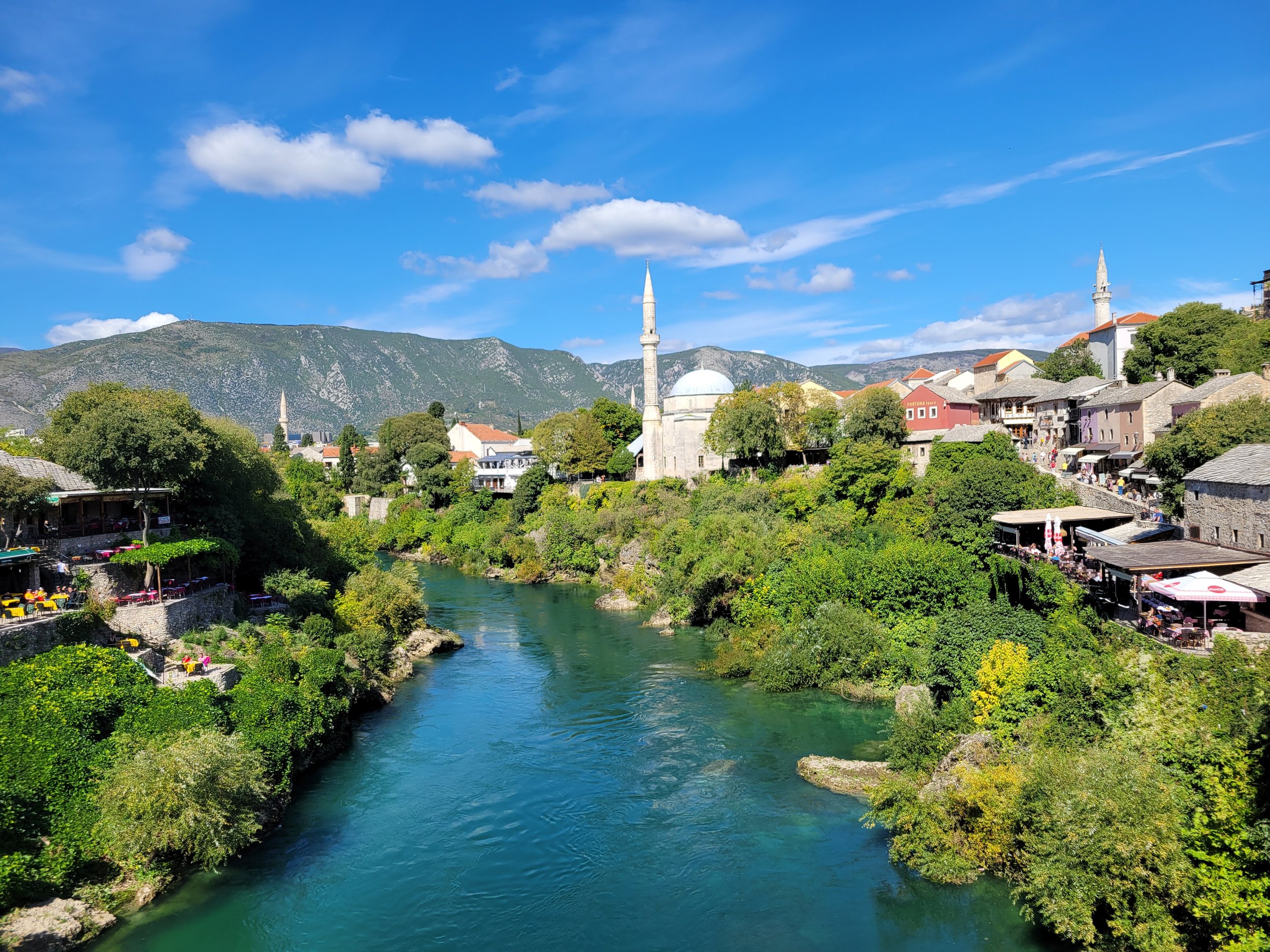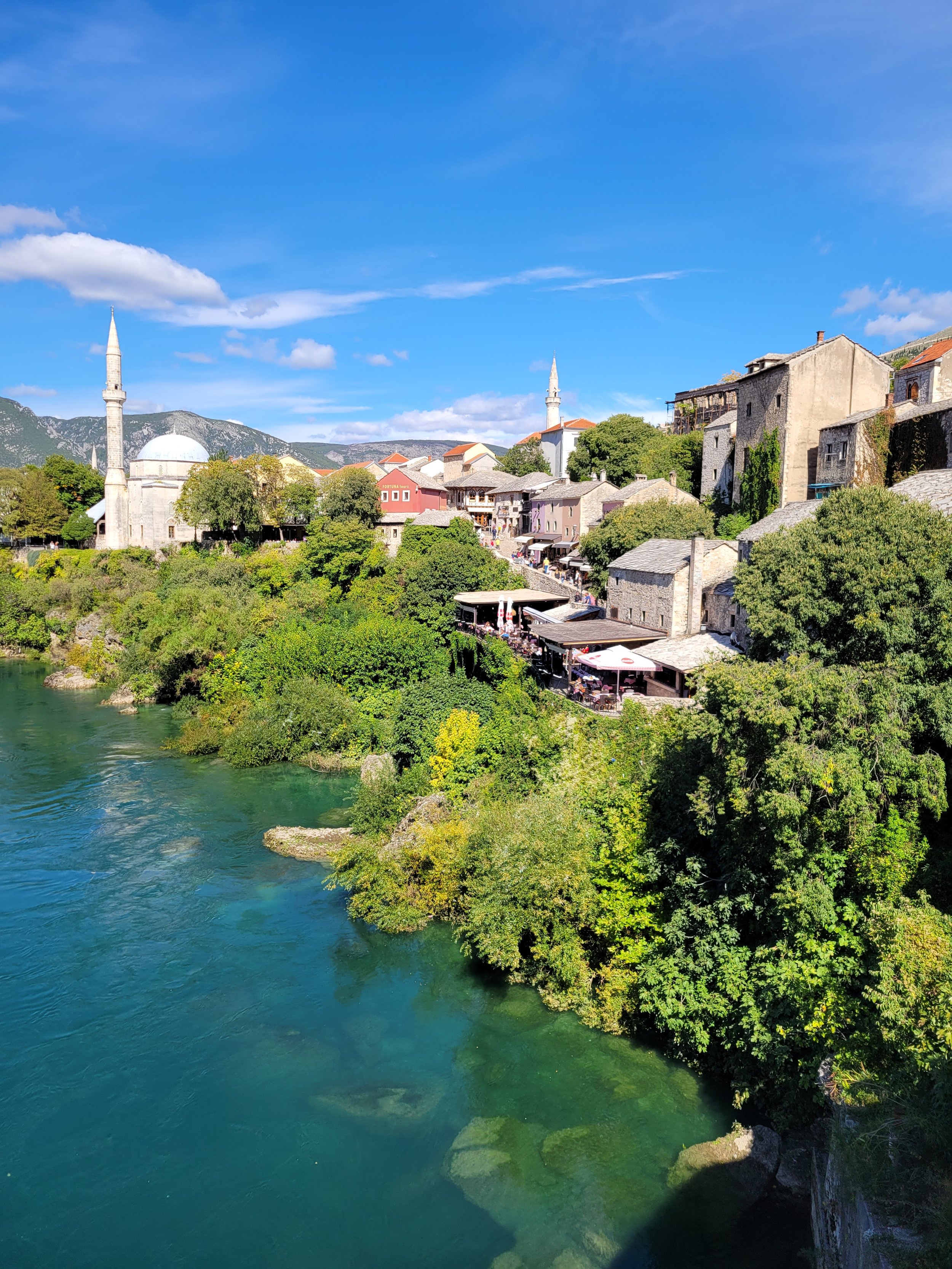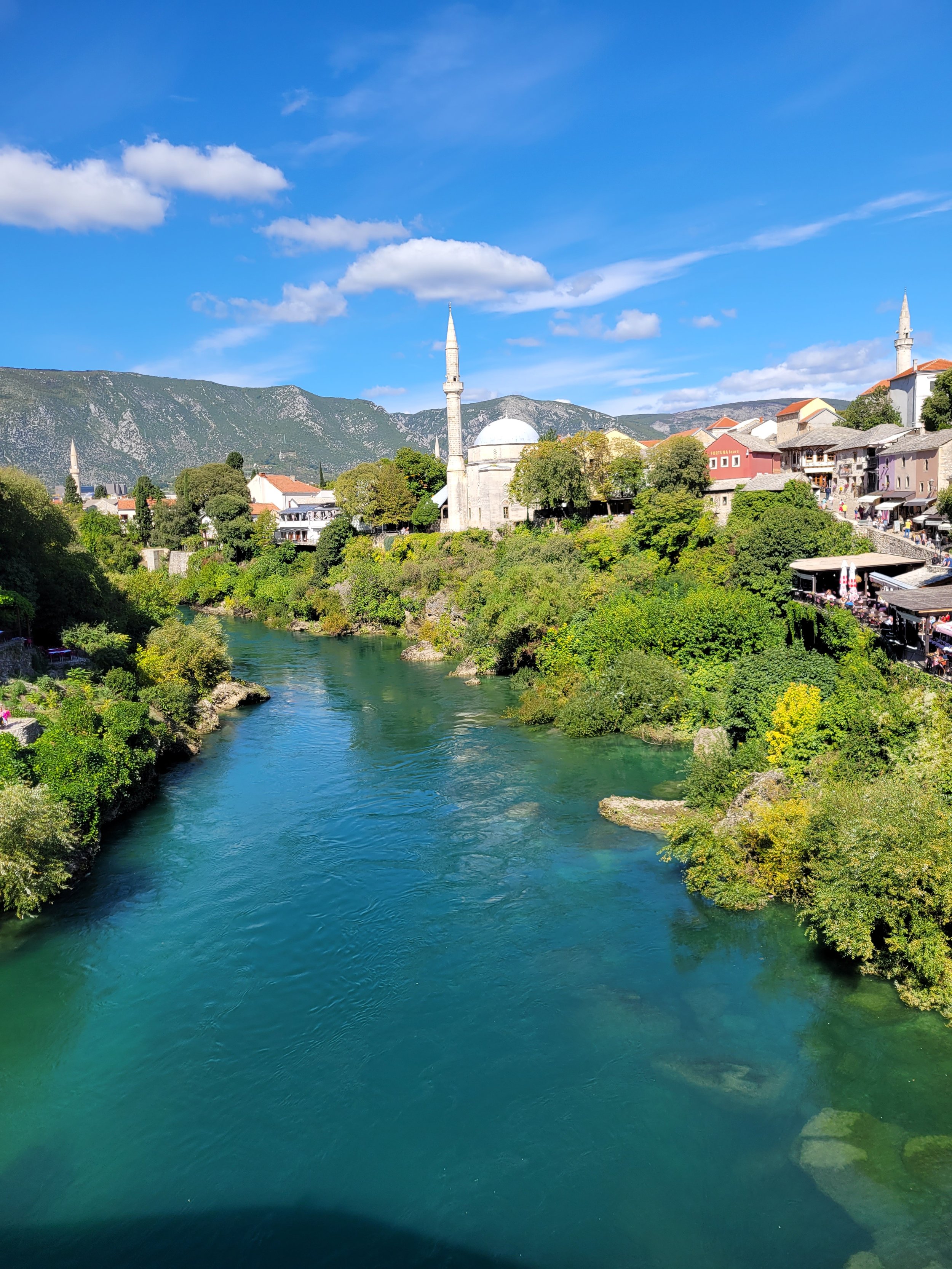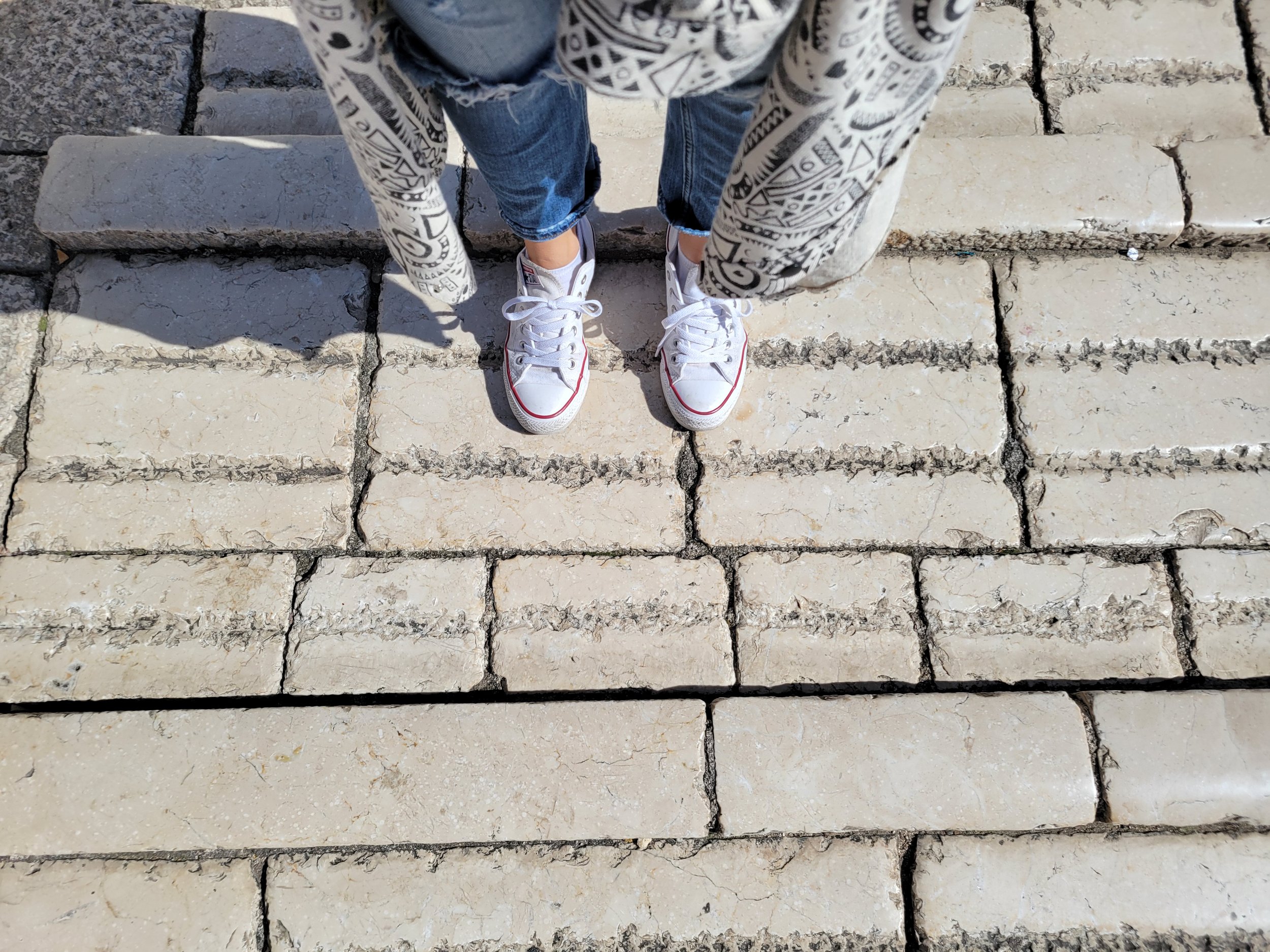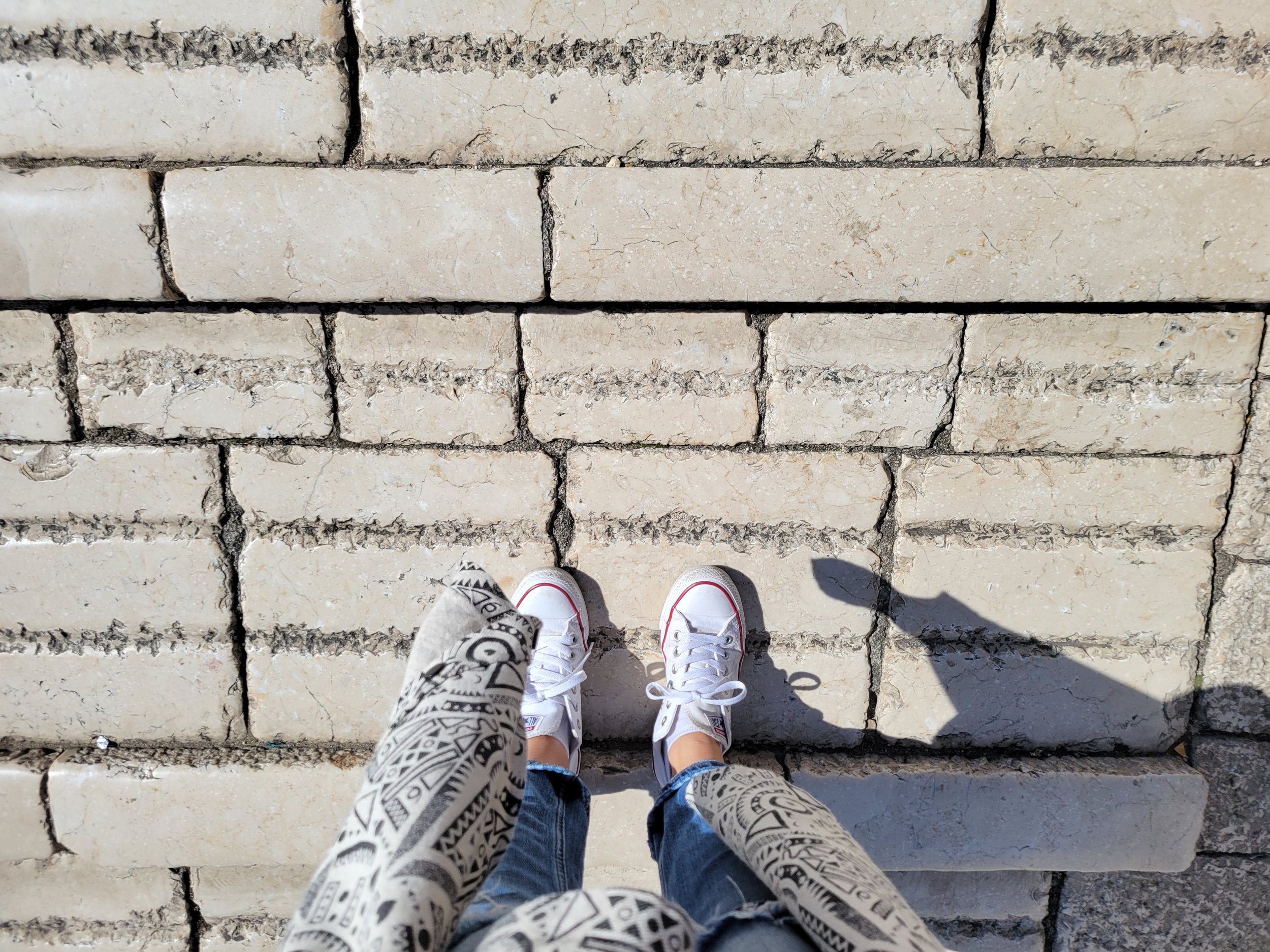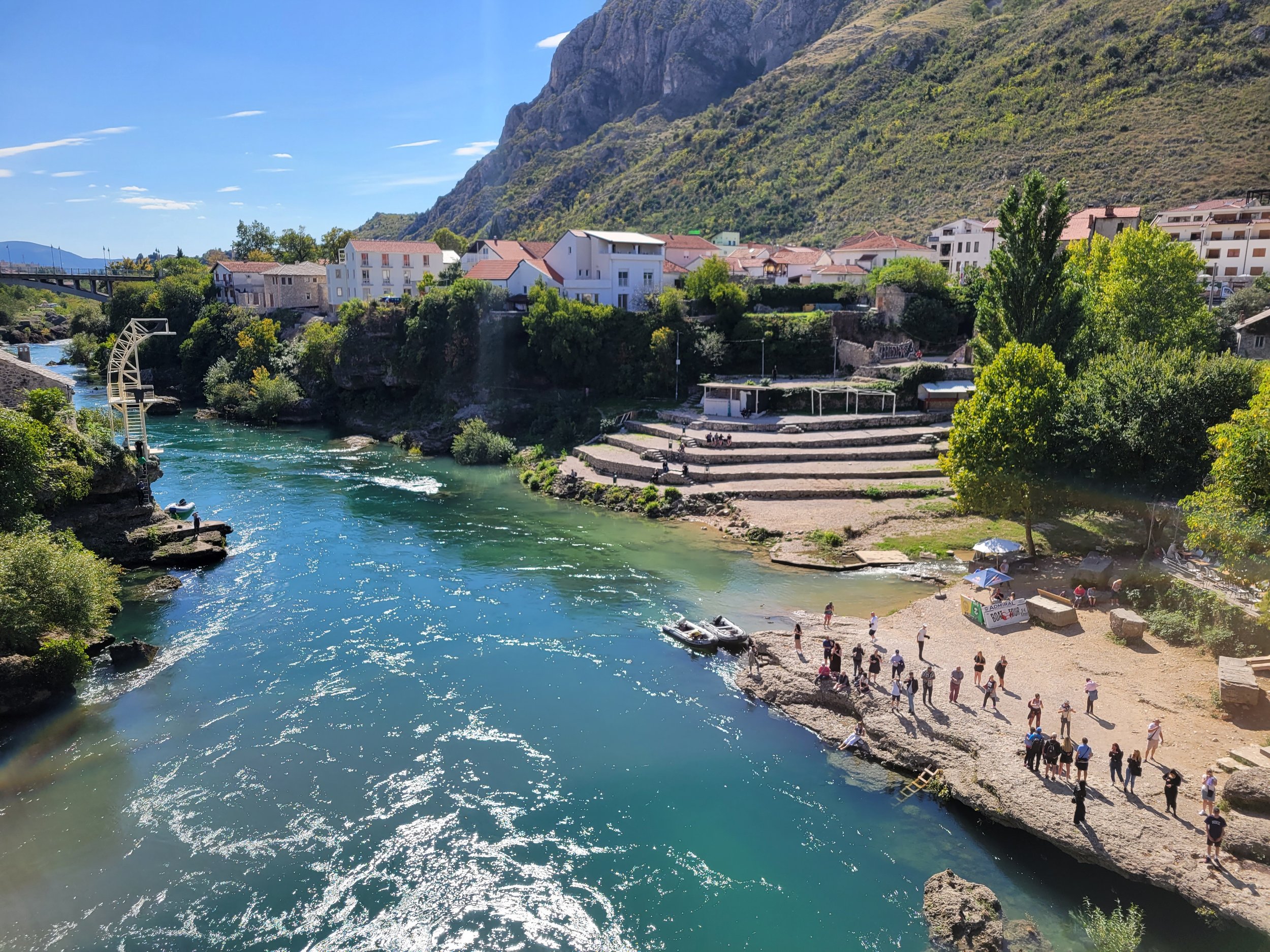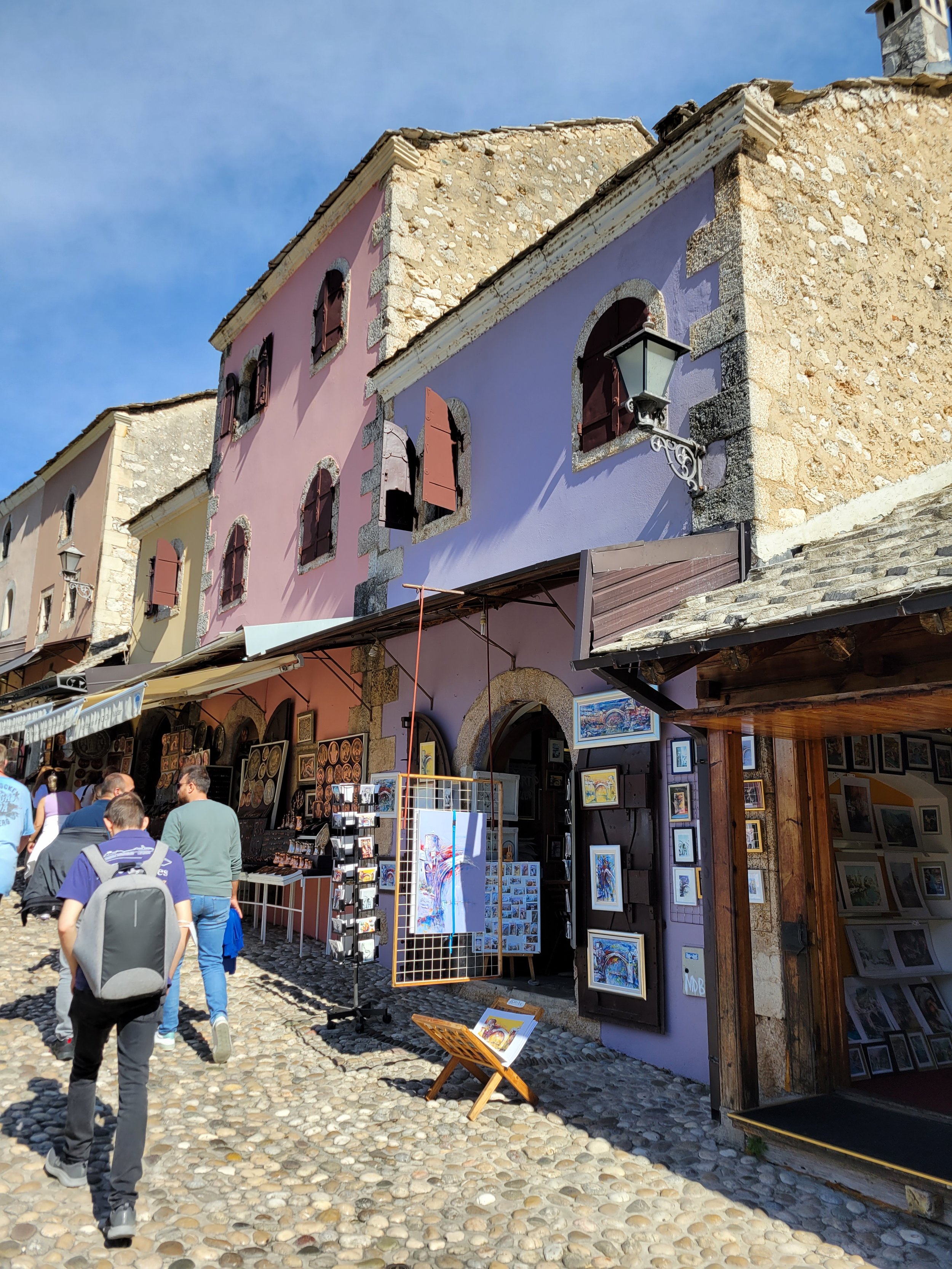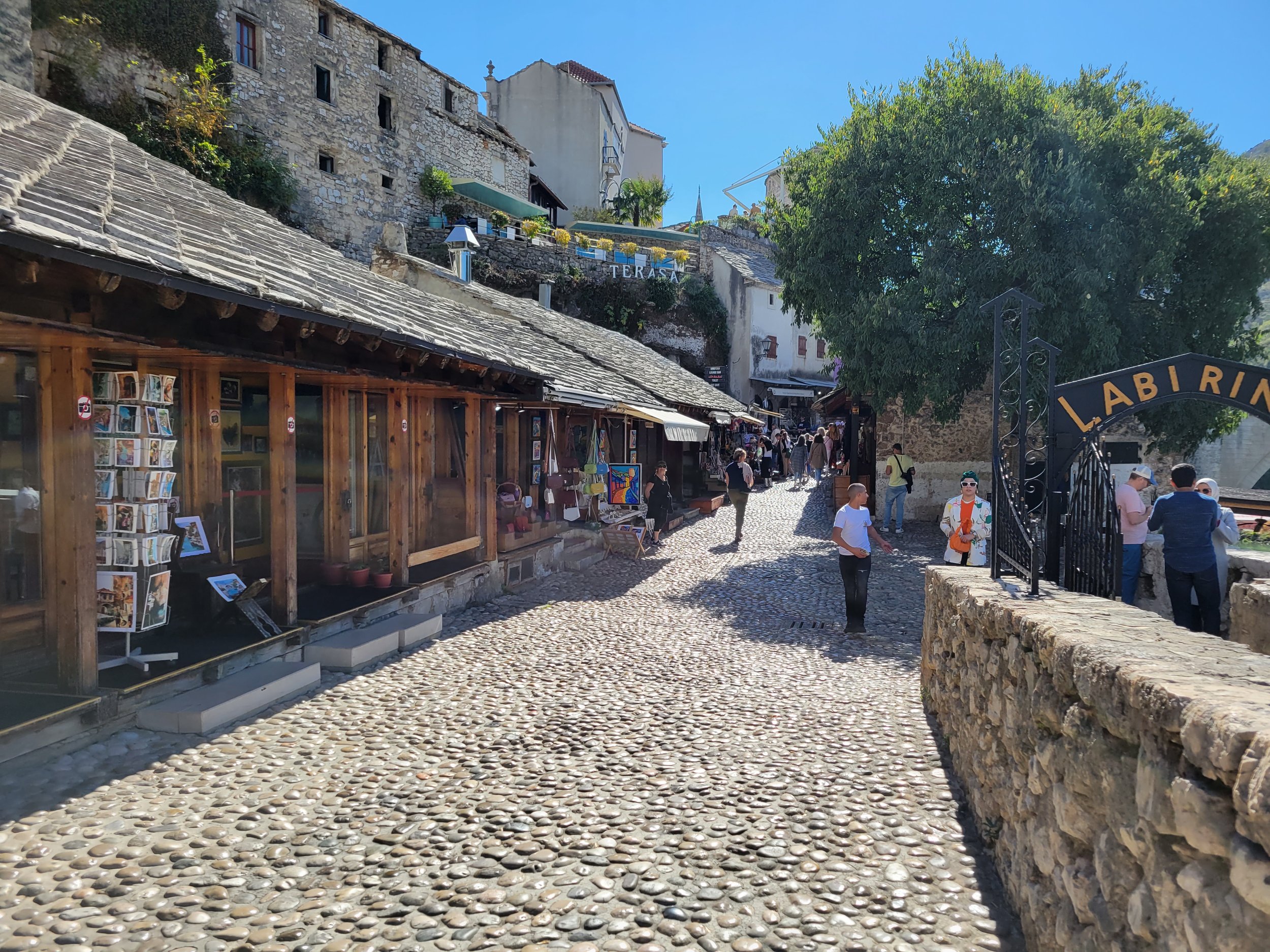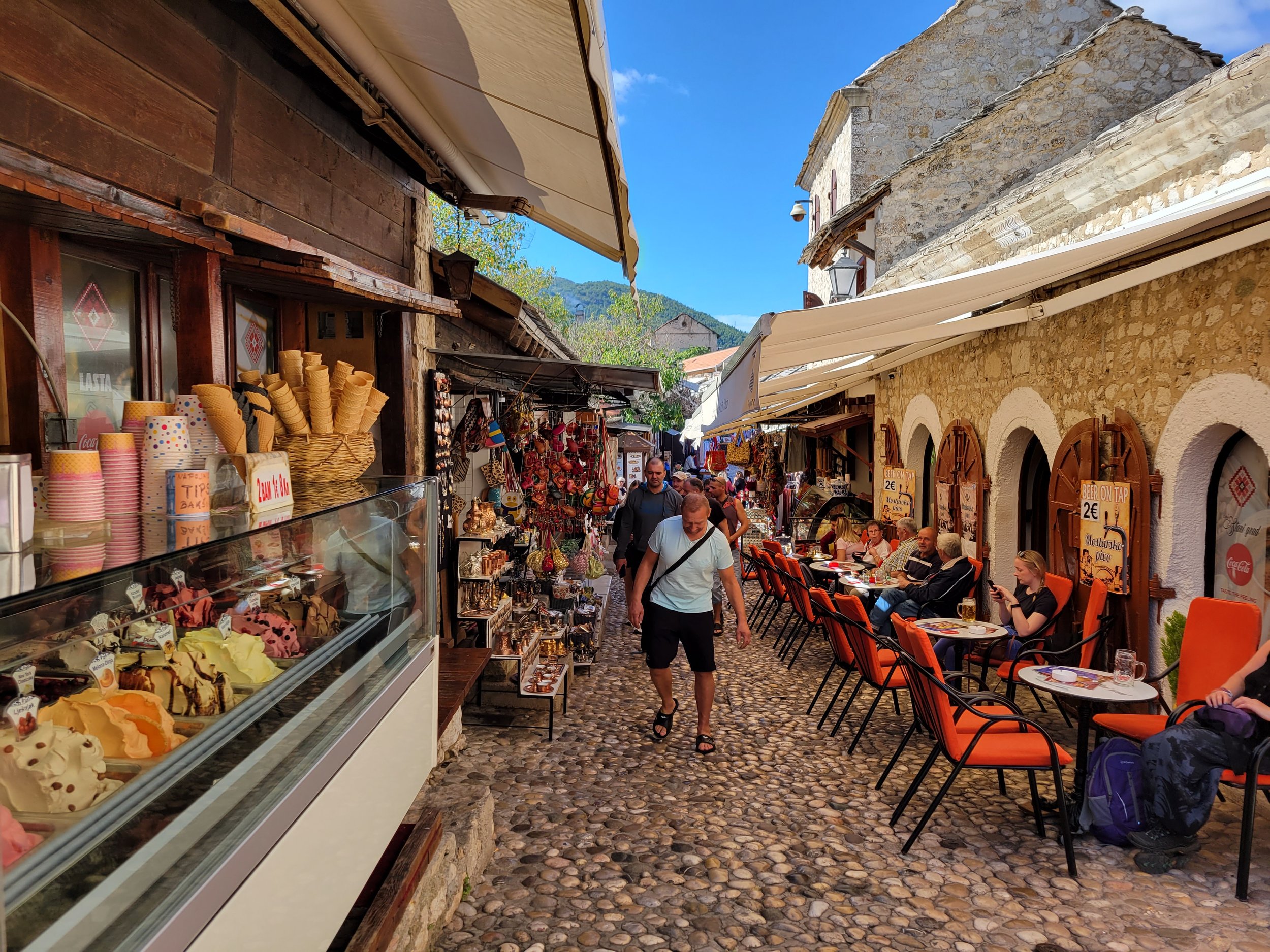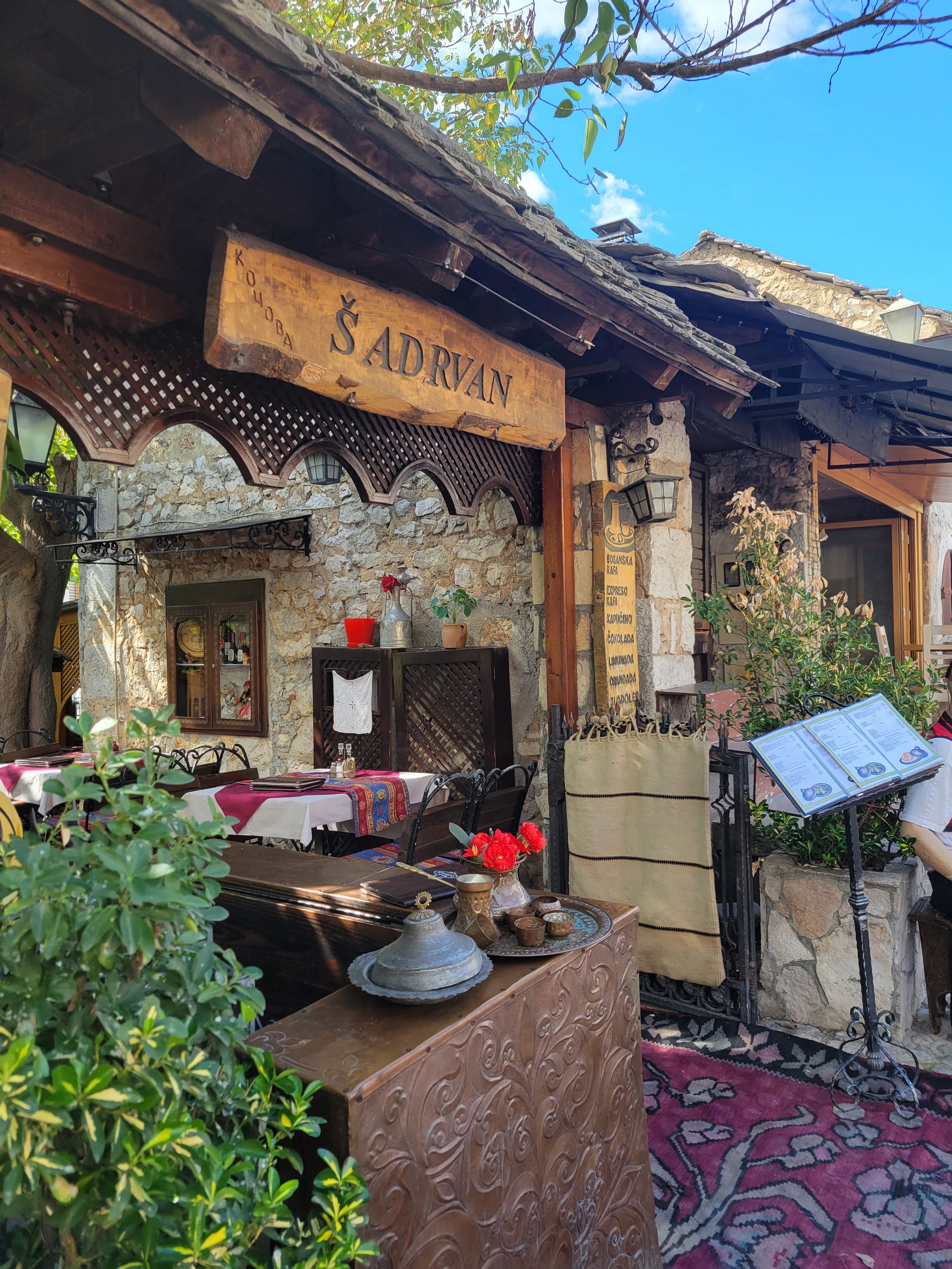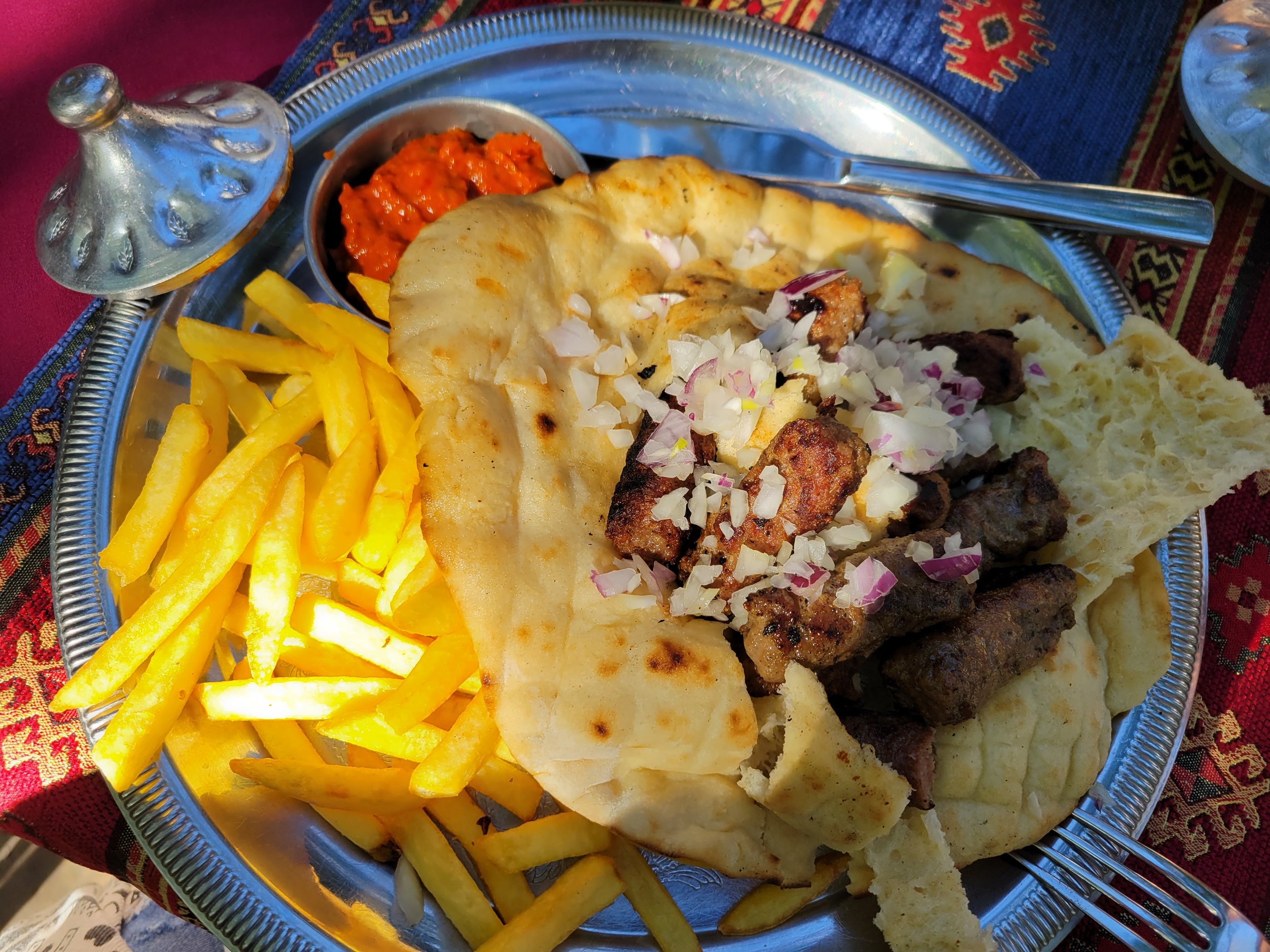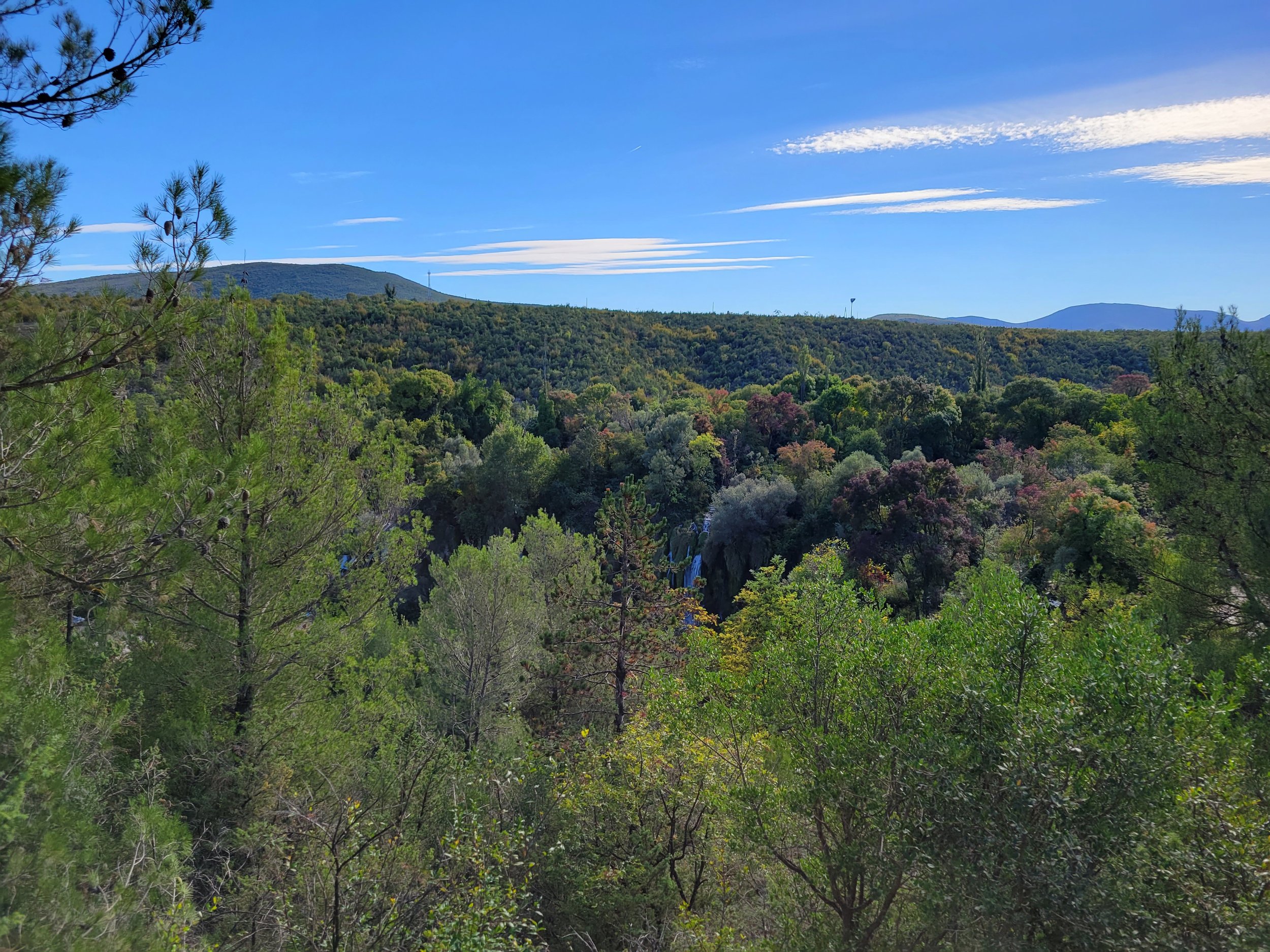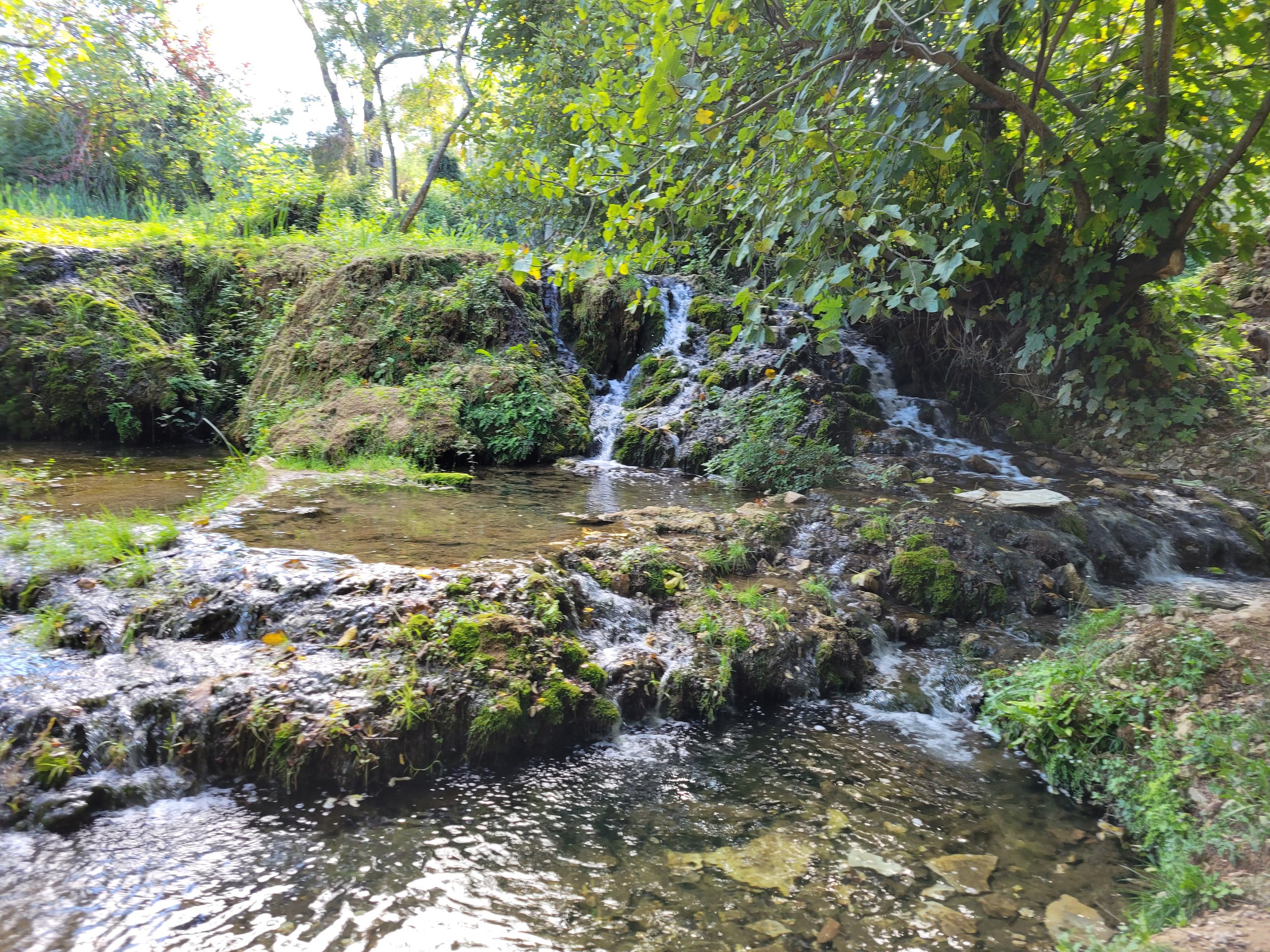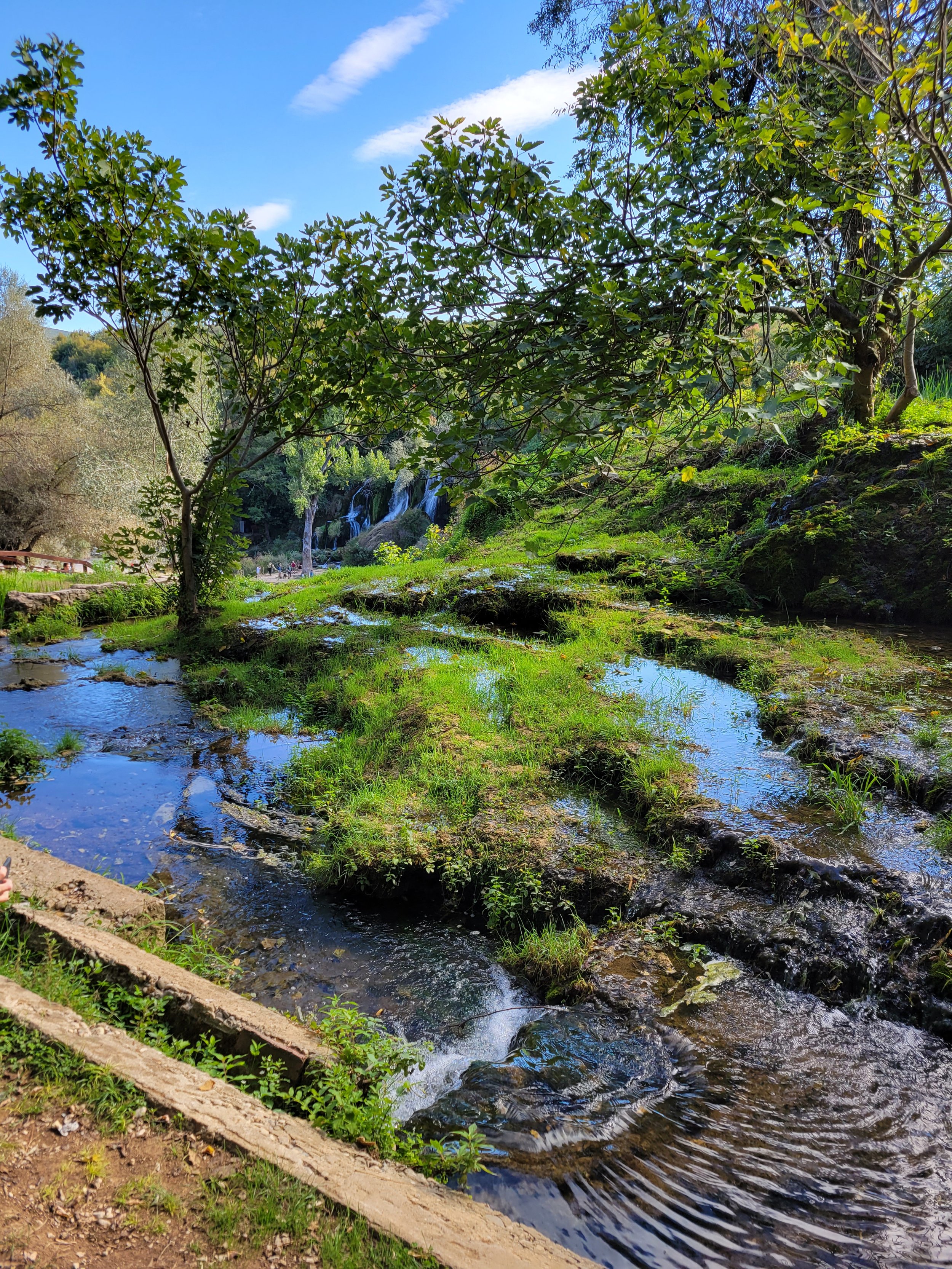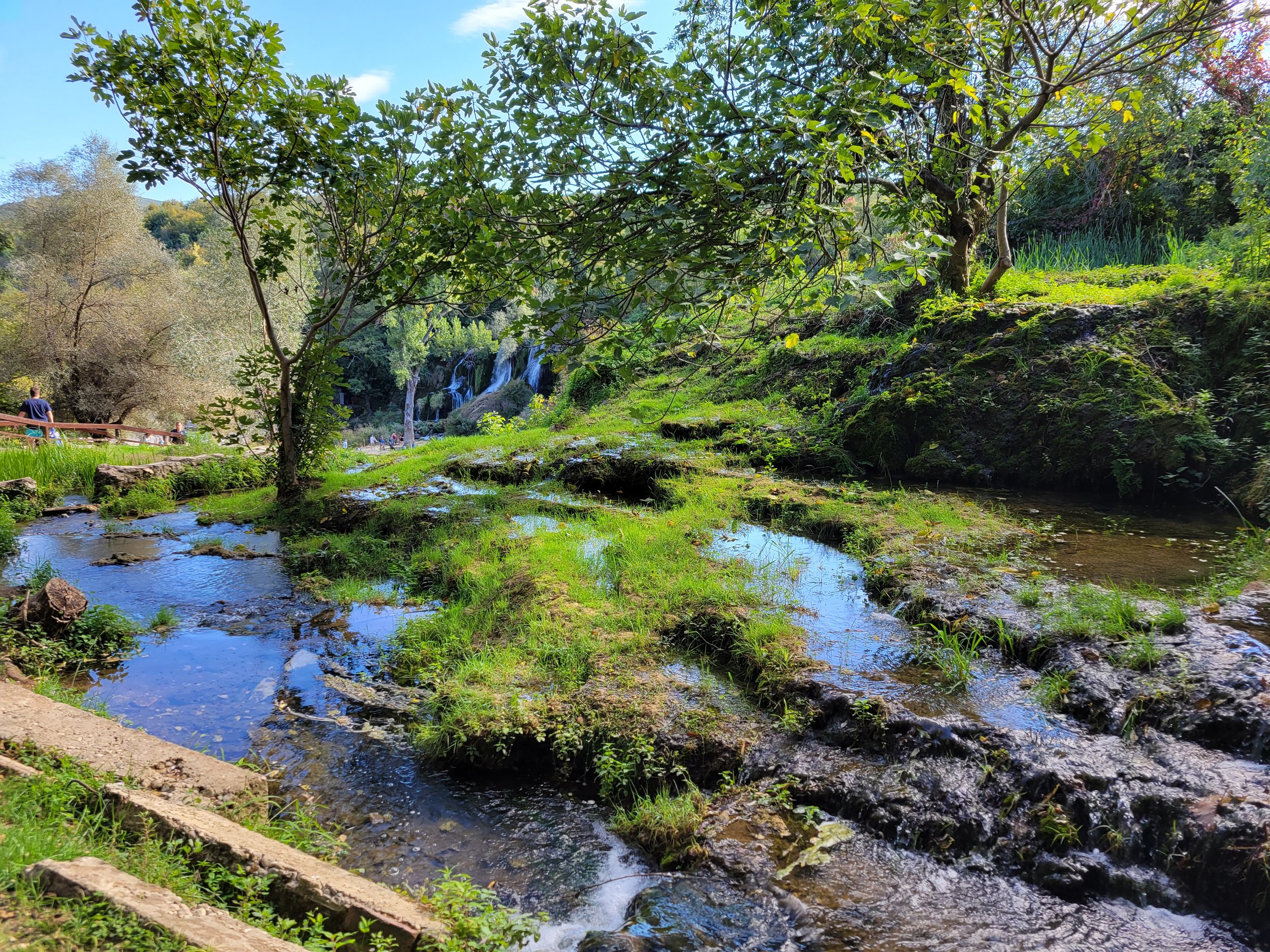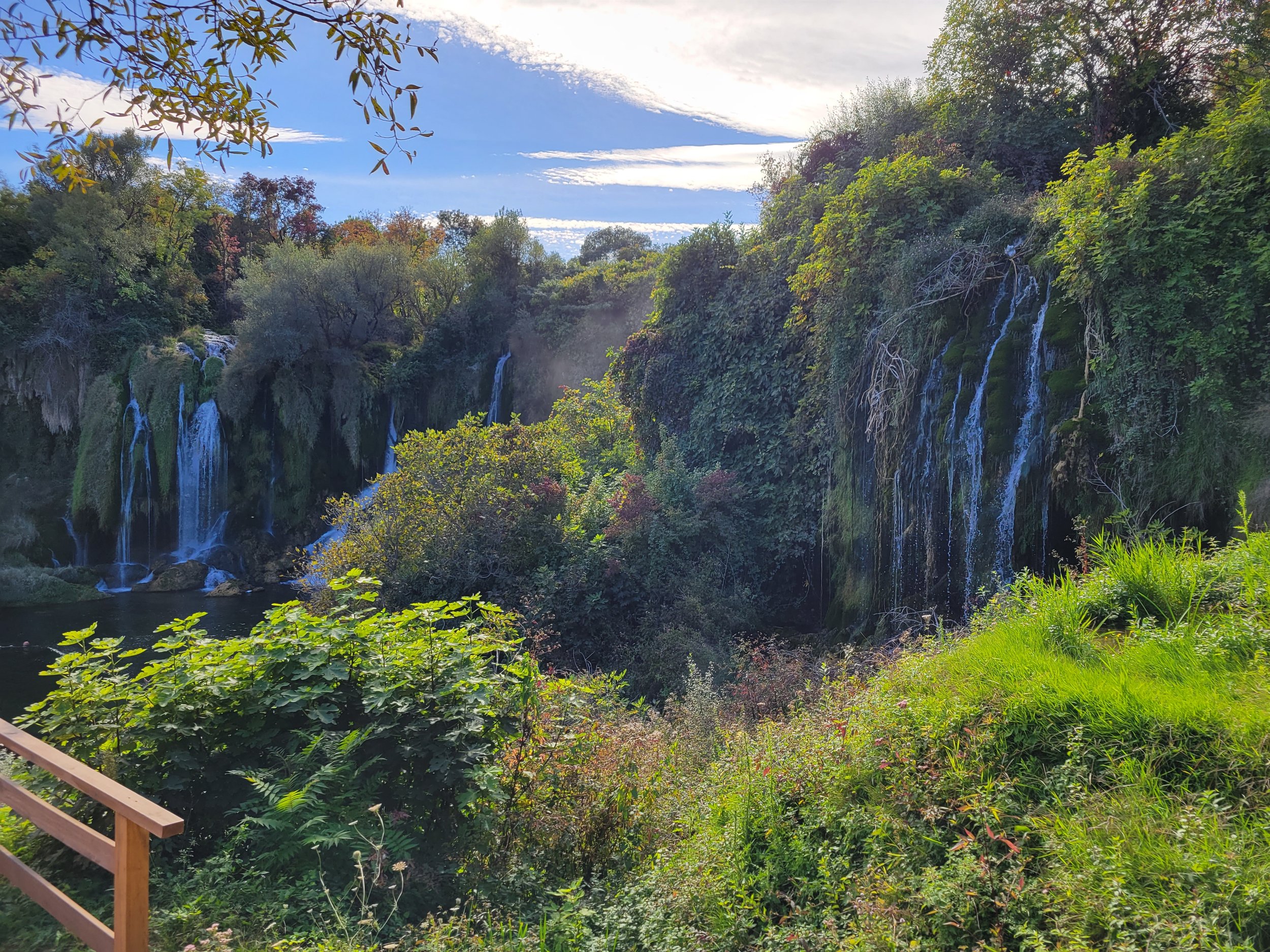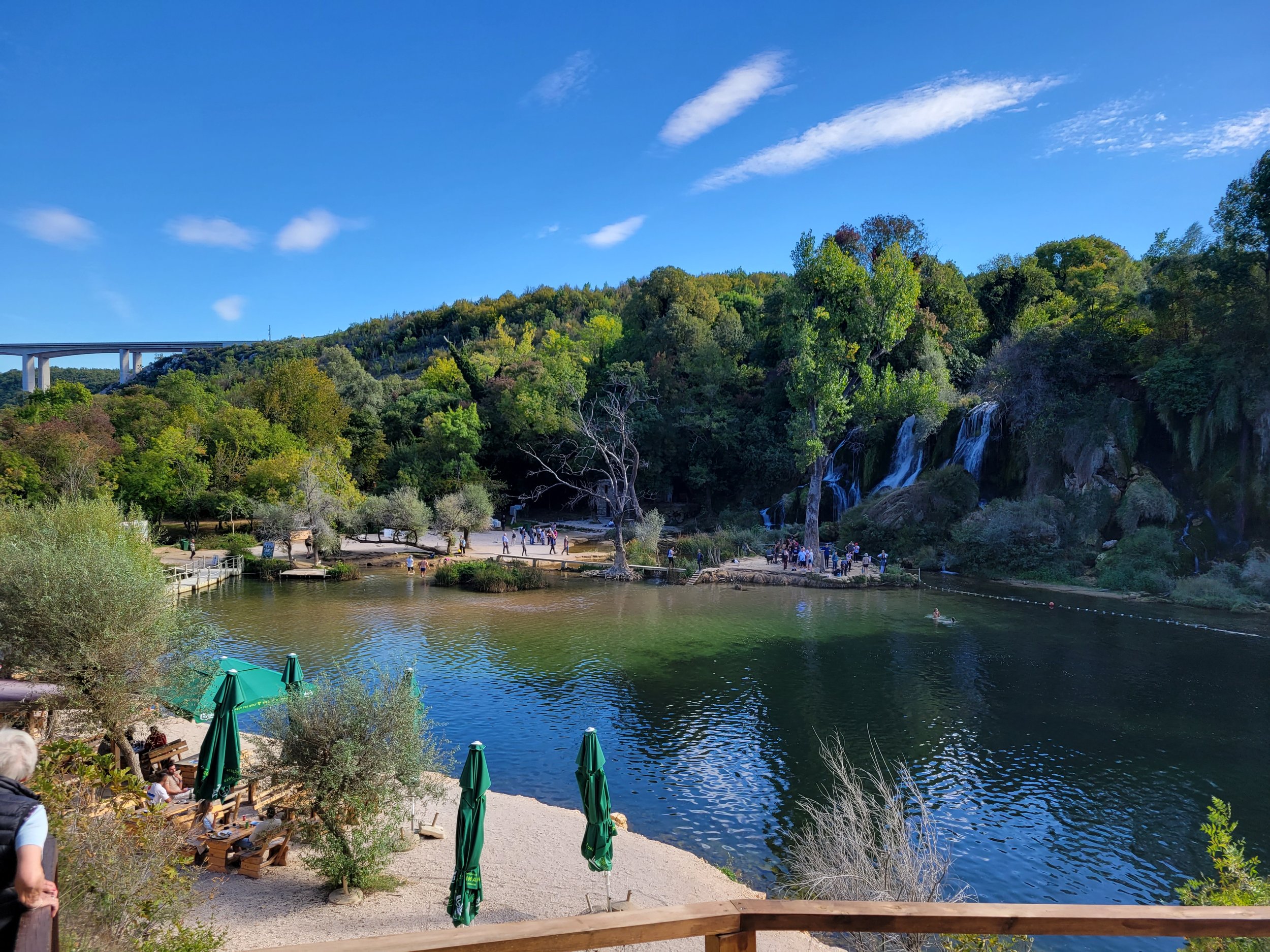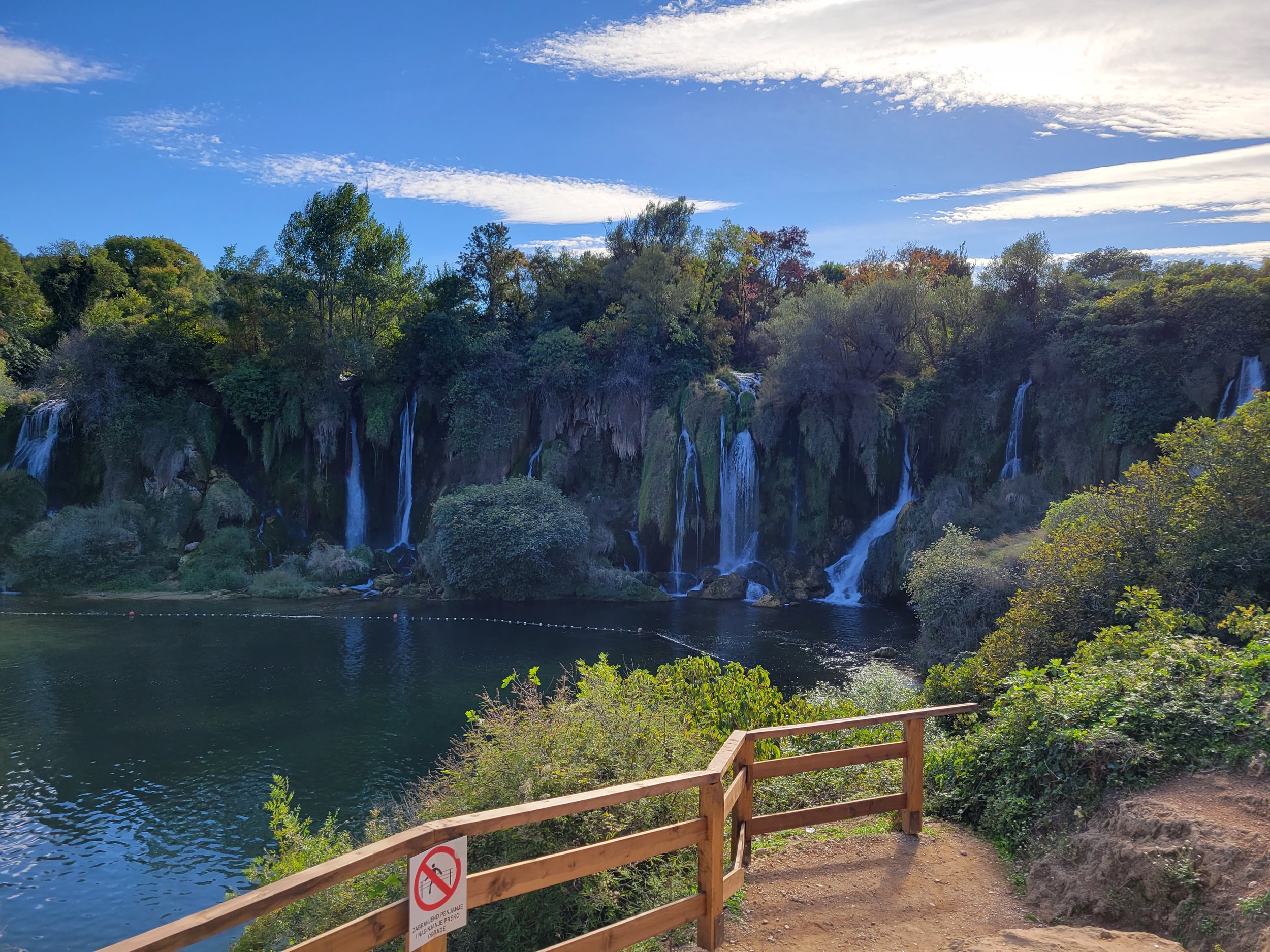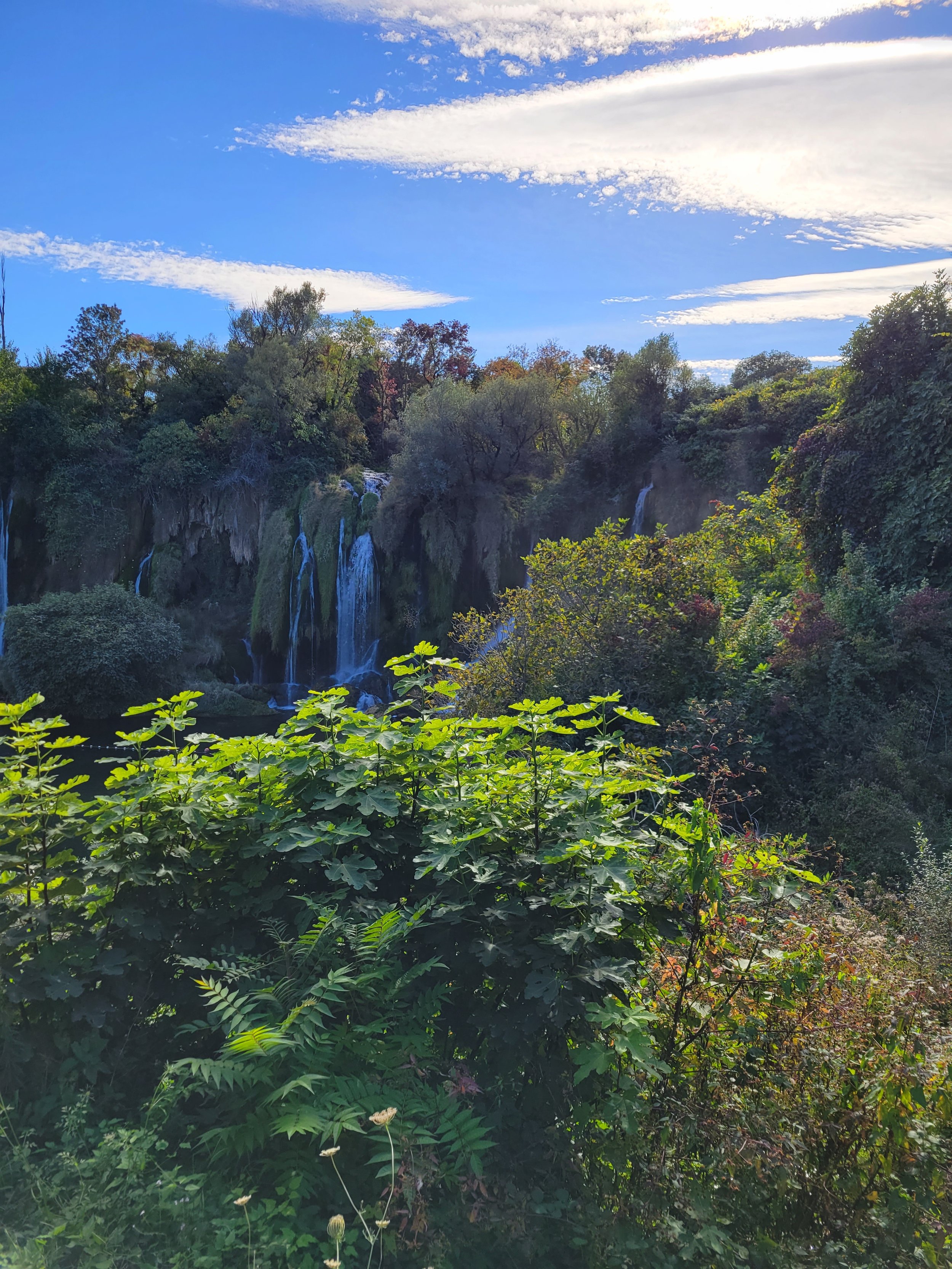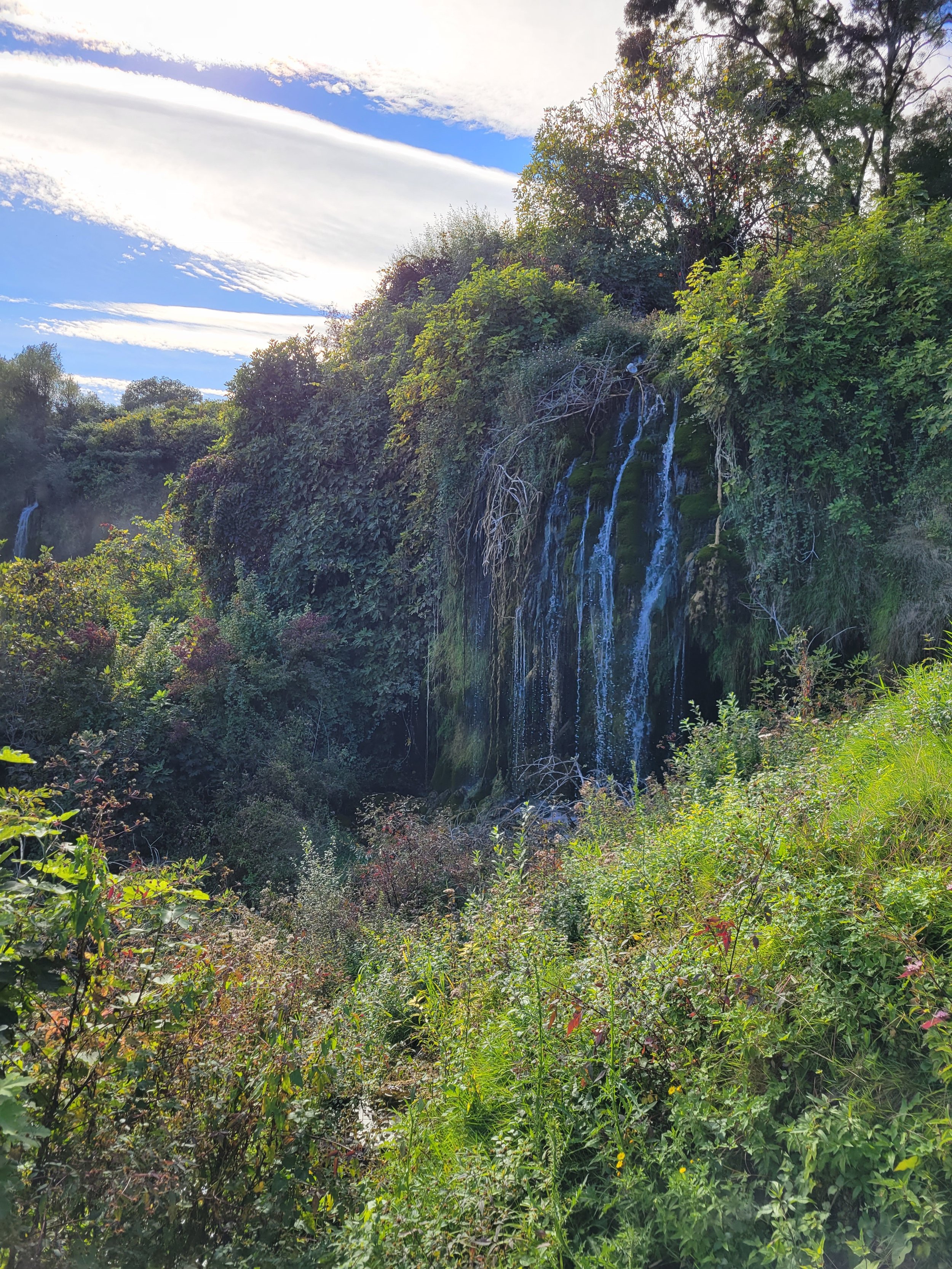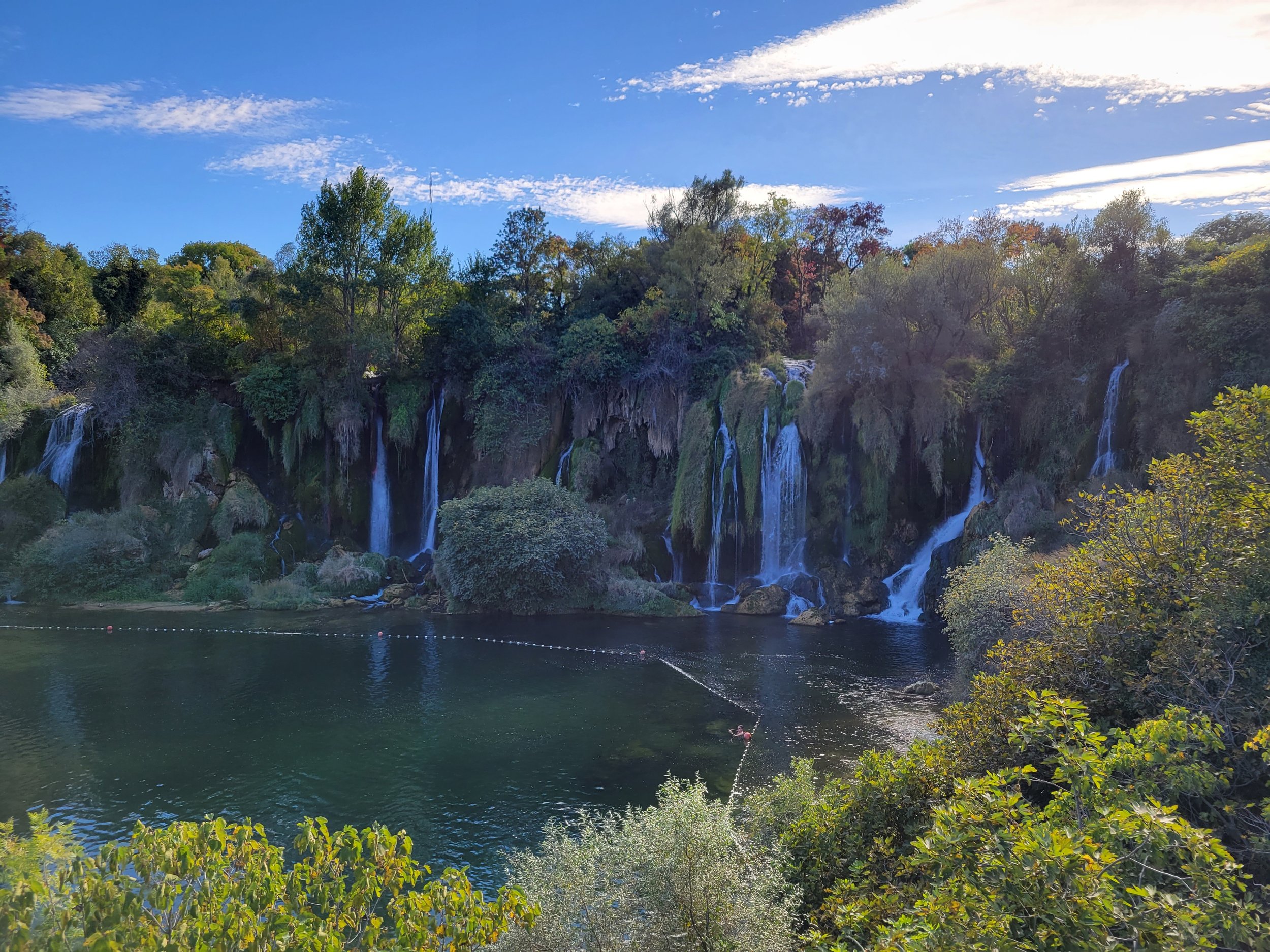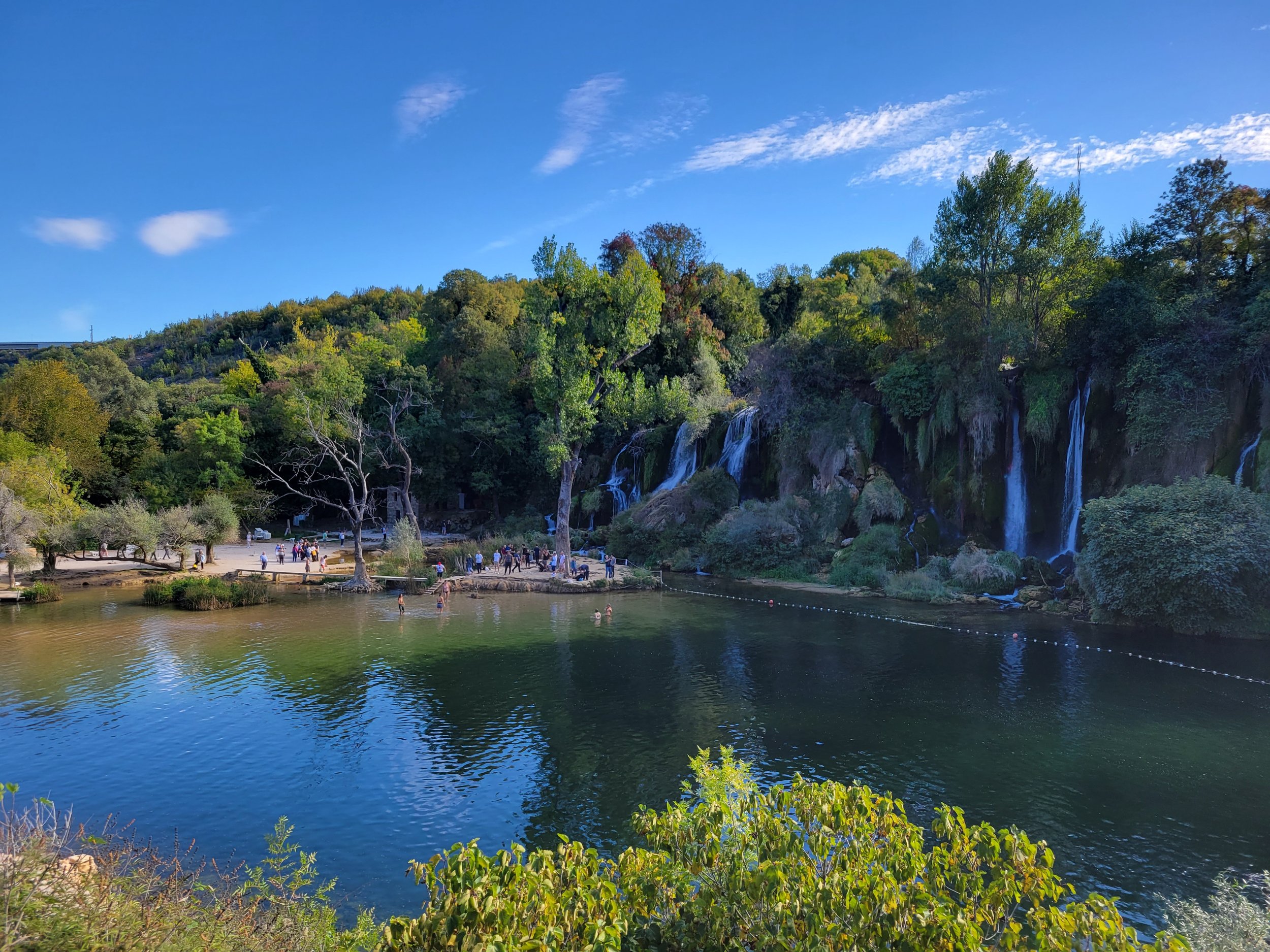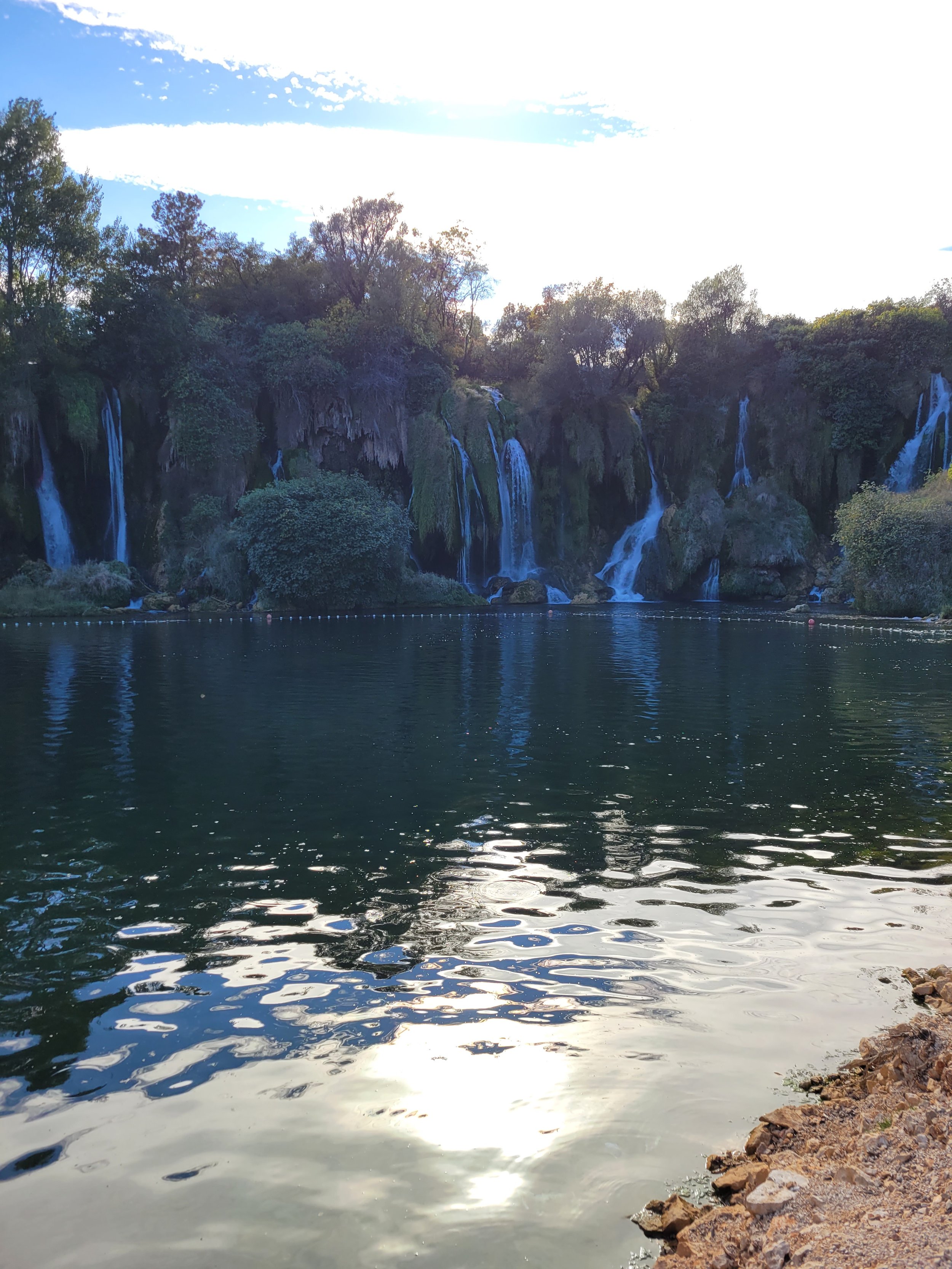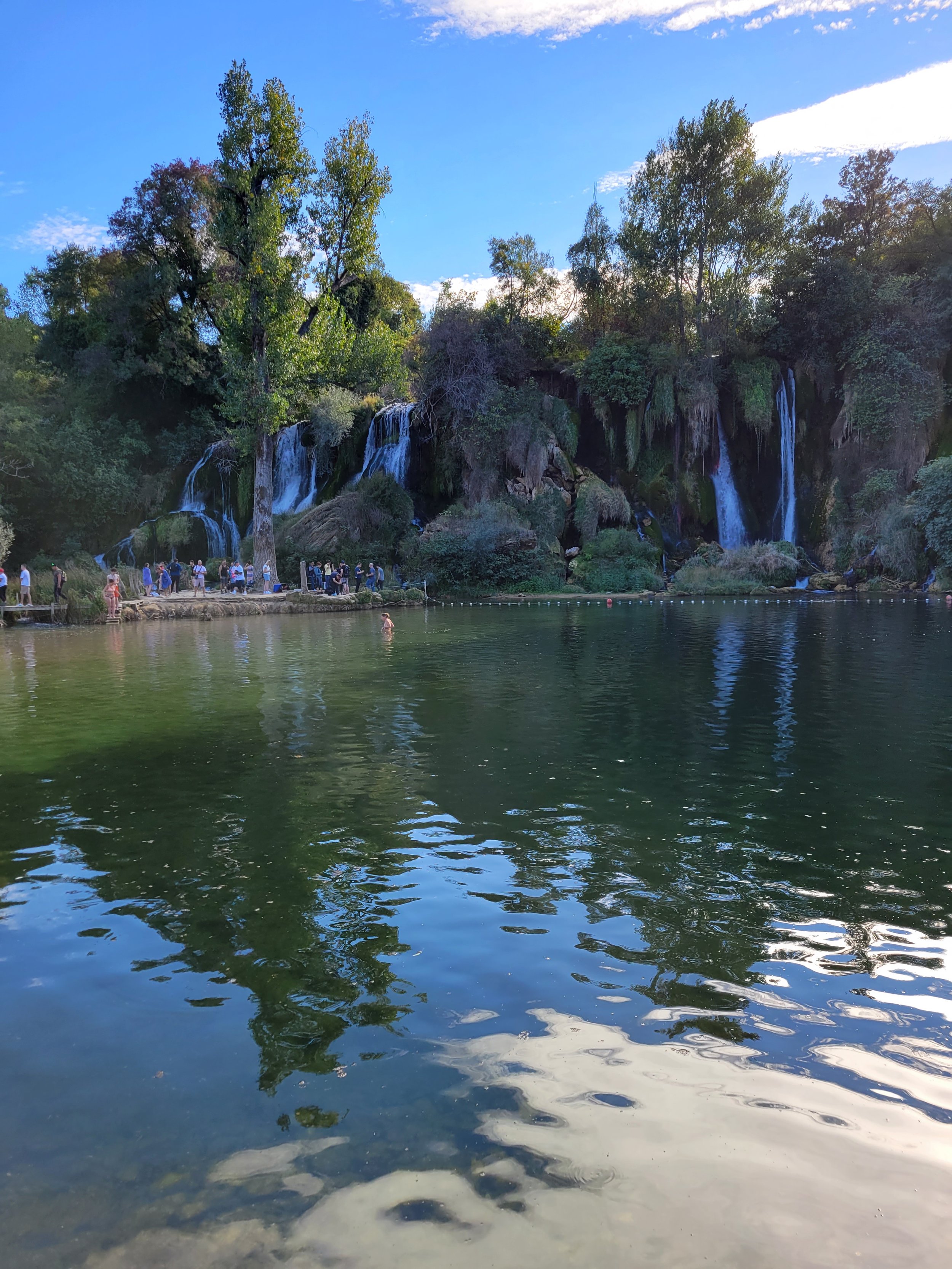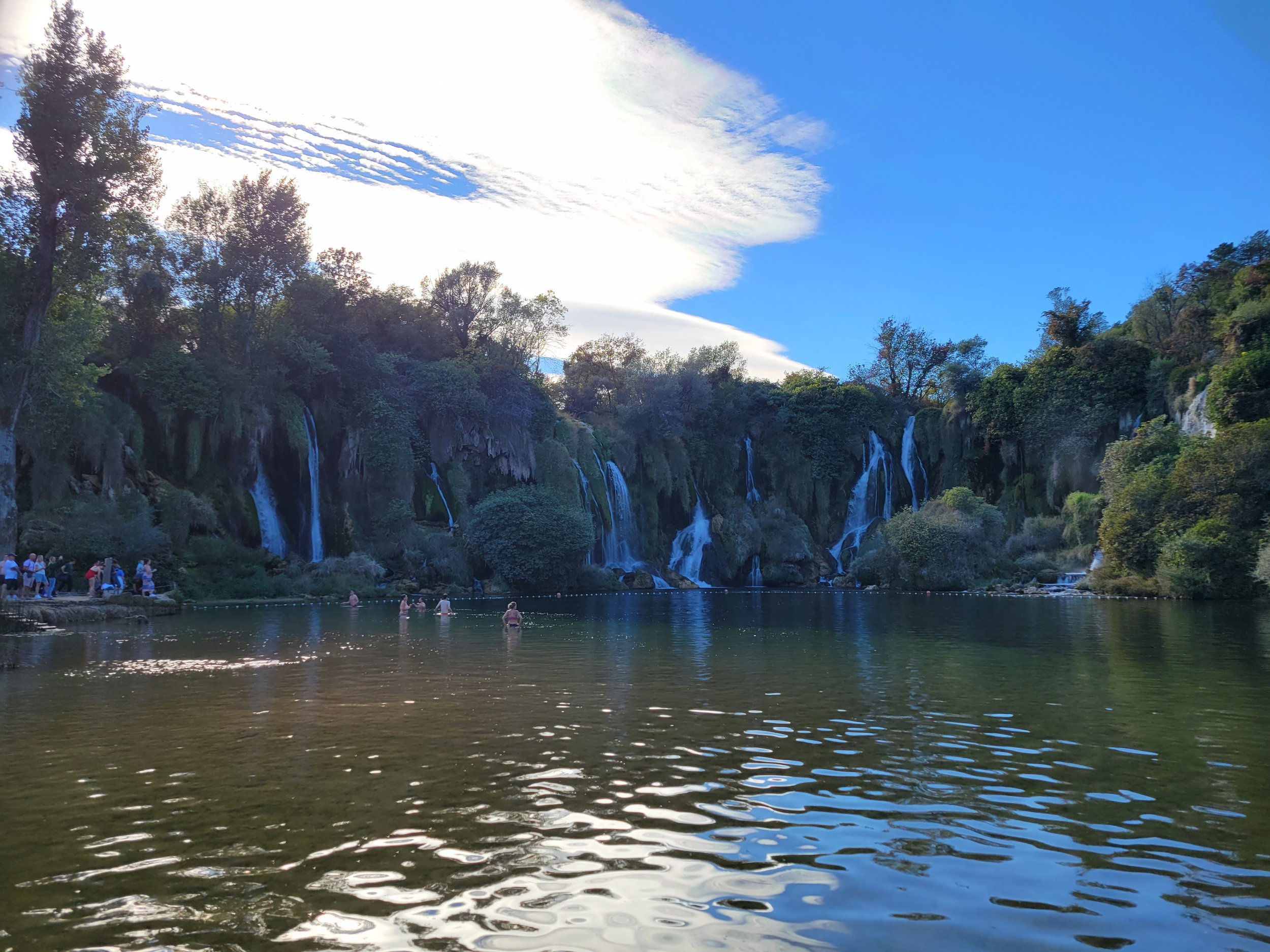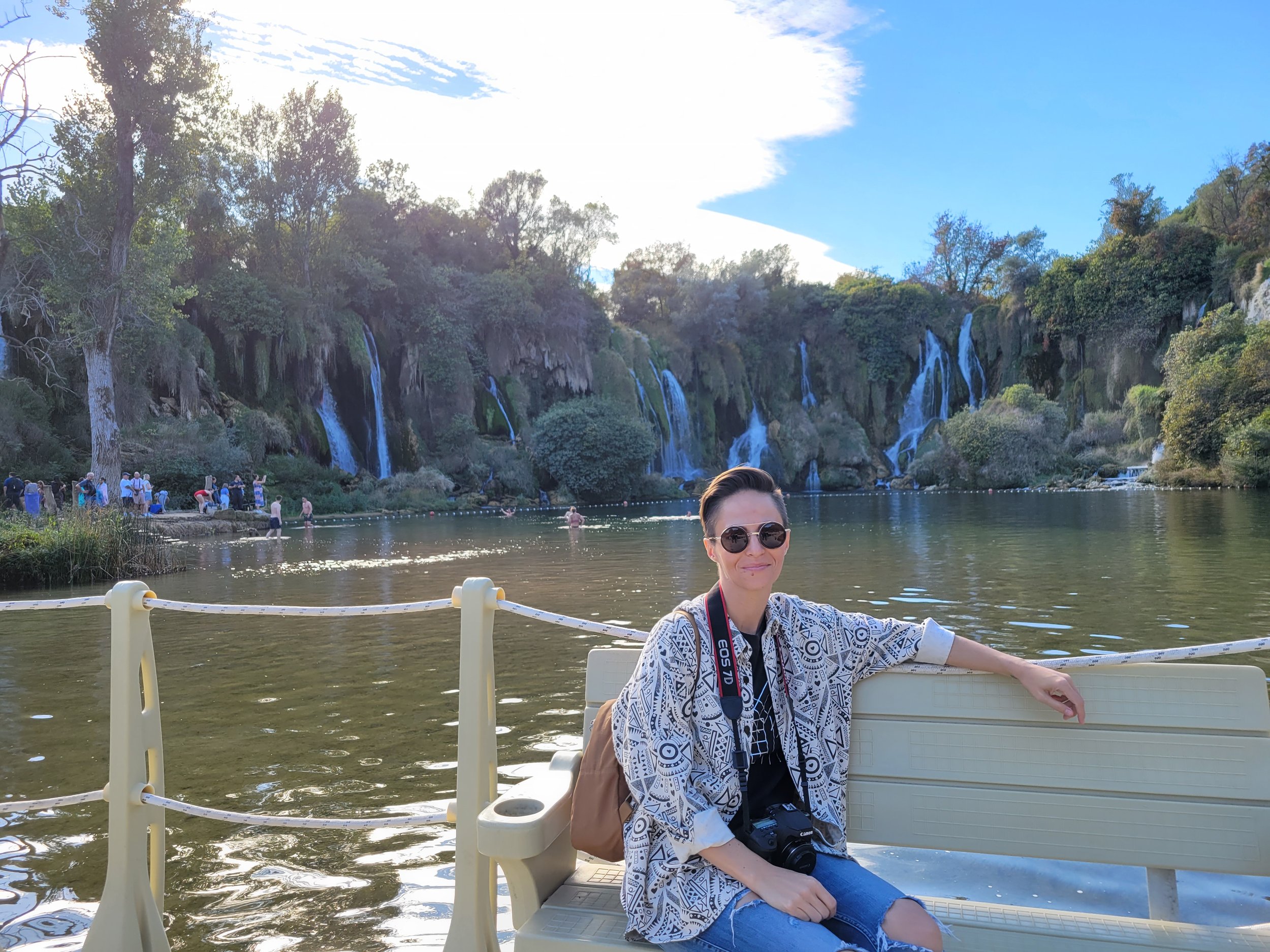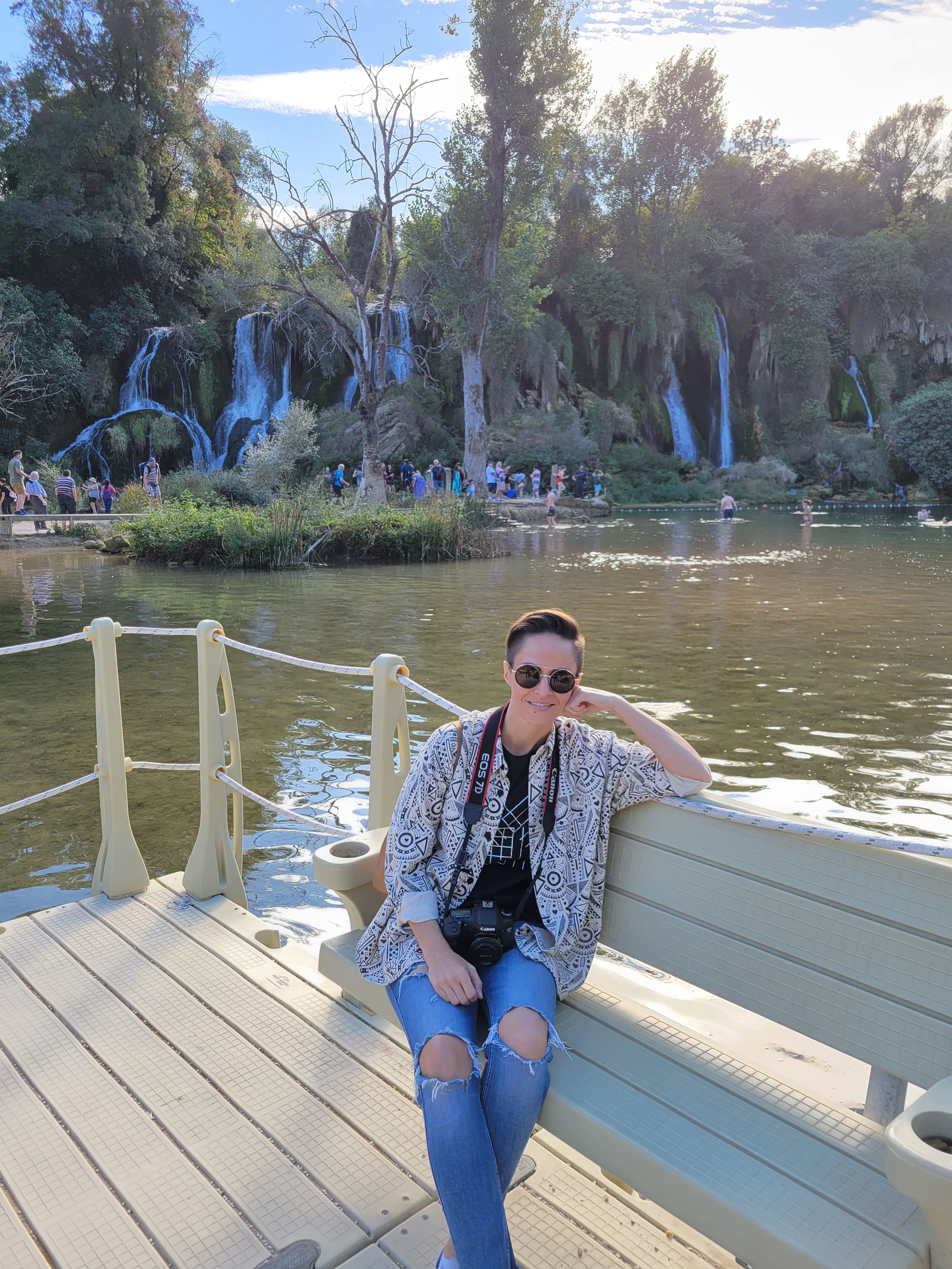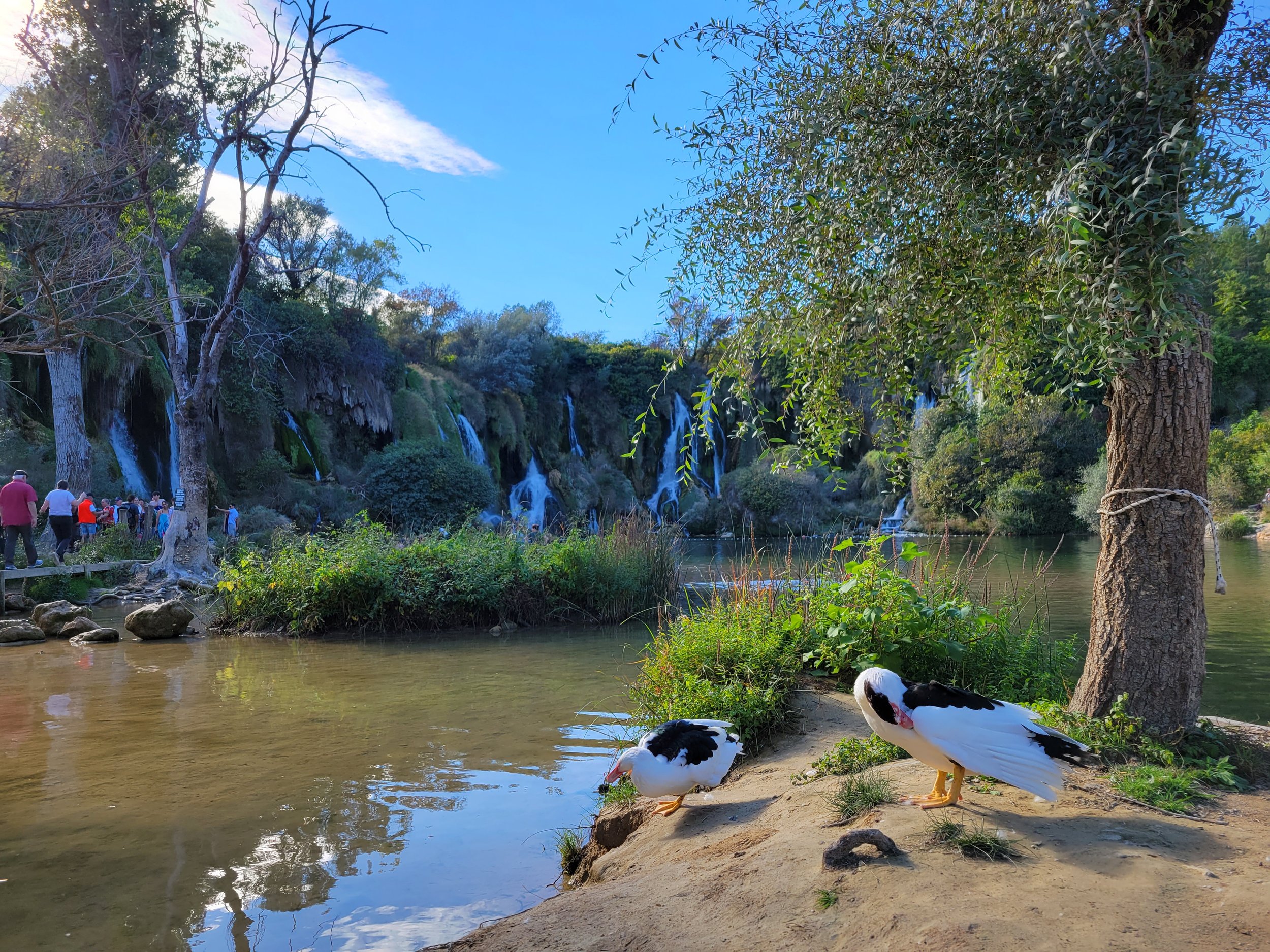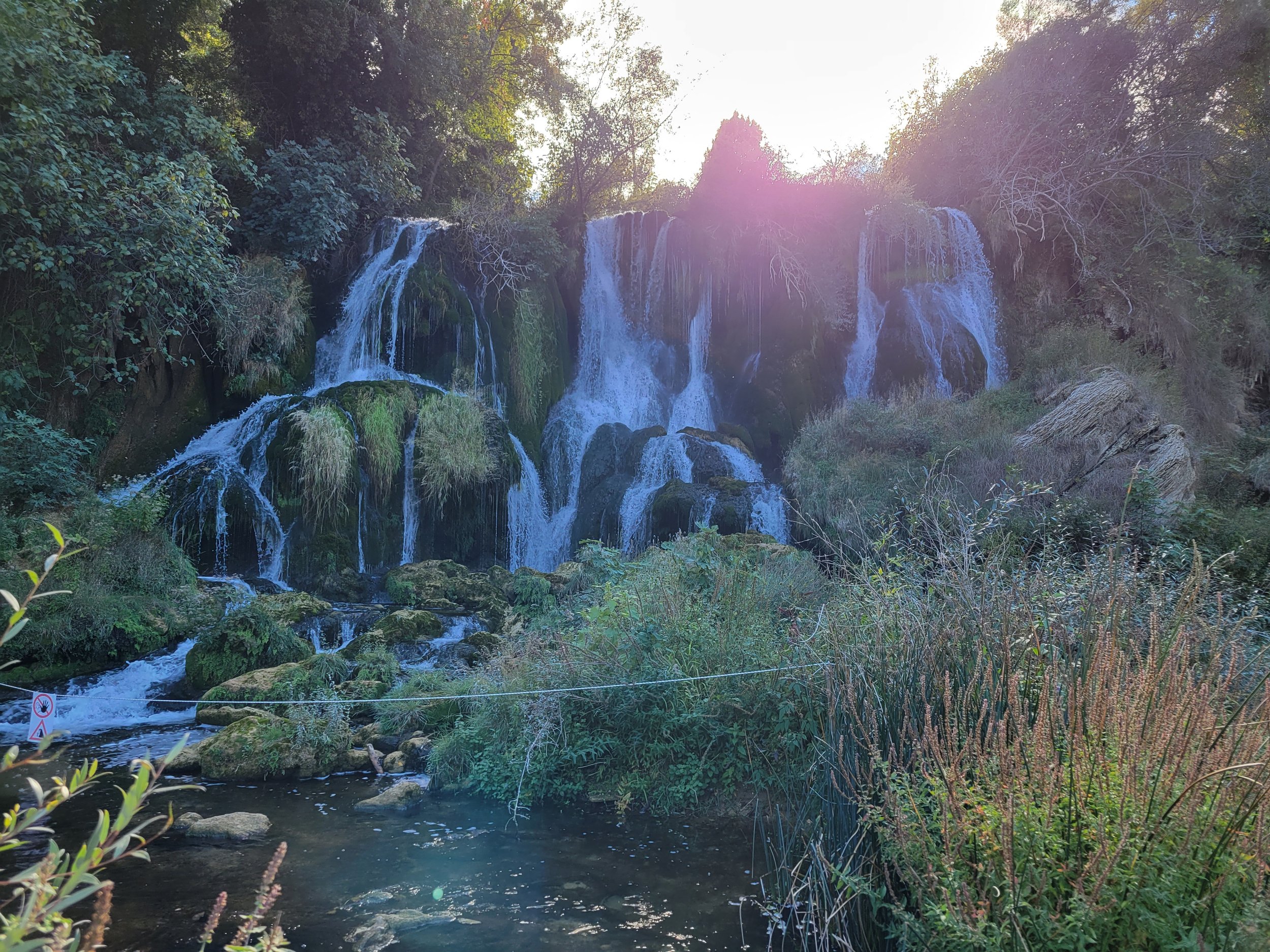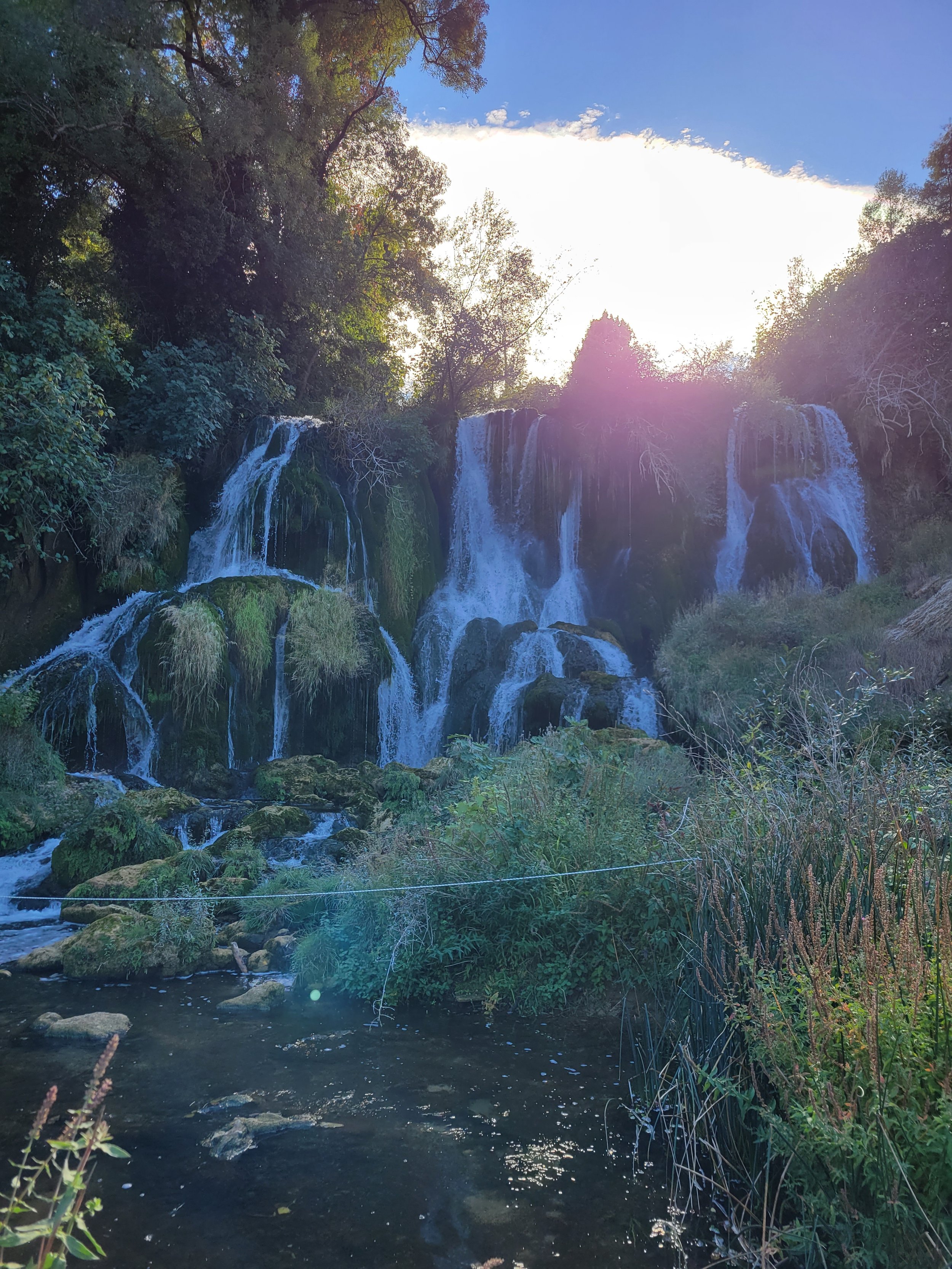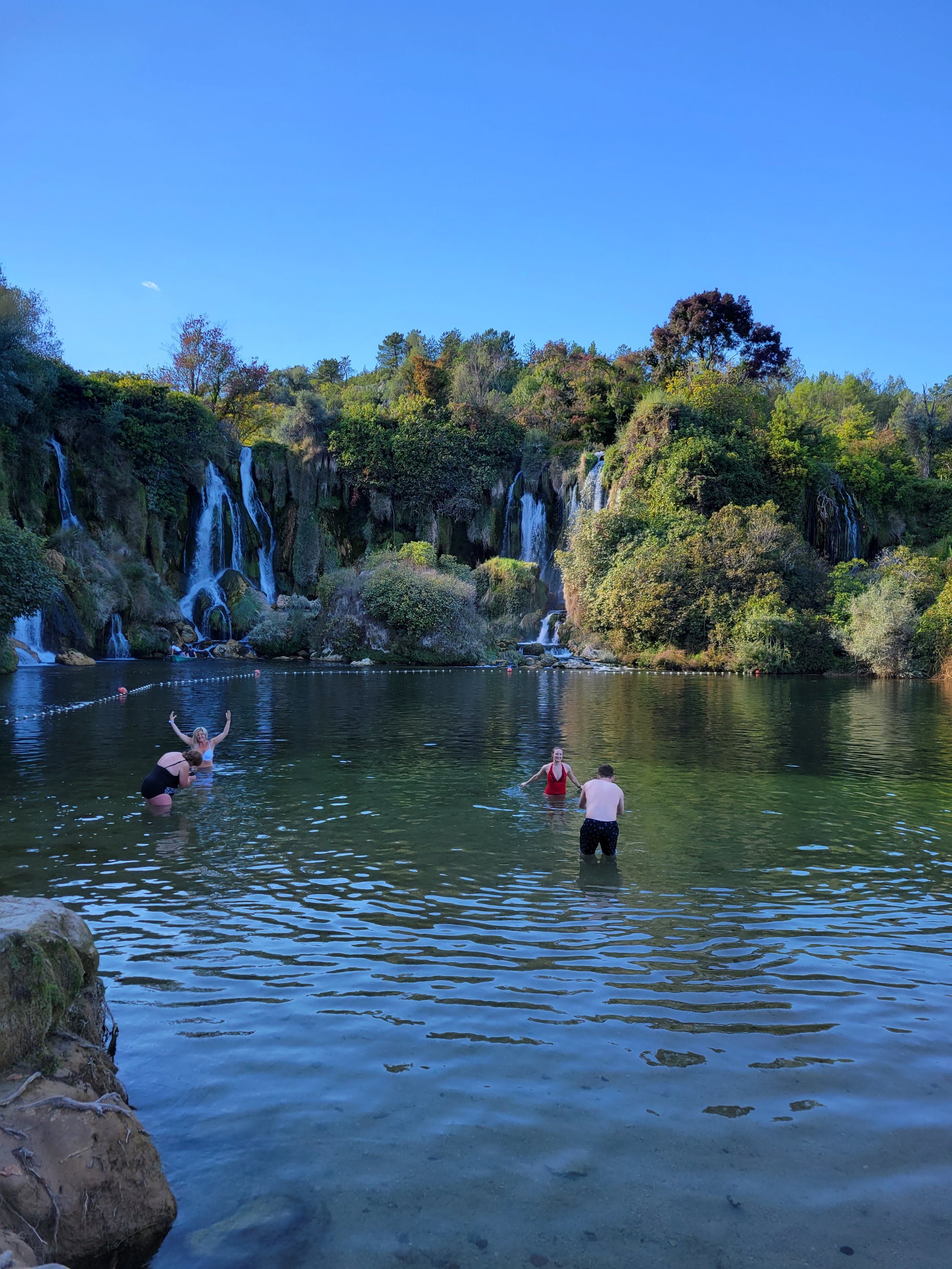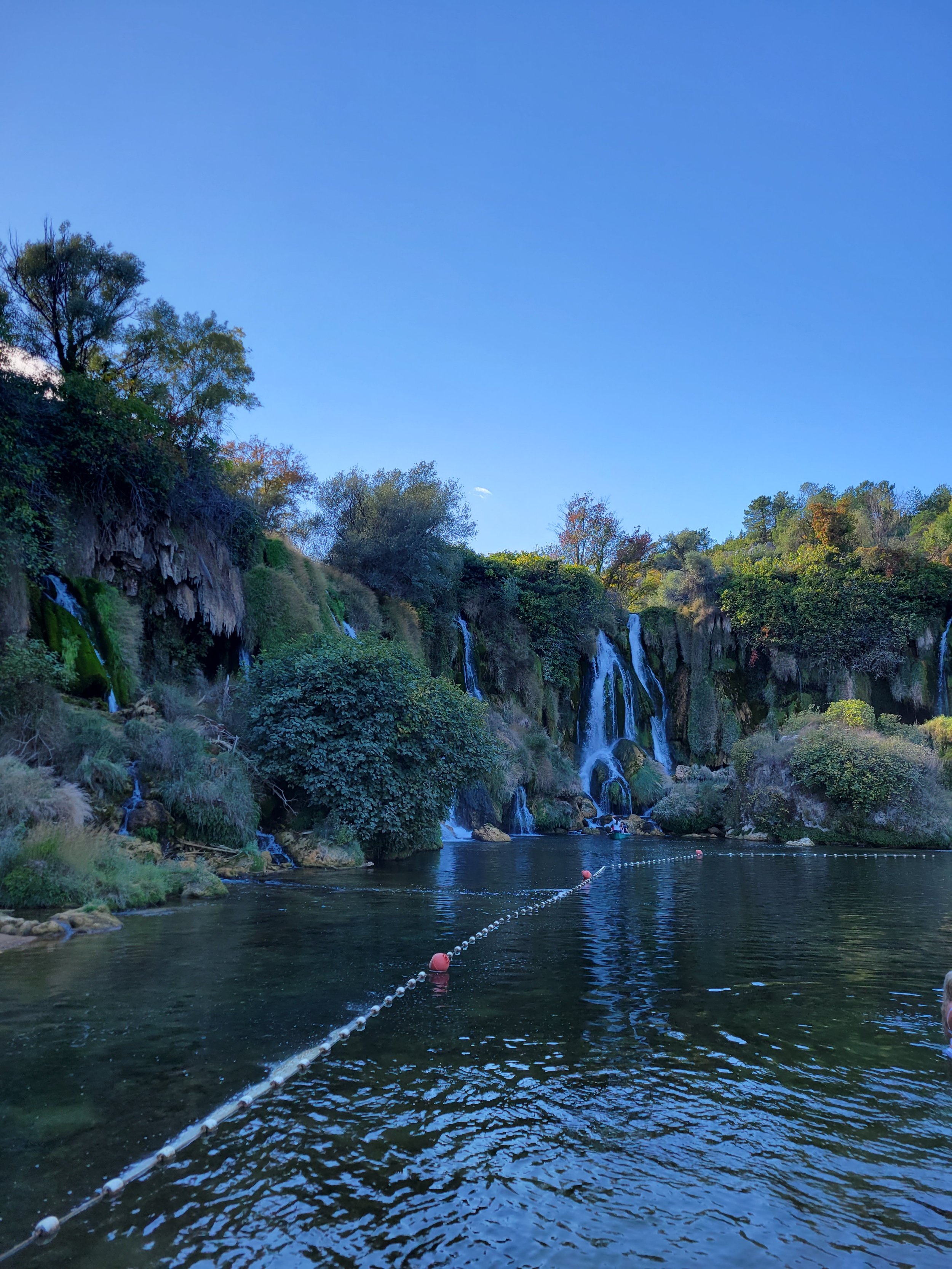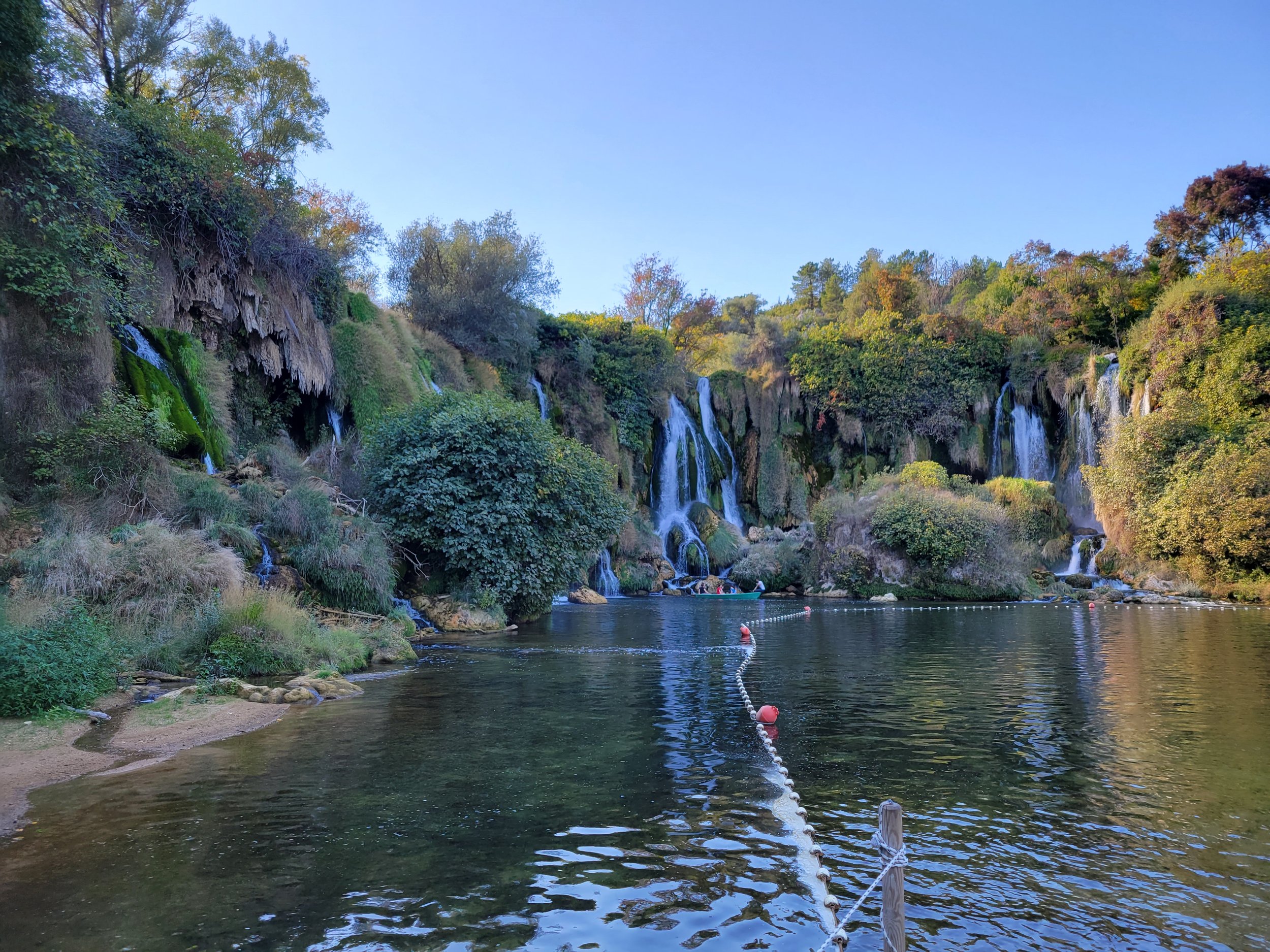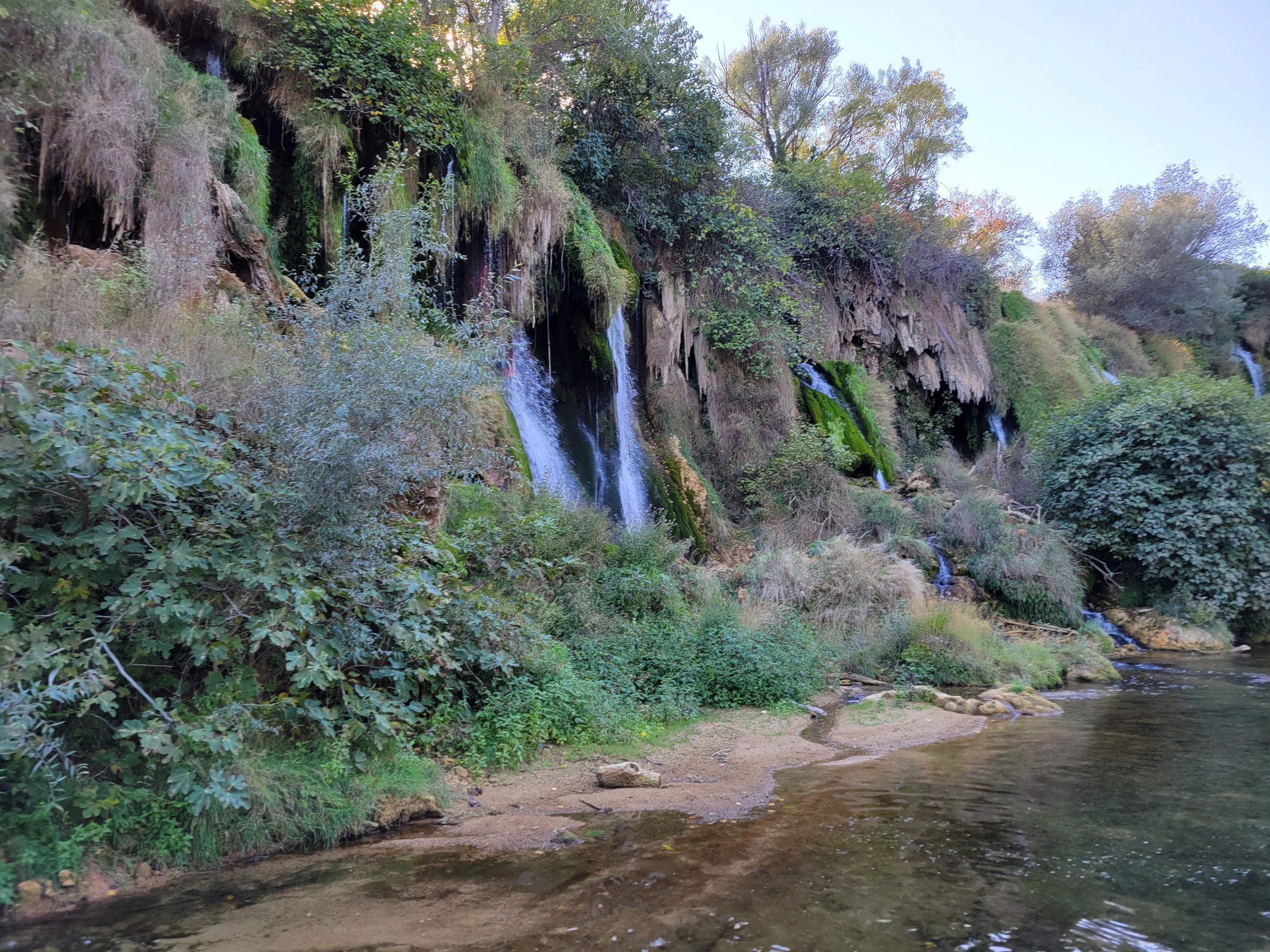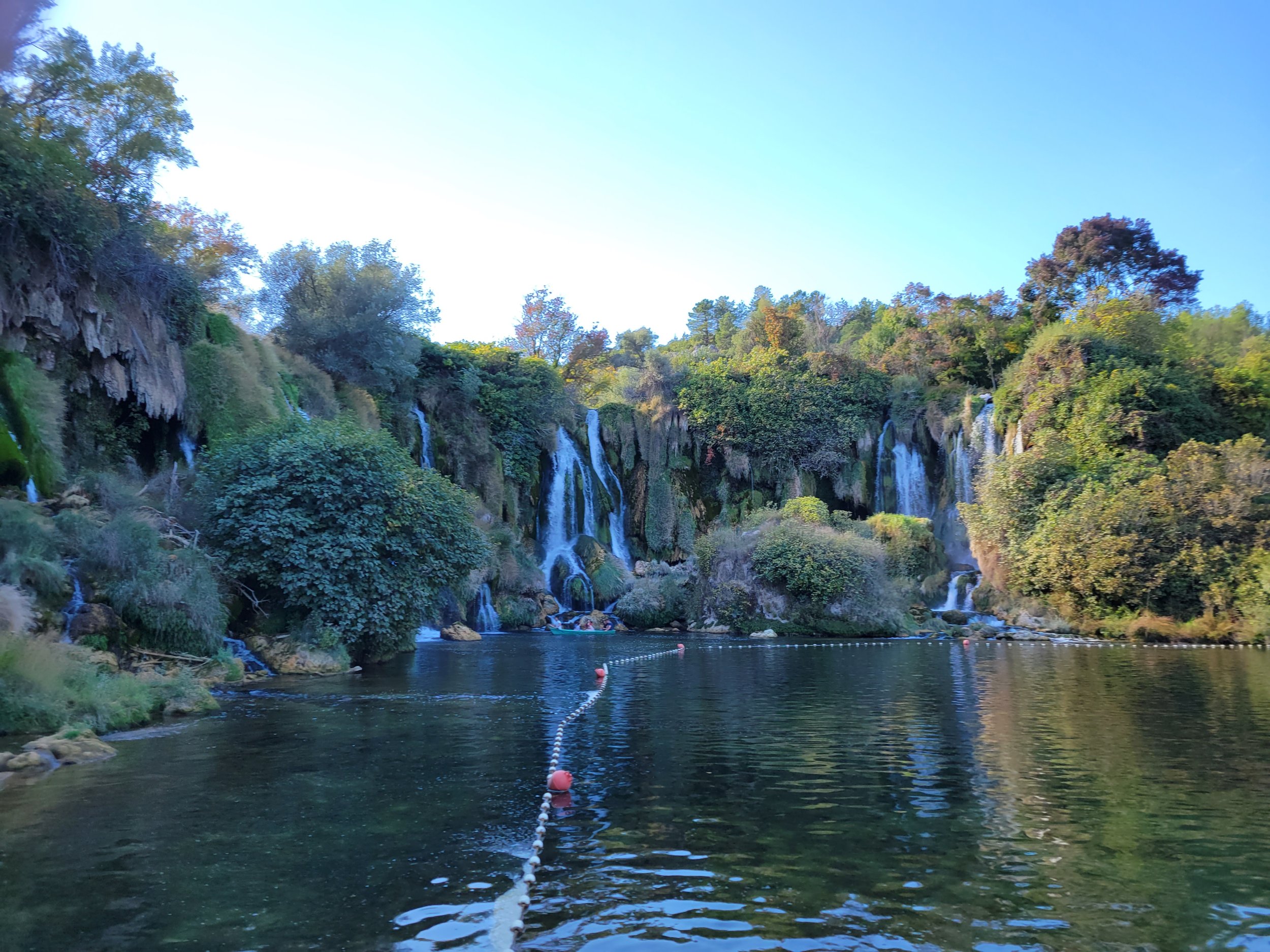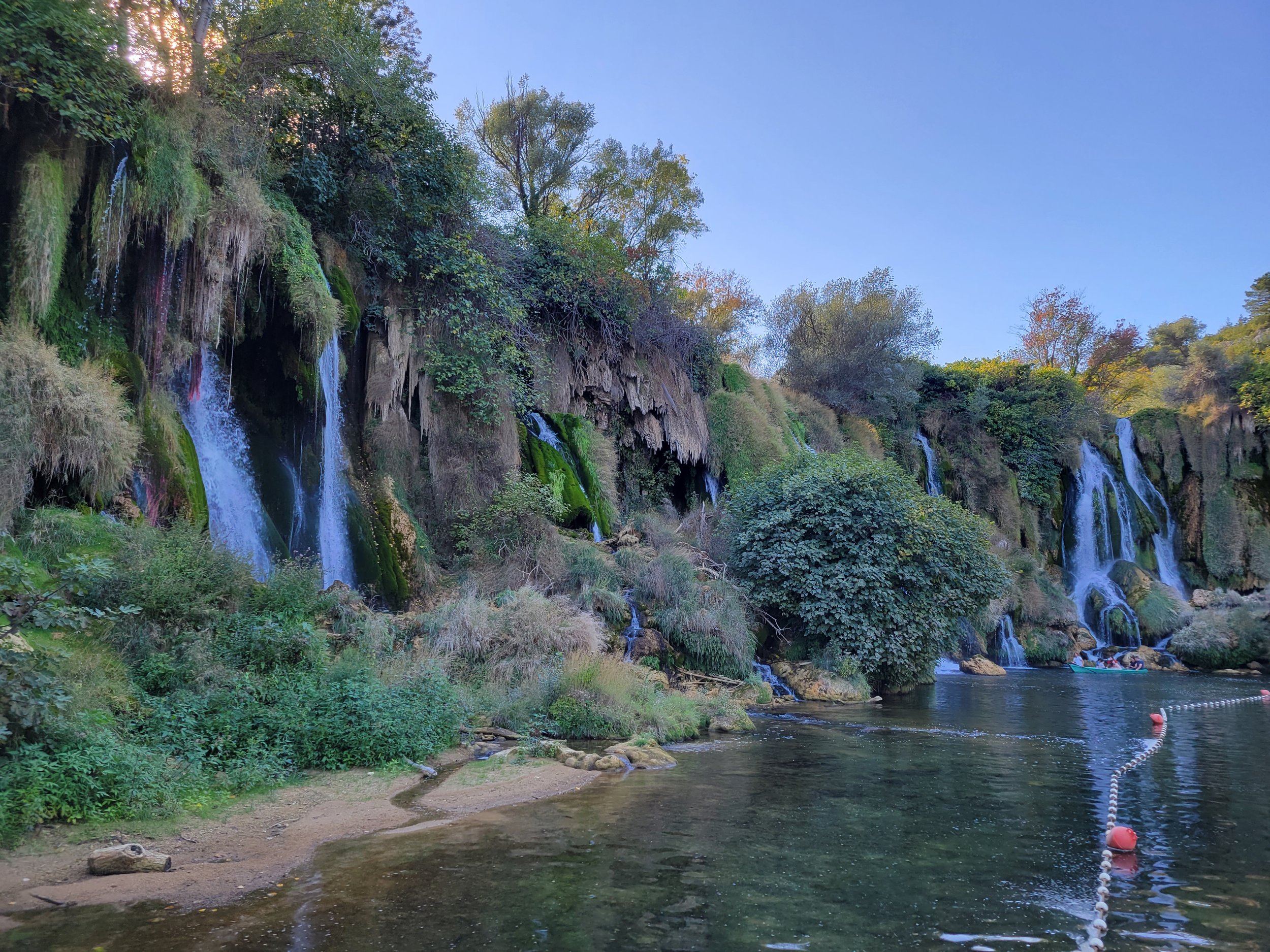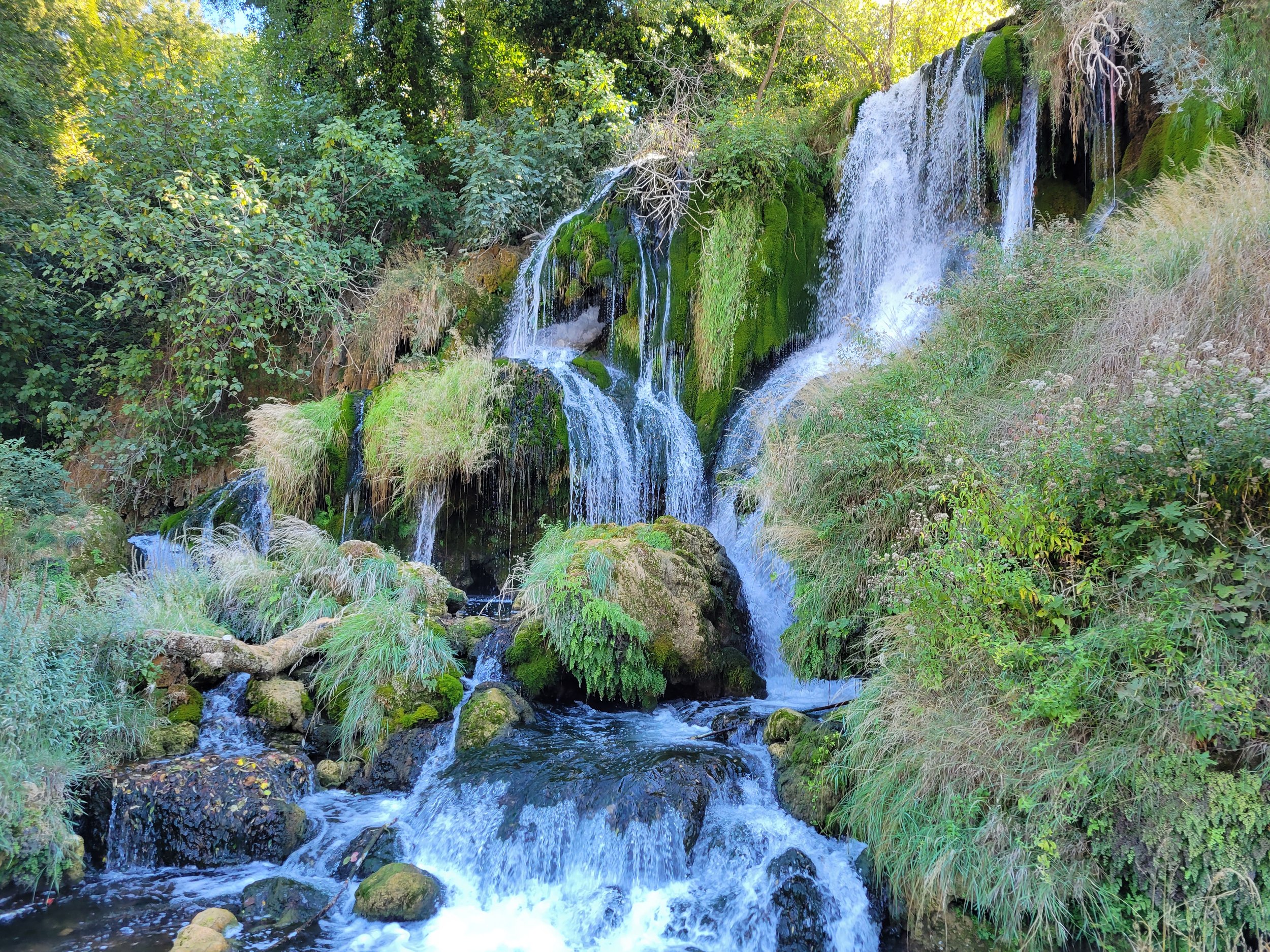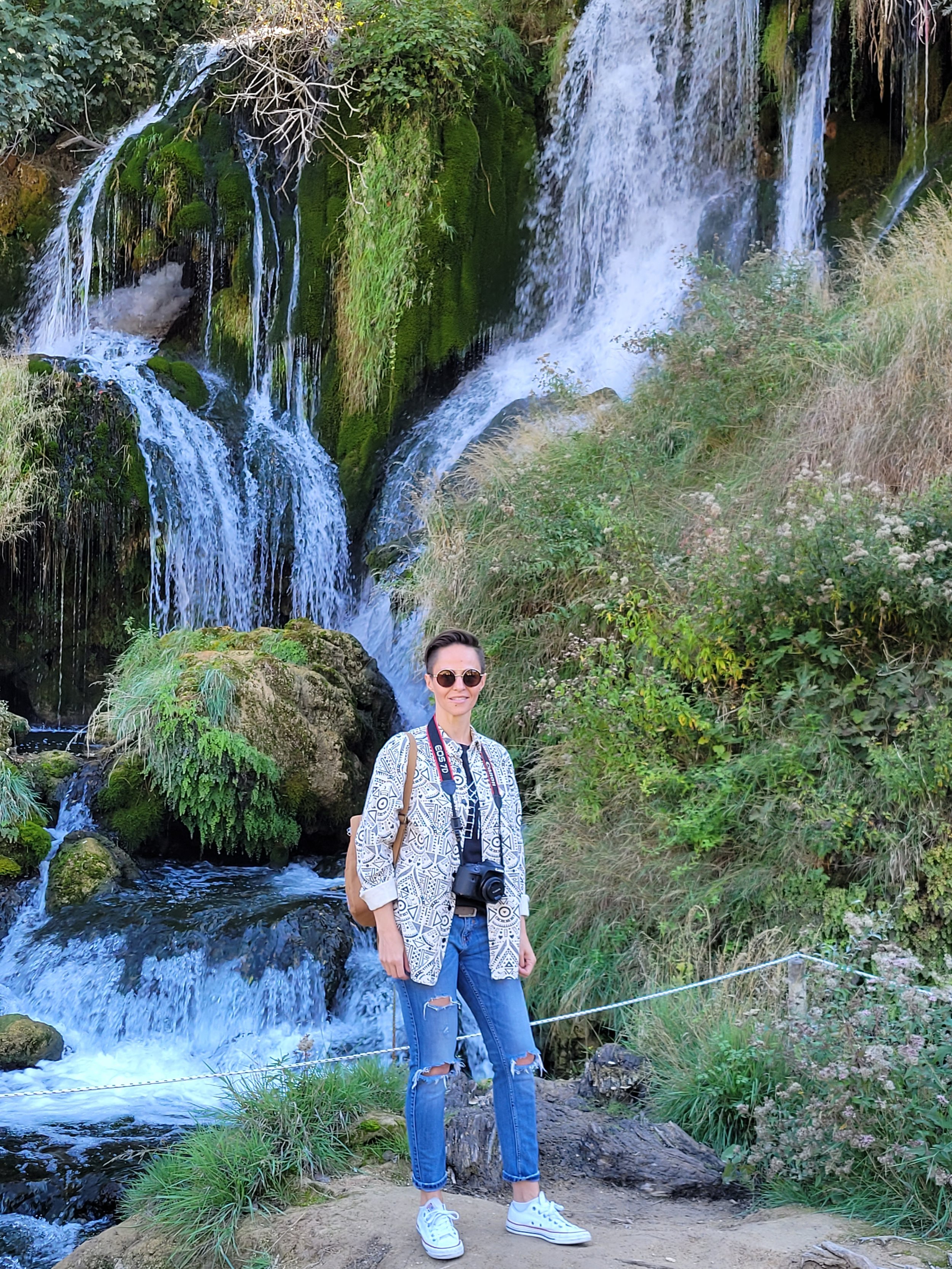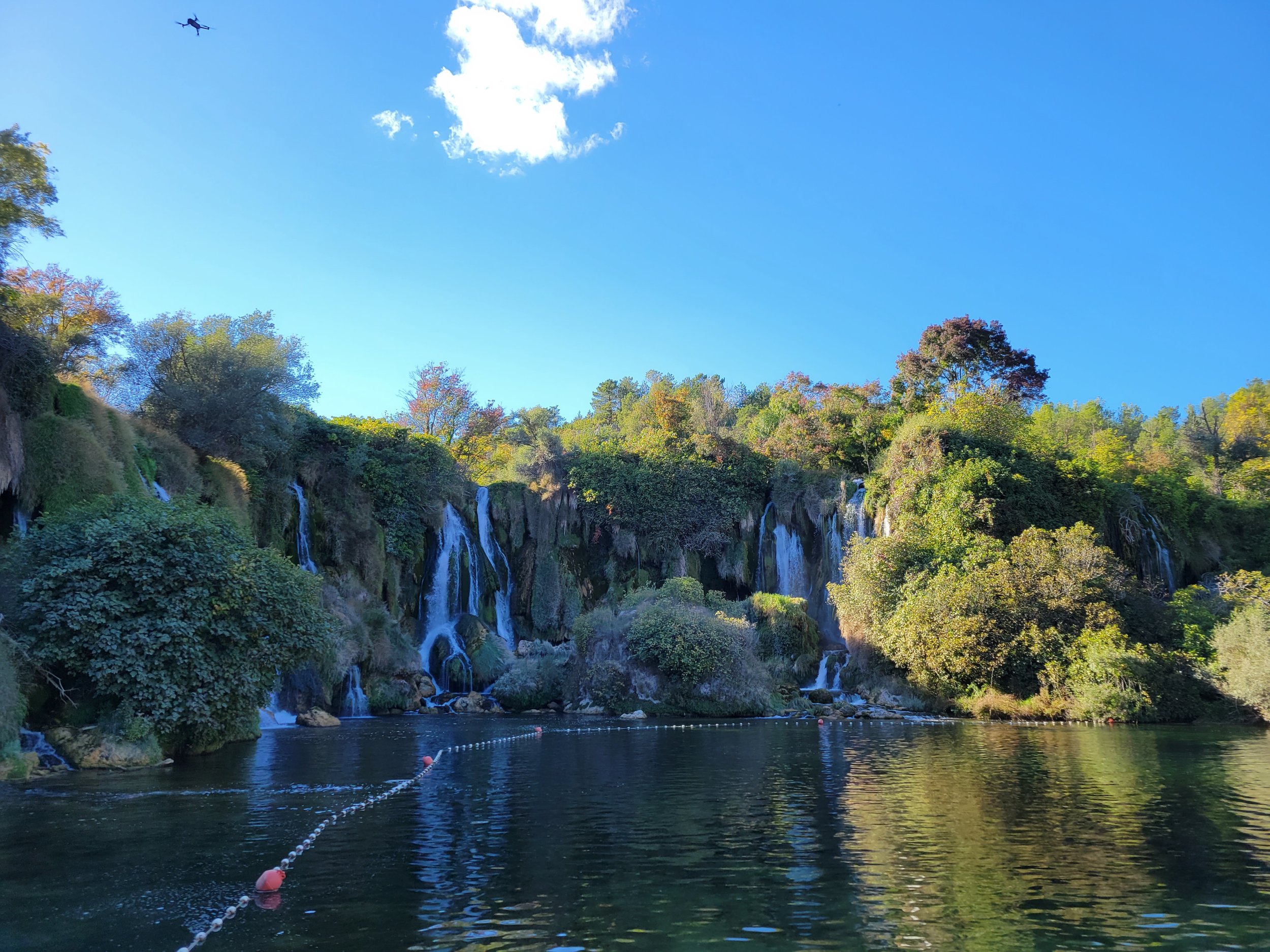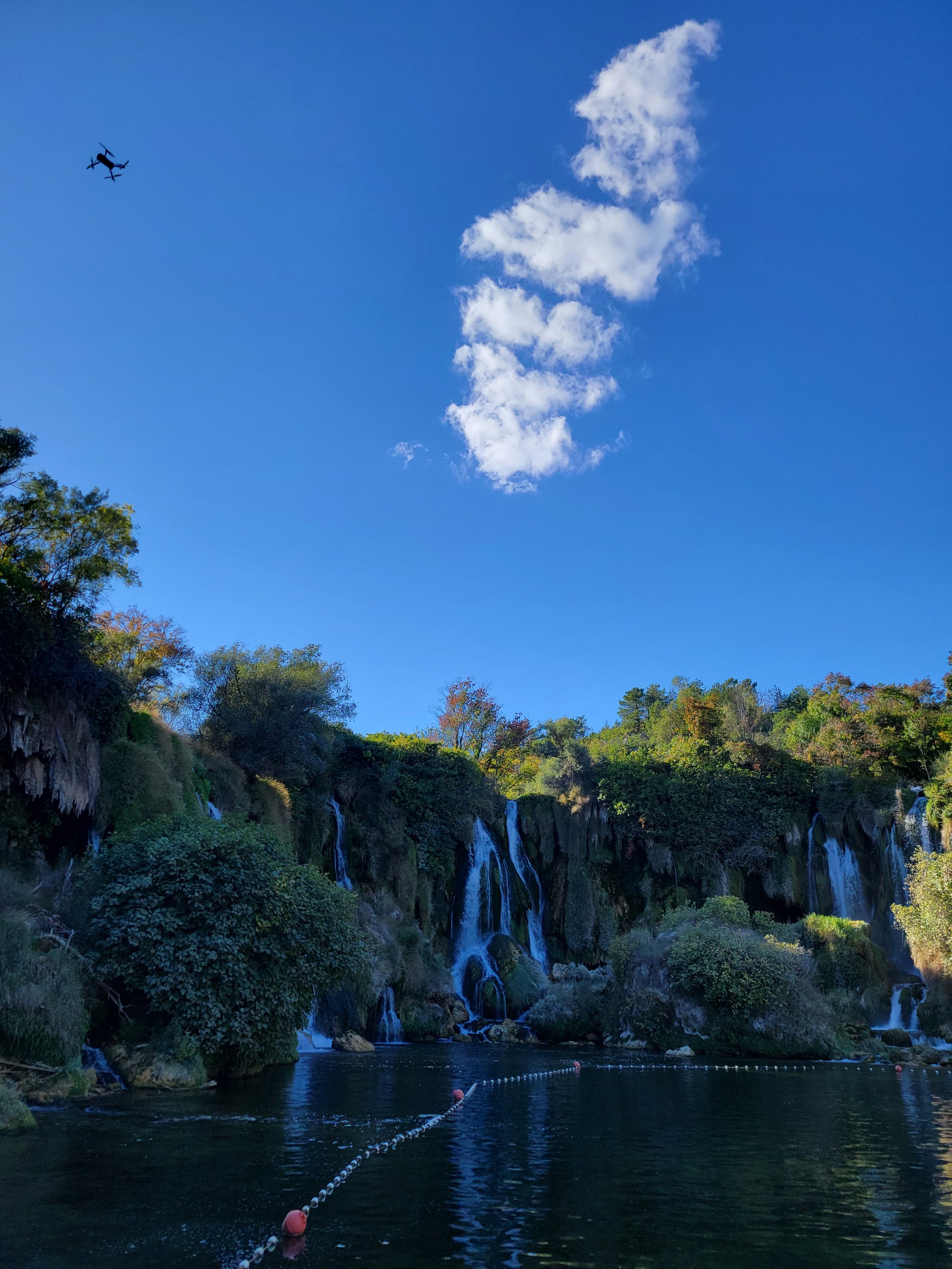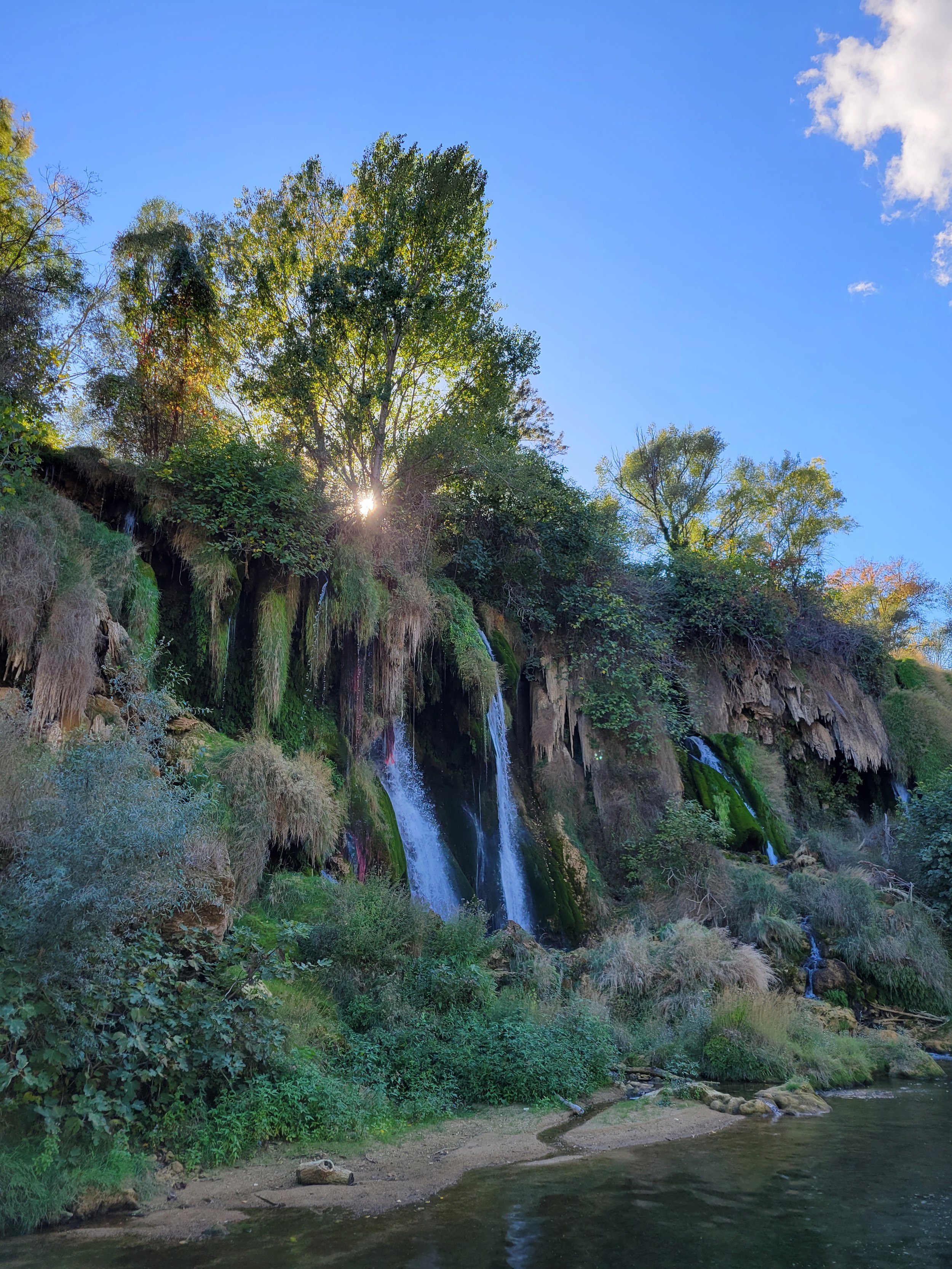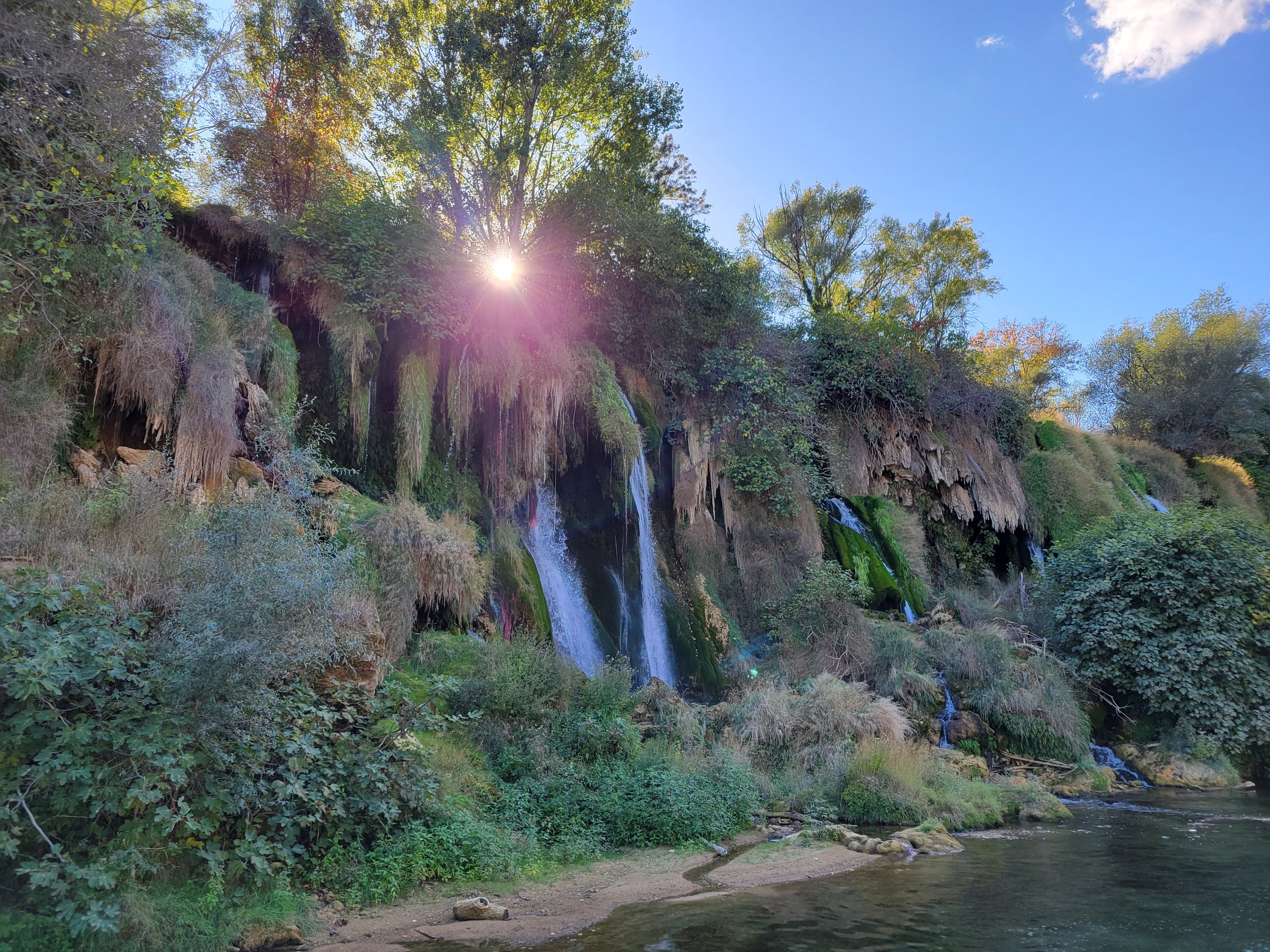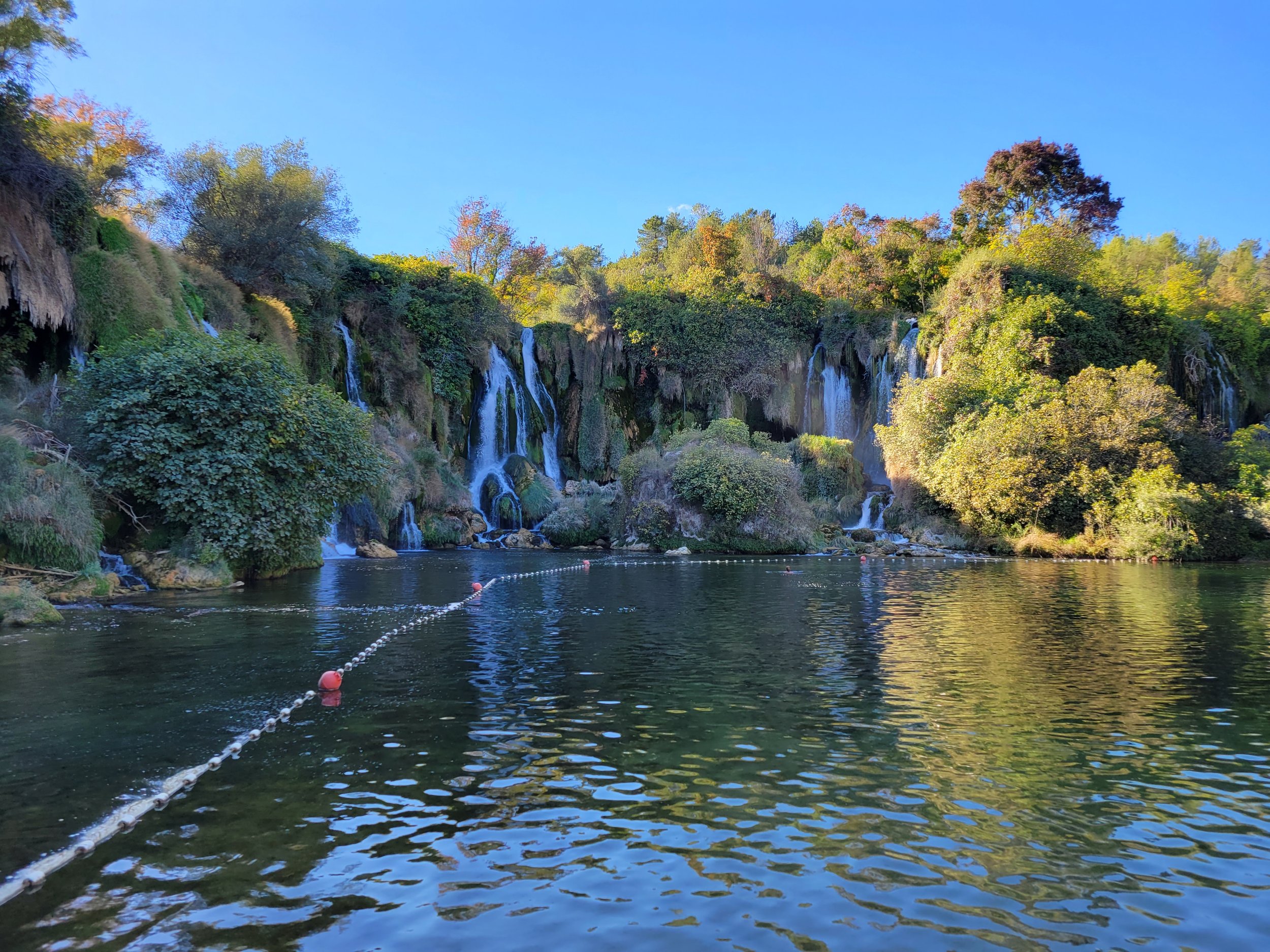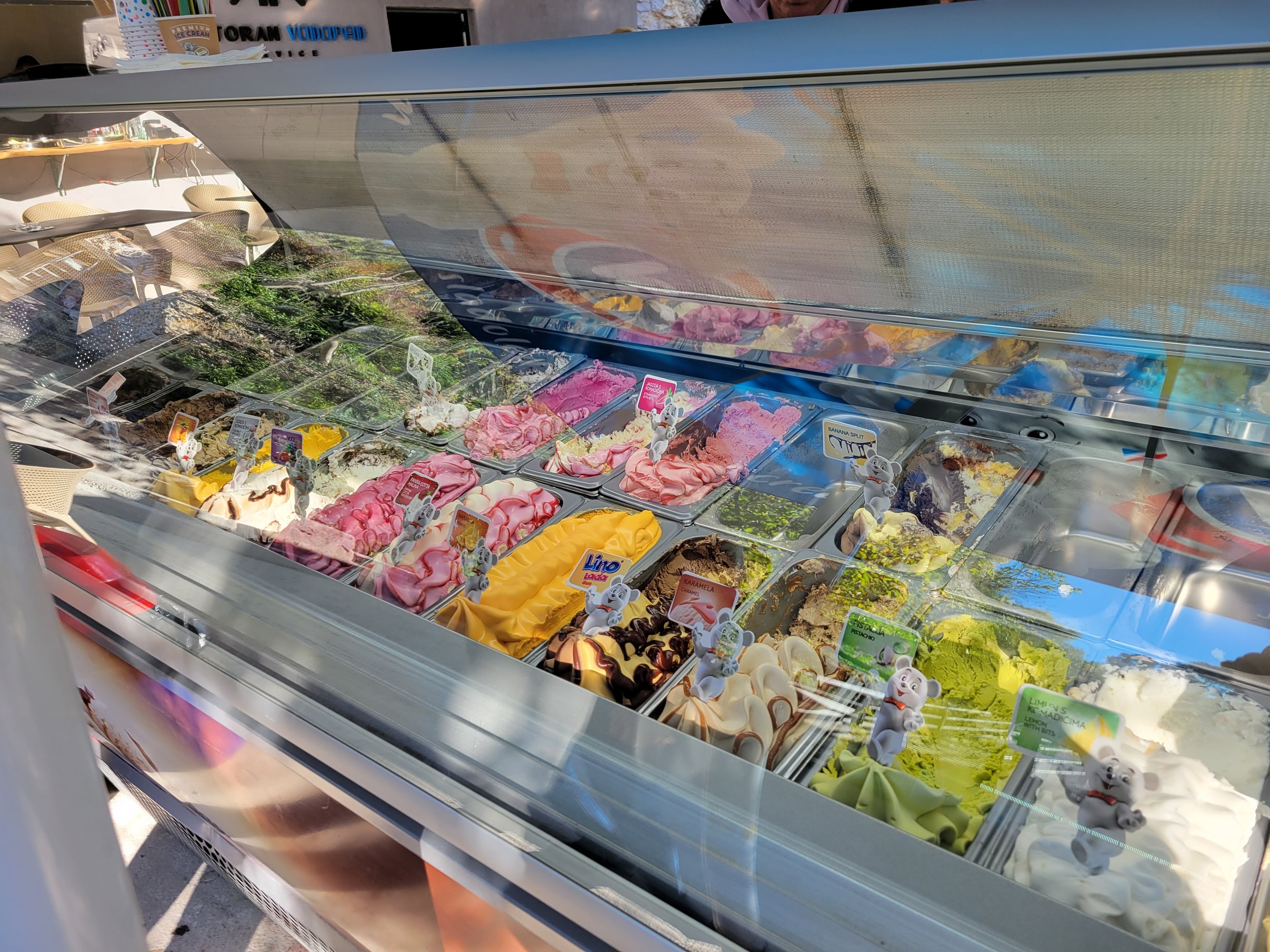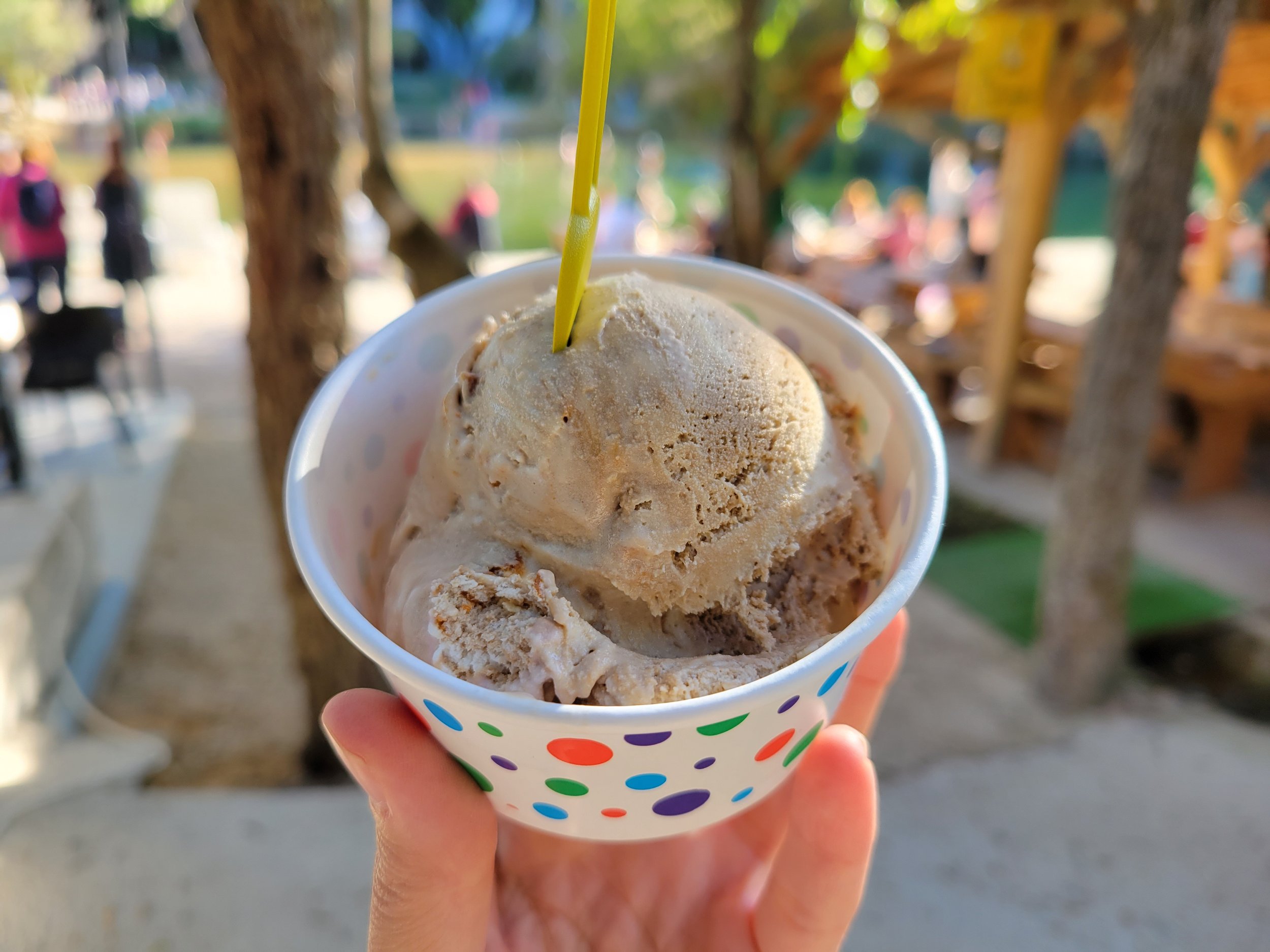Mostar, Bosnia & Herzegovina
Little Gem of the Balkans
Bosnia and Herzegovina, often known informally as Bosnia, is a country with a complicated past, riddled with turmoil. Located on the Balkan Peninsula in southeastern Europe, Bosnia and Herzegovina borders Serbia, Montenegro and Croatia with a narrow coastline along the Adriatic Sea. Its countryside is home to countless lakes and rivers, medieval villages and the majestic Dinaric Alps stretching across Southern Europe. Interestingly, B&H is also home to the Ottoman-era Latin Bridge, site of assassination of Archduke Franz Ferdinand which ignited World War I.
Mostar, one of Bosnia and Herzegovina’s most popular destinations, is a small town situated on the Neretva River. The town is named after the bridge keepers (mostari) who watched over the Stari Most (Old Bridge) during the Ottoman era. A UNESCO World Heritage Site commissioned by Suleiman the Magnificent during the 16th century, the stone bridge only adds to the charm and character of this dreamy fairytale-like town. Bumpy cobblestone streets are lined with quaint gift shops and restaurants and if you’re lucky you’ll find a narrow staircase leading up to the Koski Mehmed-Pasha Mosque’s minaret for panoramic views.
My trip into B&H was a last minute addition to my two week holiday through Croatia and Montenegro. After flying from LAX to Dubrovnik, the Pearl of the Adriatic, I booked a day trip into B&H, the little gem of the Balkans. Once returning to Croatia, I traveled north up the coast via ferry to Split, a Dalmatian Seaside City Brimming with Roman Ruins & Natural Splendor. While in Split, I spent a day at the Blue Cave & Island Hopping, then moved to central Croatia for Plitviče Lakes National Park. Passing through Croatia’s capital, Zagreb, I flew into Podgorica, Montenegro’s capital city, landing in Adriatic’s Coastal Medieval Town of Kotor. From there, I joined day trips to both northern Montenegro’s Durmitor National Park, Tara Canyon & Ostrog Monastery and greater Montenegro’s Lovćen’s Mausoleum, Royal Old Capital & Skadar Lake.
Gain Insight to B&H History, Culture & Landscape
Taking a moment to focus on B&H’s history, extending back to the time of the Roman conquest in the first and second centuries BC. In the 6th century, Bosnia became part of the Byzantine Empire, with Herzegovina forming in 1448, joining Bosnia later under Turkish rule. After the Russo-Turkish War broke out in 1877, B&H was placed under the rule of Austria-Hungary but with its collapse following World War I, fell into the hands of Serbia.
During World War II, the country was incorporated into pro-Hitler Croatia, later becoming a state of Yugoslavia. Seeking to free themselves from Yugoslavia and avoid Serbian rule, Bosniaks and Croats voted for independence in 1991. Though the vote was recognized internationally, local Serbs and troops from Serbia fought to declare their rule, meeting resistance from the Bosniaks. War ensued for several years and resulted in two million displaced from their homes.
After the Dayton Agreement was established in 1995, war came to an end. Today, the treaty is enforced by NATO but what remains is a fractured state made of two independent regions, the Federation of Bosnia and Herzegovina and the Serb Republic of Bosnia Herzegovina. And because the country is home to three main ethnic groups, the Bosniaks, Serbs and Croats, in that order, the government’s legislature has two separate assemblies and a three-member presidency with one member from each ethnic group. However, central government's power is highly limited, as the country is mainly decentralized.
During the drive into B&H, our guide Dankko passionately described what it was like to live in Bosnia and Herzegovina during the recent past, along with its relationship to Croatia. As a former soldier of the war, Dankko was born in Croatia but grew up in Sarajevo, the capital of B&H. His personal perspective stressed that Bosnia and Herzegovina is one country with two names that had such a tumultuous past because of its location, located strategically for attack, giving control to both the east and west. He noted, war was especially tough because many had to fight against their friends due to religious differences. Turks would even take healthy children to fight so parents would injure their children to keep them at home.
Dankko also described the current B&H as very poor and uneducated. He remembers it being a lively active city but population has diminished over the years for a number of reasons. First, the local tobacco factory providing many locals with work has closed. Second, local gangs formed violent armies killing many civilians and third, the government was overtaken with corruption. In the past, the government has also tried to control religious freedom. Pushing people toward Muslim, instead of Christianity, they taxed families 3% if you were Muslim or 33% if you were Christian. My personal observation was that B&H felt incredibly deserted, like a ghost town without any life.
In regards to landscape, occupying the northern and central parts of the country and believed to be derived from the name of the river Bosna that runs through the Bosnian heartland, Bosnia means “the running water.” Whereas, Herzegovina occupies the south and southwestern portions of the country, literally meaning “duke’s land” (hercegovina). Weather-wise, Bosnia and the surrounding mountainous regions have extreme weather with very cold winters, lots of snow and Olympic-level skiing. Oppositely, Herzegovina experiences very little snow and has mild winters. There, the Mediterranean climate is ideal for growing fruit and vegetables. Mostar, where we were headed is a town in the Herzegovina region.
Stroll Through the Picturesque Town of Mostar
Getting to Mostar was simple. I purchased a day trip north into Bosnia and Herzegovina from Dubrovnik, Croatia. After entering Old Town through Pile Gate, just before Onofrio’s Large Fountain head right toward a tourist shop which sells day tours for $55 USD. My instructions were to meet near Amerling Fountain the following morning at 6:45 a.m. and wait for our driver. By 7 a.m. our guide arrived and directed us onto a large bus and after a handful of pickups heading out of the city, we were nearly 50 people.
On the drive, we passed an oyster farm. It was a small bay with both mussels and oysters and I believe the one where my favorite family-run seafood spot in Dubrovnik, Edulis Oyster Bar, harvests their oysters. After a few hours, we finally arrived at the border with most of the time spent waiting for others rather than on the actual drive. One by one, we stepped out of the bus to pass through immigration, each presenting our passports. After entering B&H, we stopped at a roadside cafe for coffee and a lite breakfast.
From the cafe it was another 45 minutes to reach the town of Mostar. Much of the way was spent driving along the Adriatic until we moved north. It was during this time our guide Dankko spoke emotionally about both Croatia and Bosnia and Herzegovina.
Upon arrival, we parked near the Peace Bell Tower, a landmark we wouldn’t dare miss upon return. The tower is the tallest structure in Mostar and located next to the Church of St. Peter and Paul, a Roman Catholic church with a monastery. Run by the Franciscans, it’s possible to climb the tower for panoramic views of the town (elevator also available).
Just a few minutes by foot was the picturesque town of Mostar. As we arrived, we joined a local guide named Gora. Incredibly kind and sweet, this young boy lead us through the slippery cobblestone streets lined with Turkish inspired goods and toward the famous bridge giving firsthand details about the town. Almost immediately, we came upon a smaller bridge named Crooked Bridge, or Kriva Cuprija.
Crossing the Radobolja, a small river running west of Neretva River, Crooked Bridge is the oldest single arch stone bridge in Mostar and resembles the larger bridge nearby, Stari Most. Dating back to 1558 during the Ottoman rule, it was destroyed by floods in 2000 and reconstructed the next year, financed by the Grand Duchy of Luxembourg and initiated a UNESCO World Heritage Monument.
The second bridge we came upon was Stari Most, also known as Mostar Bridge, and the most famous in Mostar. Stari Most was rebuilt from 2001-2004 after its predecessor, a 16th century Ottoman bridge crossing the Neretva River. Connecting the two sides of Mostar, the bridge had collapsed from bombings in 1993 during the Croat-Bosniak War whose damage (bullet holes) was still visable on many of the structures in town.
Earning its name from the bridge keepers called mostari who would historically charge a toll to cross the bridge, Stari Most stands nearly 80 feet high, 13 feet wide and 98 feet long. At each side, a tower protects the bridge; Halebija tower sits on the northeast and Tara tower on the southwest.
Old Bridge is considered an outstanding piece of Balkan Islamic architecture and was commissioned by Suleiman the Magnificent in 1557. It was designed by Mimar Hayruddin, a student and apprentice of architect Mimar Sinan who built many of the Sultan’s important buildings throughout the empire including those in Istanbul.
At the time, the bridge replaced an old wooden suspension bridge in poor condition. Taking nine years, construction began in 1557 and ended in 1566, first opening nearly 450 years ago. Thought to have been made with mortar and egg whites, not much else is known about this bridge, only that it has been referenced in various historical writings.
Our guide lead us up over the bridge to admire the stunning views of the river below. Note, use caution ascending the bridge as it’s quite steep and the stones are worn smooth, making them incredibly slippery. After some additional explanation, Gora left us to our own devices to wander for the next few hours. This lovely town of Mostar, the unofficial capital of Herzegovina, was packed full of colorful souvenir shops, restaurants and boutiques I couldn’t wait to explore.
I learned pretty quickly that as far as purchasing, most vendors accept local currency called marks, as well as euros. The kuna, the former currency of Croatia, was previously accepted but has since switched over to the euro as of January 2023.
Filled with Turkish inspired textiles, trinkets and snacks, the streets felt like those I’d seen exploring Istanbul, where East Meets West: One City, Two Continents. After browsing a few stalls, I picked up two beautiful cashmere scarves made locally for only $15 USD each. Unfortunately, I had a tough time using a card, so make sure to bring extra cash for souvenirs.
Hundreds of years old, worn and smooth, the cobblestone streets were my favorite. The color variation of each stone was beautiful, though walking along them needed to be done slowly and with care. The stones were in fact so bumpy that you could twist your ankle but mostly, it felt like a much needed foot massage more than anything.
At the edge of town were even better panoramic views of the famous bridge, which at the time was considered otherworldly and extremely rare. It was impressive to say the least and a technological achievement admired by many, even those passing through town.
“The bridge is like a rainbow arch soaring up to the skies, extending from one cliff to the other... I, a poor and miserable slave of Allah, have passed through 16 countries, but I have never seen such a high bridge. It is thrown from rock to rock as high as the sky.”
Mostar itself, was historically significant, a small village set at a strategic crossing of the Neretva River centuries before the Ottoman conquest of Bosnia. With an agricultural plain to the west, steep terraces to the east and infertile mountains surrounding the area, this tiny town nestled alongside an emerald river represented a multicultural and multiethnic community in B&H.
Mostar’s architecture, location along the river and the Old Bridge itself were all a symbol of tolerance between Muslims, Christians and Jews. Mosques, churches and synagogues existed alongside one another suggesting that in this region, the Eastern Orthodox Serbs with their facets of Byzantine culture, Roman Catholic Croats with their Western European ideals and Sephardic Jews lived peacefully with the Bosniak-Muslims for more than four centuries.
However, in 1993 the Croat-Bosnian War and surrounding conflicts destroyed much of the historic town of Mostar including the Old Bridge itself. With the help of UNESCO, the Old Bridge was rebuilt and eventually reopened in 2004, along with many of the structures in Old Town. Many of the pieces of the original bridge were recovered from the river and now line the banks as seating for spectators to watch the divers. Yes, that’s right. Diving off Old Bridge became a special tradition first recorded in 1664. Legend has it,16-year-old boys would jump from the bridge as a right of passage to prove they would amount to something in life.
The jump is not without dangers, with an 88 foot fall reaching up to 50 mph into the icy cold waters of the Neretva River below. One of the coldest rivers in the world, it reaches a chilly 44°F at the peak of summer and only has a depth of 15 feet near the bridge.
Since 1968, there has been an annual diving competition held every year but strangely you don’t need to be a local to attempt this feat. About 750 of the 2,000 divers have been tourists who joined the books of the Mostar Diving Club, only 10 of them women. The Mostar Diving Club acts as modern day keepers for the bridge and charges a fee for the jump, along with safety training. Locals will also collect money from the crowds that form and jump once they feel enough has been collected.
If you’re brave enough to complete the jump, you’ll receive a certificate and your name will be added to the record books kept at the diving club which have recorded every single jumper since the bridge’s reconstruction. You’'ll also be a member for life, meaning you can come back and jump again for free, all for about $30 USD.
Honestly, I can’t imagine jumping off the bridge into the shallow waters below. Standing above looking down, the river felt very far away. Looking down, crowds formed below, potentially waiting for a jumper but I wasn’t fortunate enough to witness one during my visit.
If you’re not up for the jump, you can spend the day shopping along the cobbled streets which are home to countless eateries, colorful bazaars and stunning mosques.
One of the shops overlooking the emerald river was filled with beautiful watercolor paintings and another with wonderful snacks perfect for a delicious charcuterie board, along with various local alcoholic beverages.
There were also ice cream shops selling all kinds of yummy flavors and tea houses resembling those in Southeastern Europe.
It’s a bummer we only had a few hours to explore, there were so many stops I didn’t have time to enjoy and I could’ve spent the entire day wandering through the streets.
Enjoy a Traditional Bosnain Meal of Ćevapi
For some local Bosnian food, Sadrvan was recommended by our tour guide as the best in town. Located on the righthand side just before the bridge, the restaurant was incredibly busy so I linked up with a few other girls from my tour. Though service was slow, we sat and ordered quickly.
To eat, I ordered ćevapi with pita bread, onion and a red tomato-based sauce with french fries. Ćevapi or ćevapčići is a dish of grilled minced meat traditionally found in Southeasten Europe. It’s considered a national dish of Bosnia and Herzegovina and Serbia and is also common in Croatia, Montenegro, Kosovo, North Macedonia, Slovenia, Romania and Austria.
The meal was very tasty but because we were running late we had to run out before eating our apple dessert, tufahije, but I was lucky enough to try it back in Dubrovnik later that evening.
Delight in Kravica Waterfall
After spending the afternoon in Mostar, we loaded back onto the bus and drove 45 minutes southwest to Kravica Waterfall. Kravica Waterfall is a large tufa cascade on the Trebižat River in the karstic heartland of Herzegovina in Bosnia and Herzegovina.
Tufa is a type of limestone formed when carbonate minerals precipitate out of water in unheated rivers or lakes. It’s highly porous creating a wet atmosphere where plants like moss and liverwort thrive. Tufa is commonly used in gardening and because of its soft easy to sculpt nature was used to build Roman walls in the 4th century BC. Karstic refers to a topography formed from soluble carbonate rocks like limestone, dolomite and gypsum dissolving. As bedrock dissolves, it creates sinkholes, sinking streams, caves or springs in the landscape.
After arriving, our group began the short hike to the falls. It was set at the bottom of a hill among a tree covered landscape. The walk down was easy, winding closer and closer to the falls. Alternatively, there is a small train offering rides for $1 USD each way, if needed. As we made our way down, small streams and pools of water began to appear alongside the path.
Near the bottom of the hill a vendor was selling an alcoholic beverage similar to wine in appearance. Offering a taste, I sampled a rich cherry drink and was pleasantly surprised. My guess is that it might have been brandy or something similar. Though really tasty, I was worried about transporting the large bottles so I had to pass on purchasing.
The further we made our way down, the greener the landscape became. Streams, ponds and small waterfalls began to surround us in all directions. And suddenly, it was possible to hear the rush of water up ahead. The waterfalls were close.
In an instant, the entire scene opened up before me. I had reached a small lookout point overlooking the waterfalls below and it was absolutely gorgeous. Forming a semi-circle around a large lake, countless falls flowed from above, appearing almost out of nowhere.
The height of the waterfall is approximately 80 feet tall with a radius at the top of the semi-circle reaching 390 feet in length. The best time of year to visit the falls is during springtime when the fall is at its fullest and the landscape is a lush green. But during the summer, the lower levels of water in the pool and under the waterfall allow visitors to go for a swim.
Kravica is a popular area for swimming and picnicking during the summer and is frequented by tourists and locals alike. The surrounding area also has a small cafe, rope swing, picnic area and campground. And during high season, nearby restaurants offer delicious meals of grilled fish and other specialties. Nearby, there’s also a grotto with stalactites made of calcium carbonate, an old mill and a sailing ship.
Once I landed on flat ground and reached eye level of the waterfall, that’s where the magic began. The clouds shifted in the sky allowing the light to shine through the trees just over the falls. It was breathtaking.
The further I explored, the more the area opened up, revealing even more falls that had been hidden behind plant life. I made my way over a small bridge to the other side of the pool, helping a few kind old women take photos along the way.
For the next hour or so, I wandered around the falls taking photos and enjoying the sunny weather. Others were posing for photos while the rest of the visitors relaxed, ate snacks or chatted with friends. Some were even brave enough to enter the icy cold waters for a swim.
On the opposite side of the pool, a skinny wooden plank formed a bridge to the other side of dry land. There, a few ducks were enjoying their time alone.
And I continued to explore, getting closer to the waterfall itself but only on dry land.
Though allowed to swim in the large pool, the areas near the falls themselves were roped off and out of reach. I’d imagine it was for safety reasons and to make sure guests don’t climb the rocks, especially since I didn’t see a lifeguard on duty.
I’d also imagine that during high season the falls are much fuller and the water level is higher, creating a different experience altogether.
Depending on my position, the view of the waterfall changed dramatically, particularly as the sun began to set.
My favorite area was the one farthest from the entrance and past the swimming area. The falls there were stronger and came pouring over the peak in streams of water in all different shapes and sizes.
From there, the falls moved in countless directions, bouncing left and right, as opposed to a single stream, and crashed against the moss covered rocks.
The scale of the falls was also impressive and the photos don’t give them justice.
As the day began to wind down, it was the shade covered areas that offered the most peace and quiet. And people visiting the falls began to disperse.
The entire day had been filled with gorgeous skies and still sunny weather. With shadow overtaking most of the waterfall, I began to head back over the bridges.
All in all, an incredible visit to some of the most beautiful waterfalls I’ve seen. It wasn’t the sheer height that was impressive but more the calm peace and beauty of the landscape.
To finish off such an incredible day, a sweet couple I’d met from LA offered me some ice cream that I couldn’t resist. My flavor of choice, caramel.
And with that our group hiked up the trail back to our bus and began the three hour drive to Dubrovnik. It was time to rest up or take a nap, as we’d arrive into town after dark.


